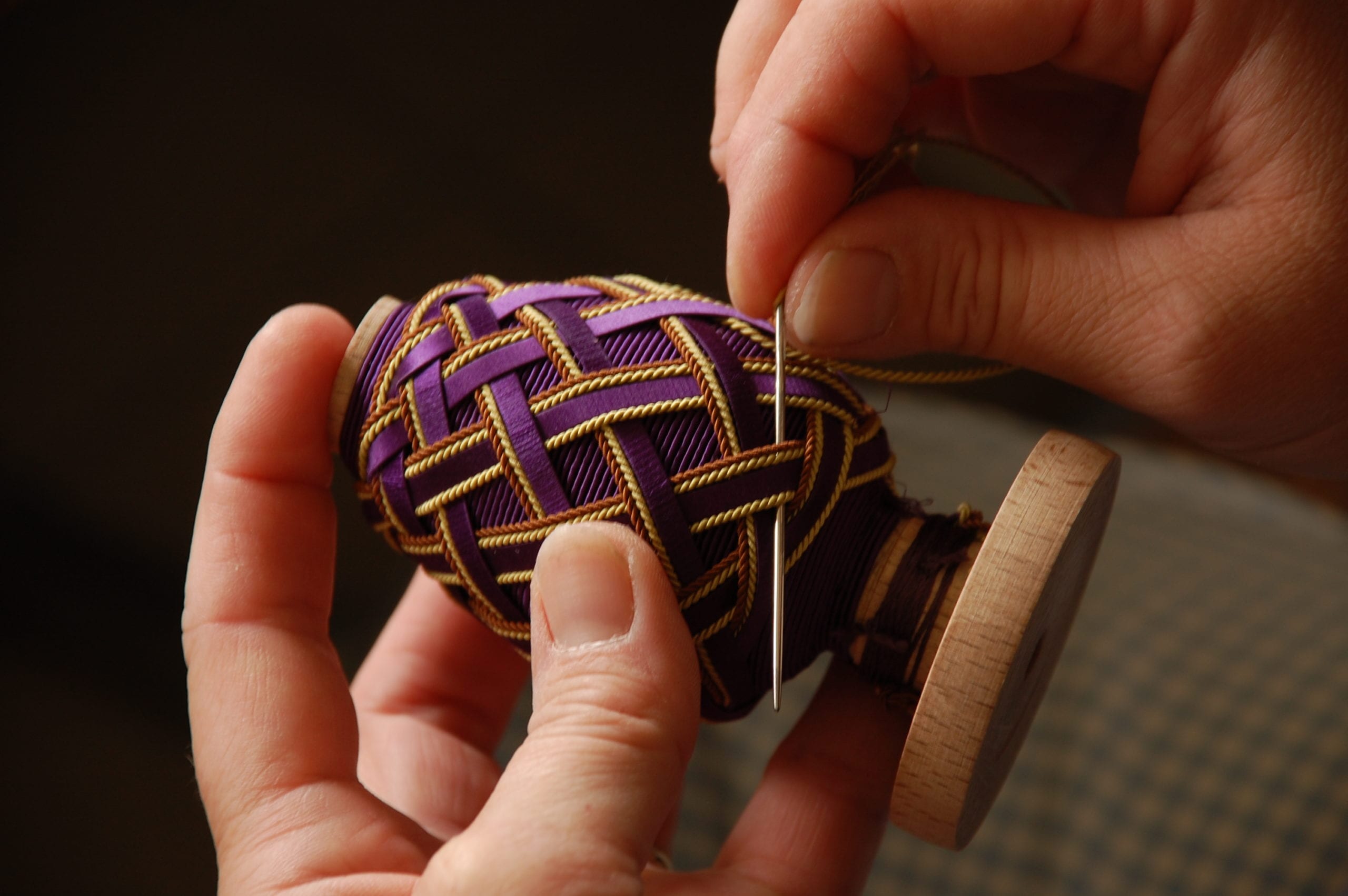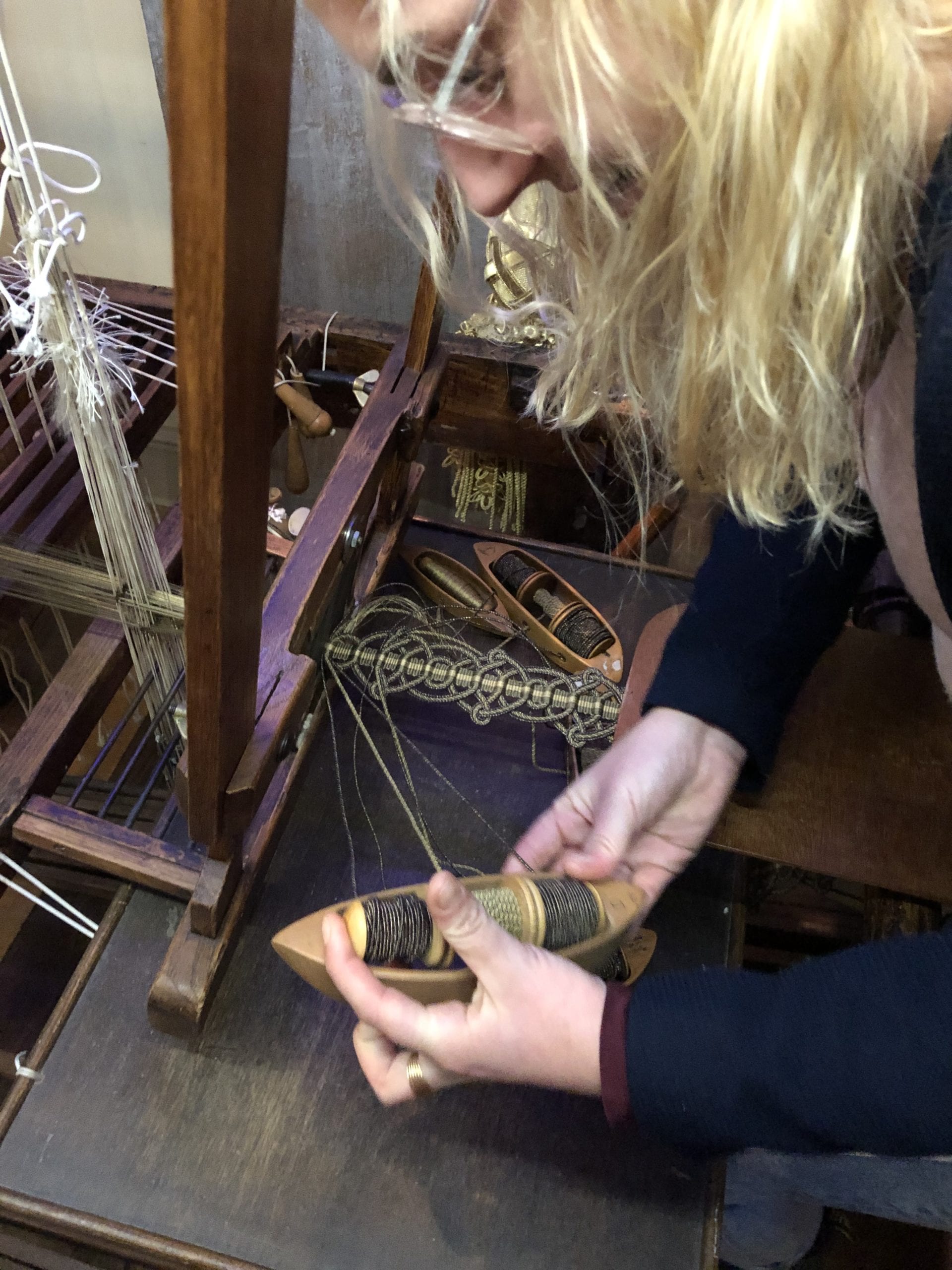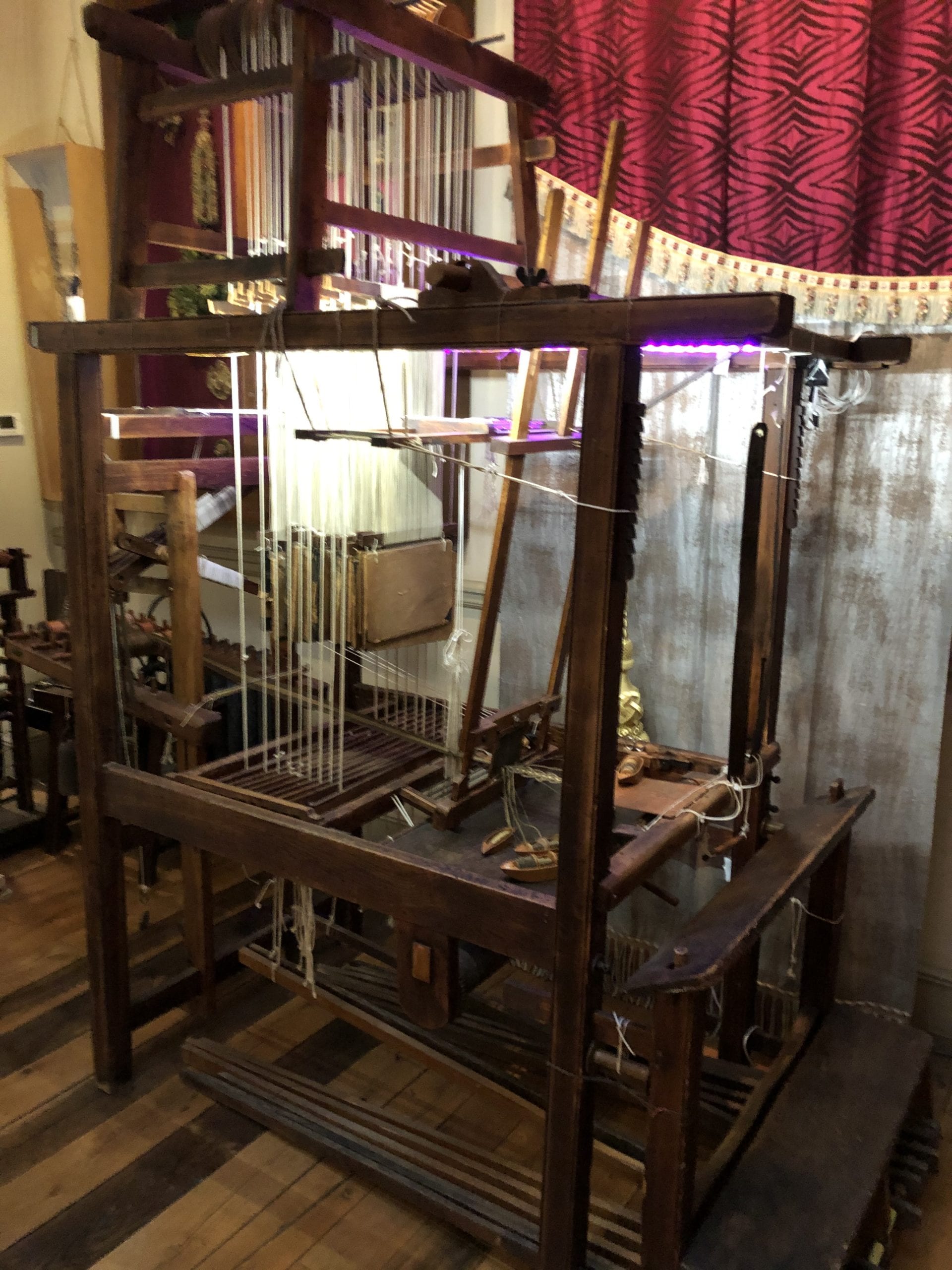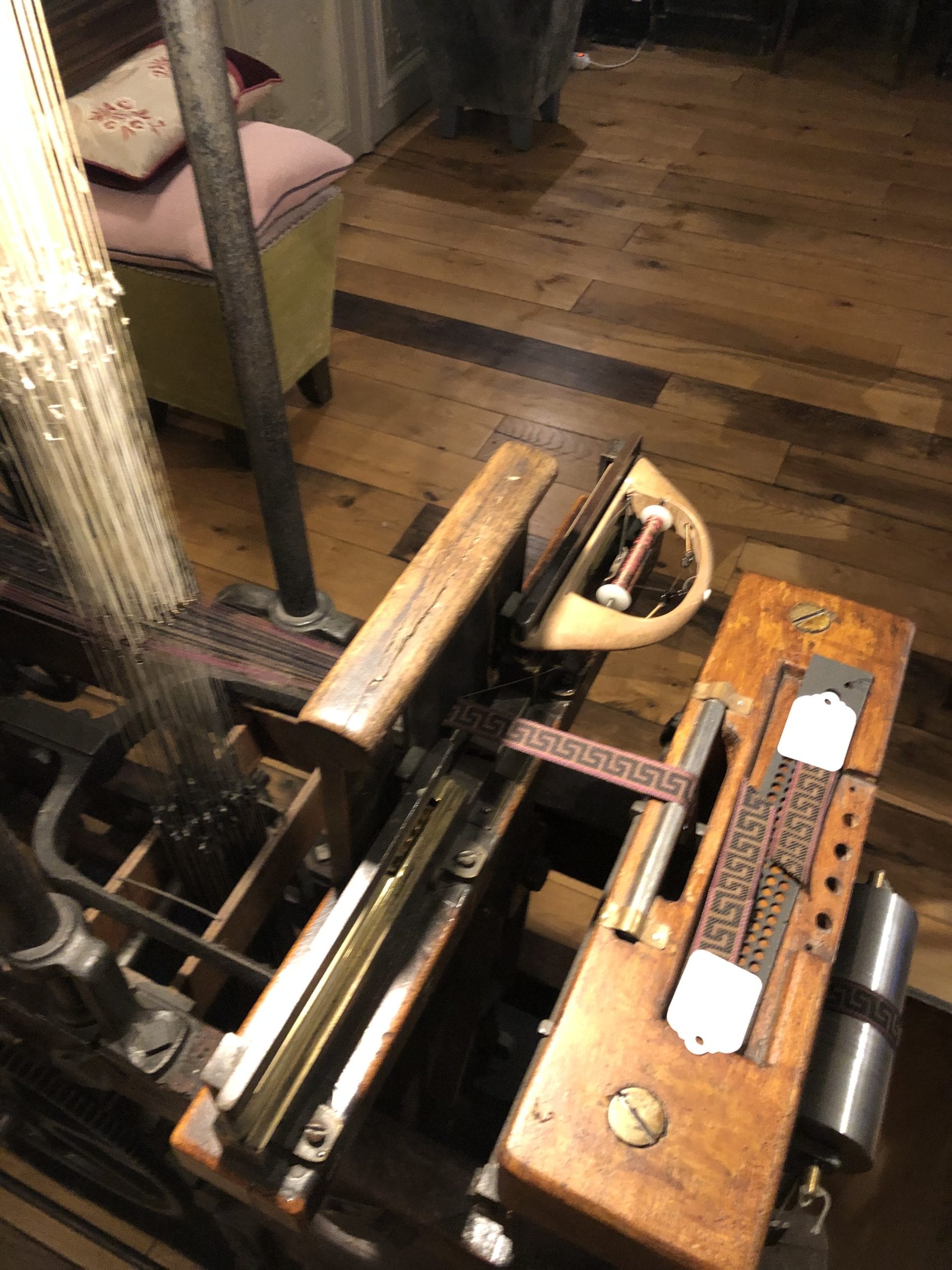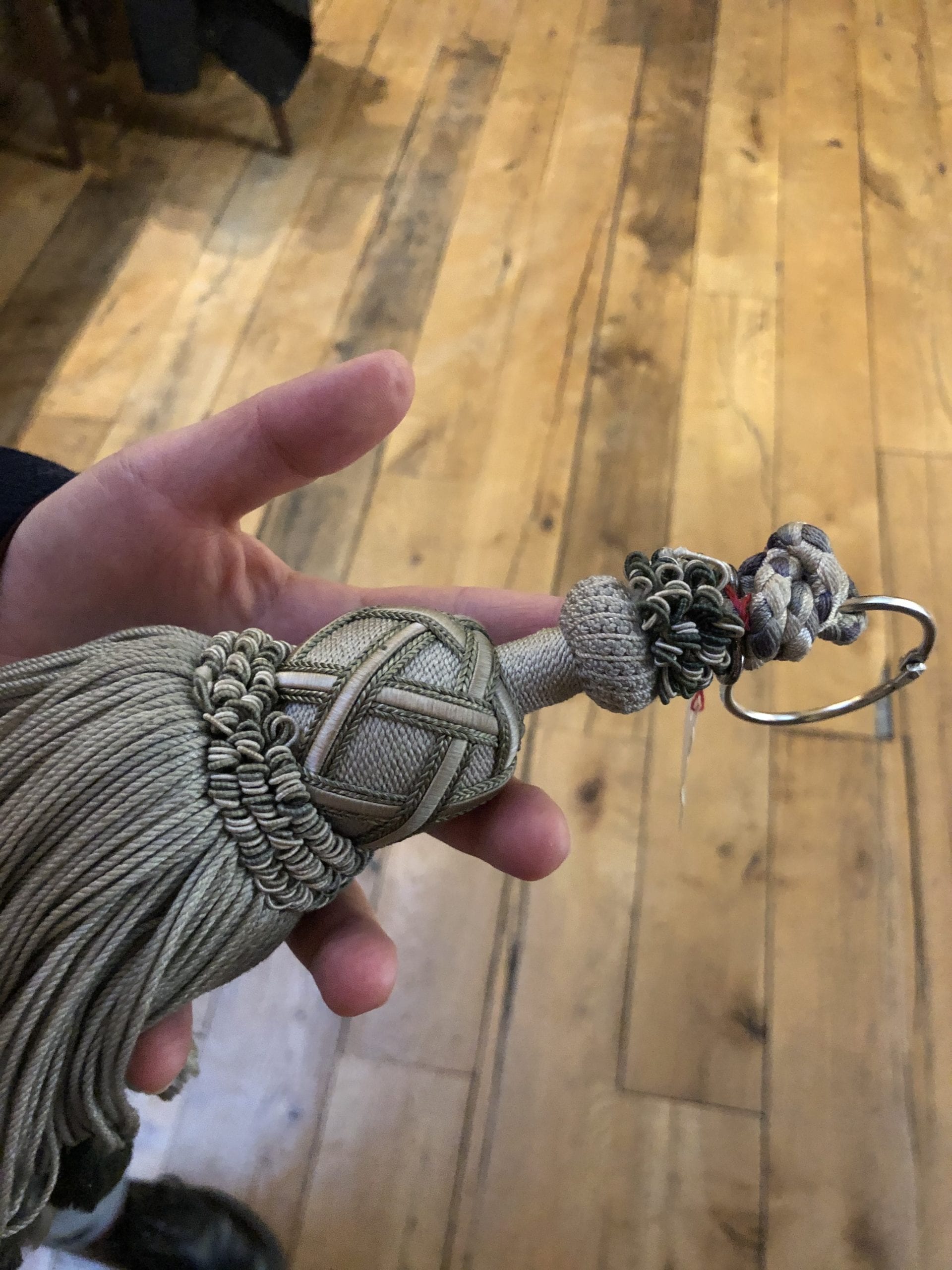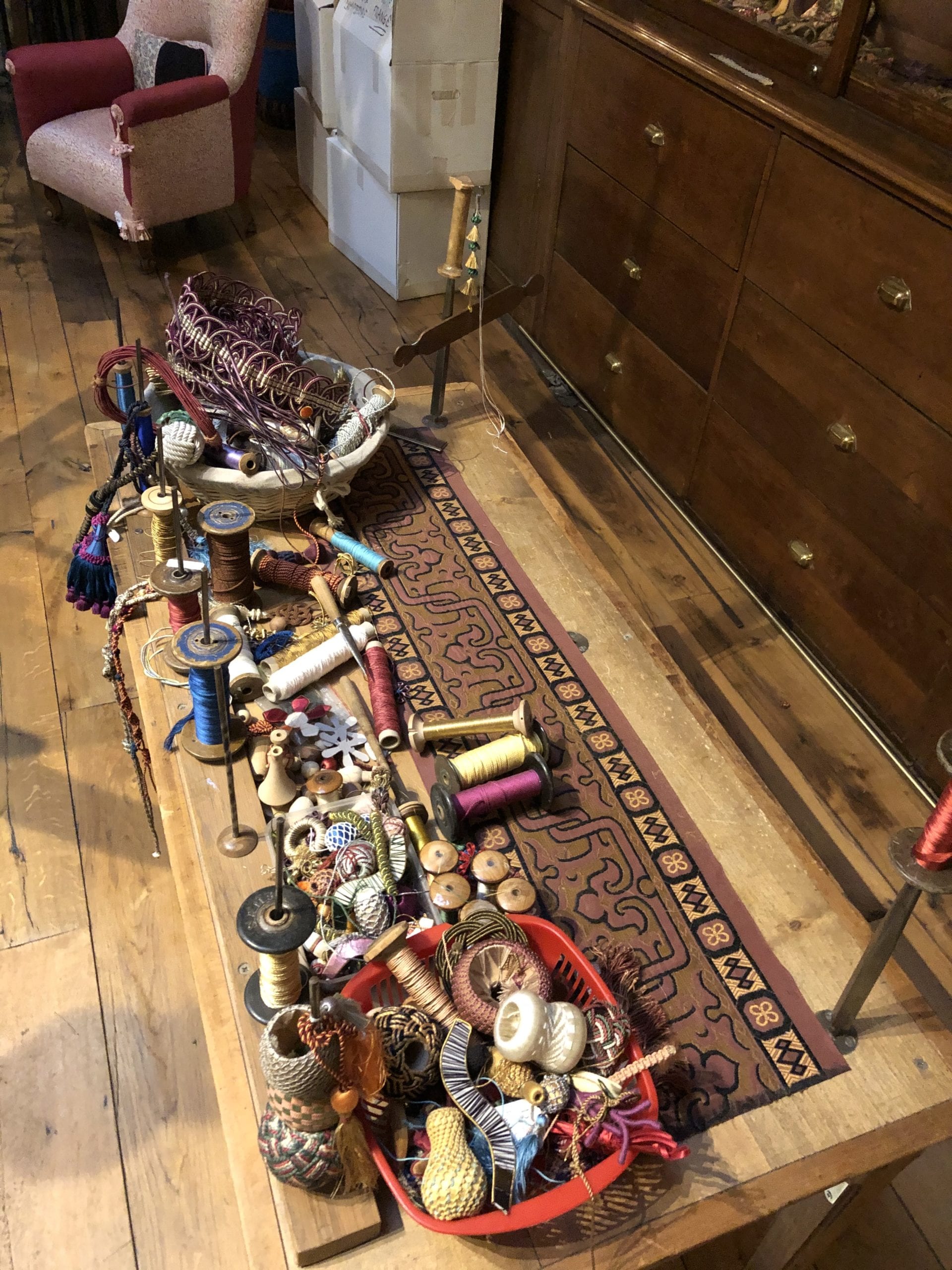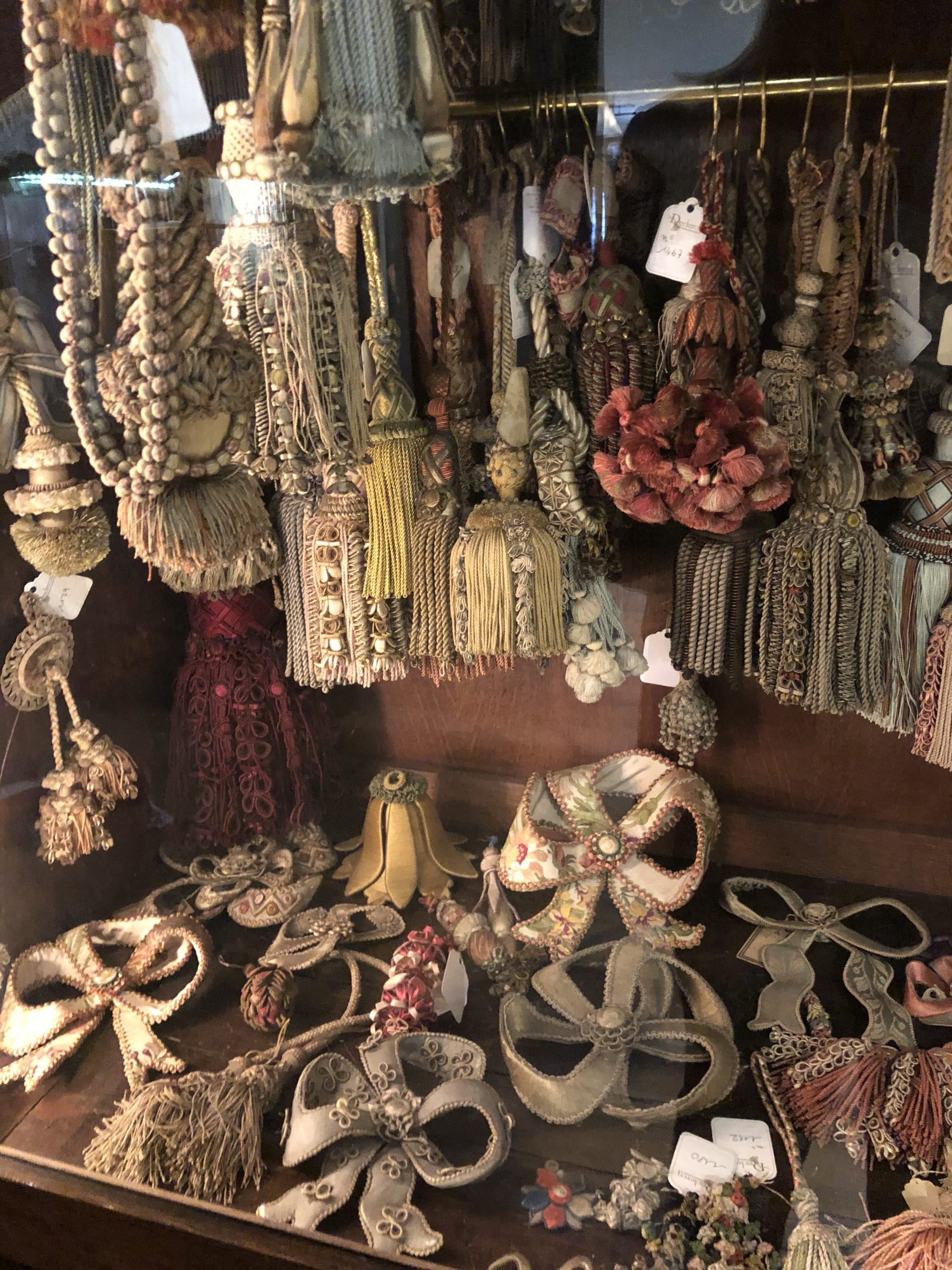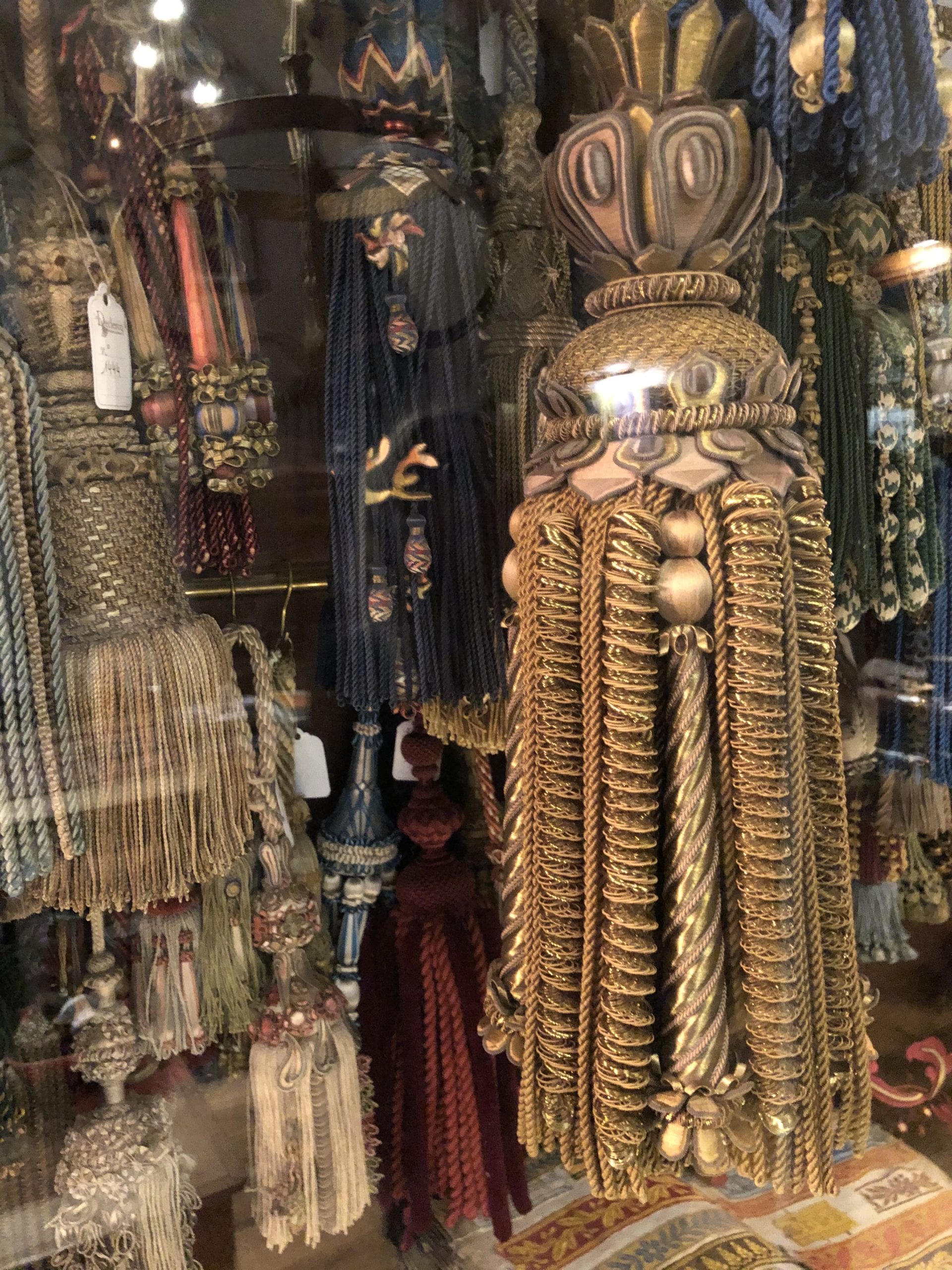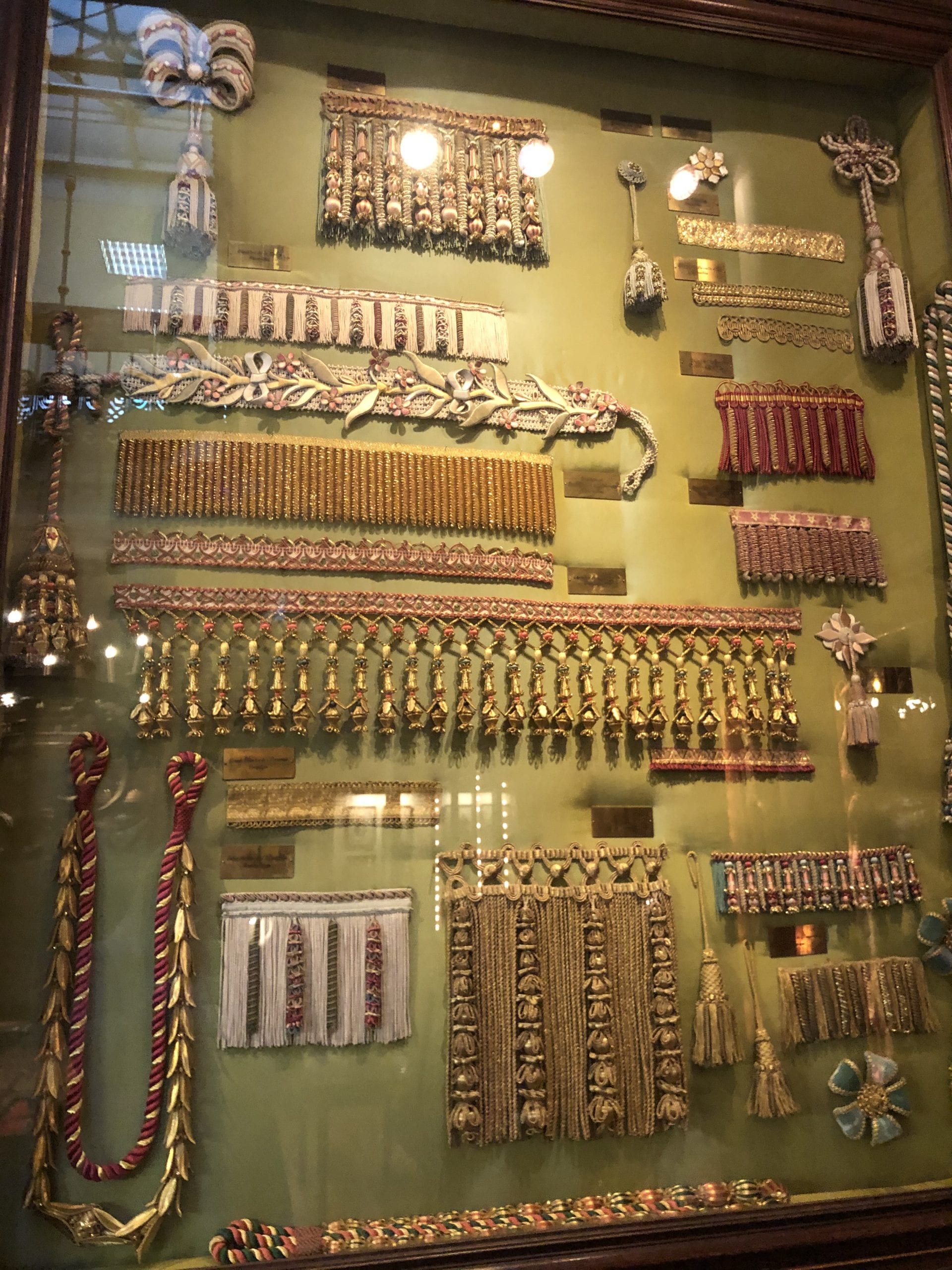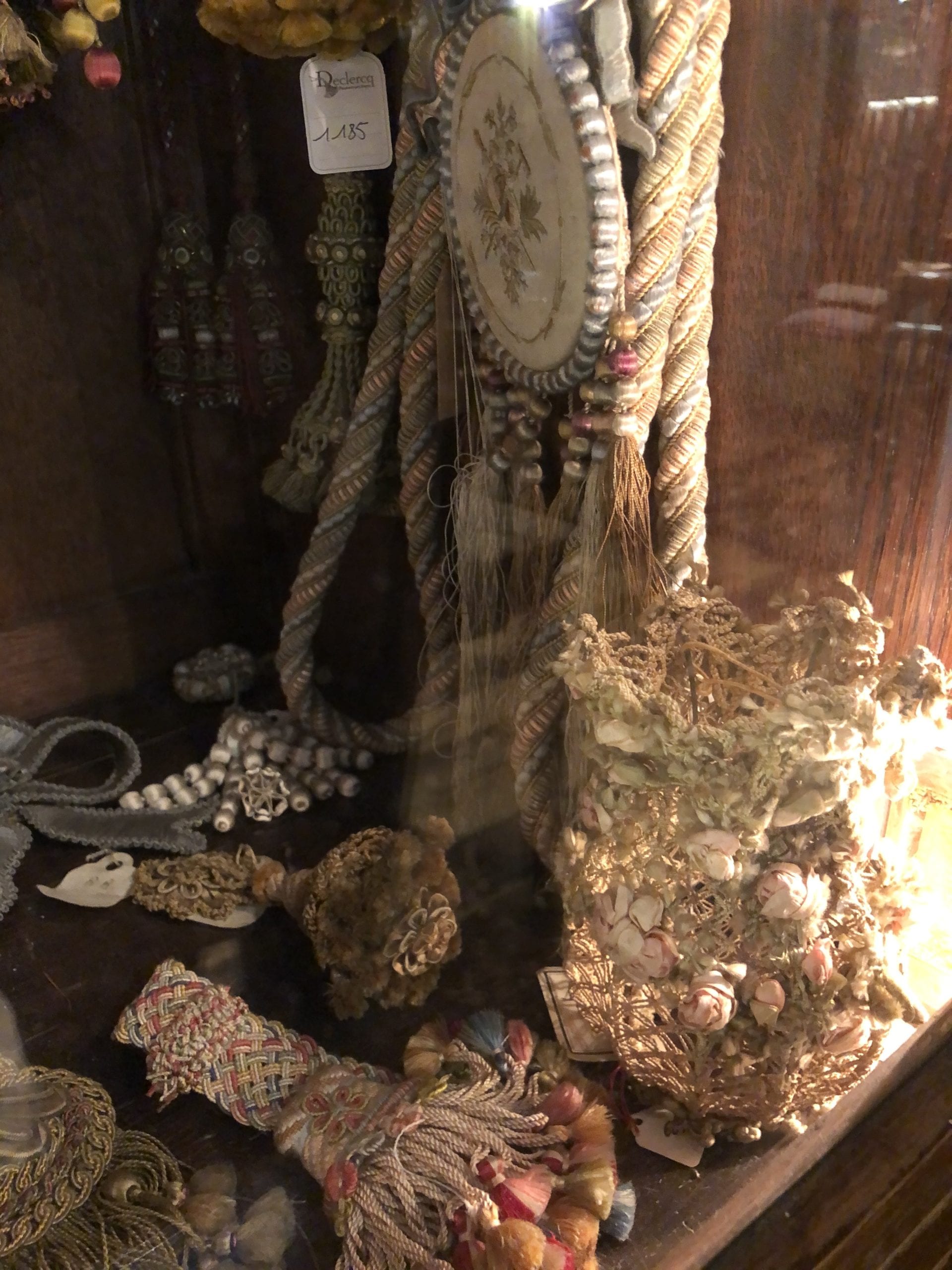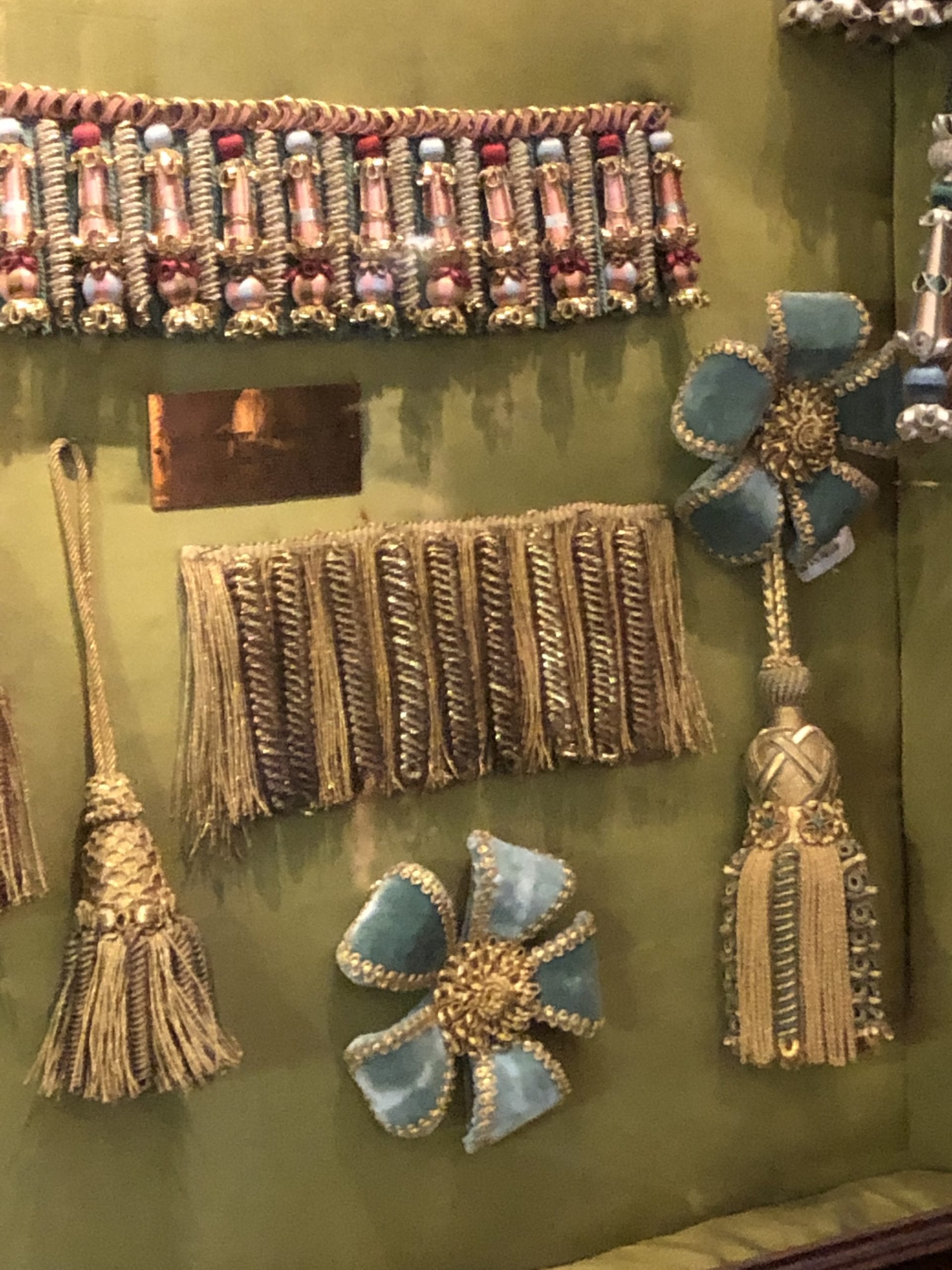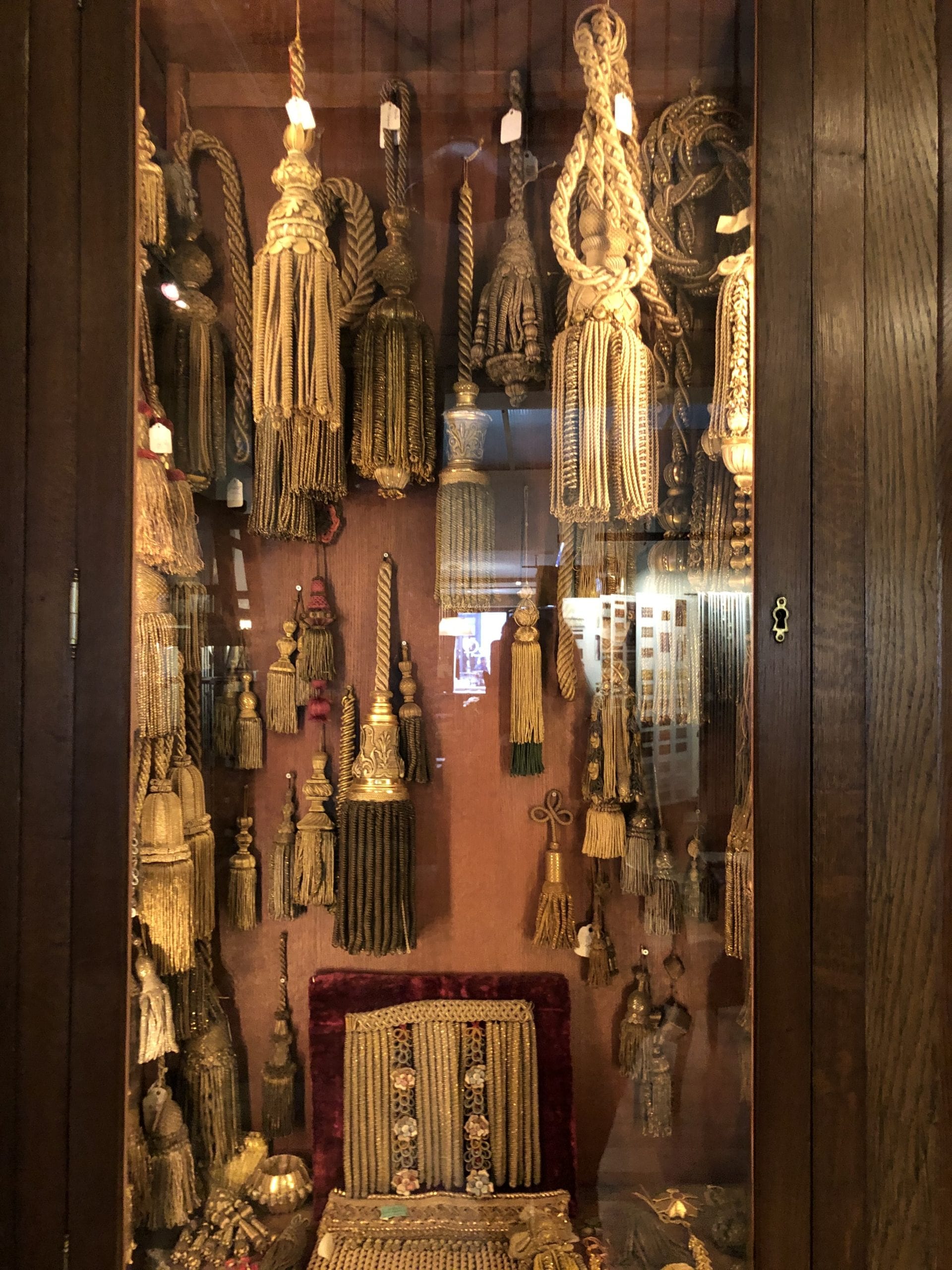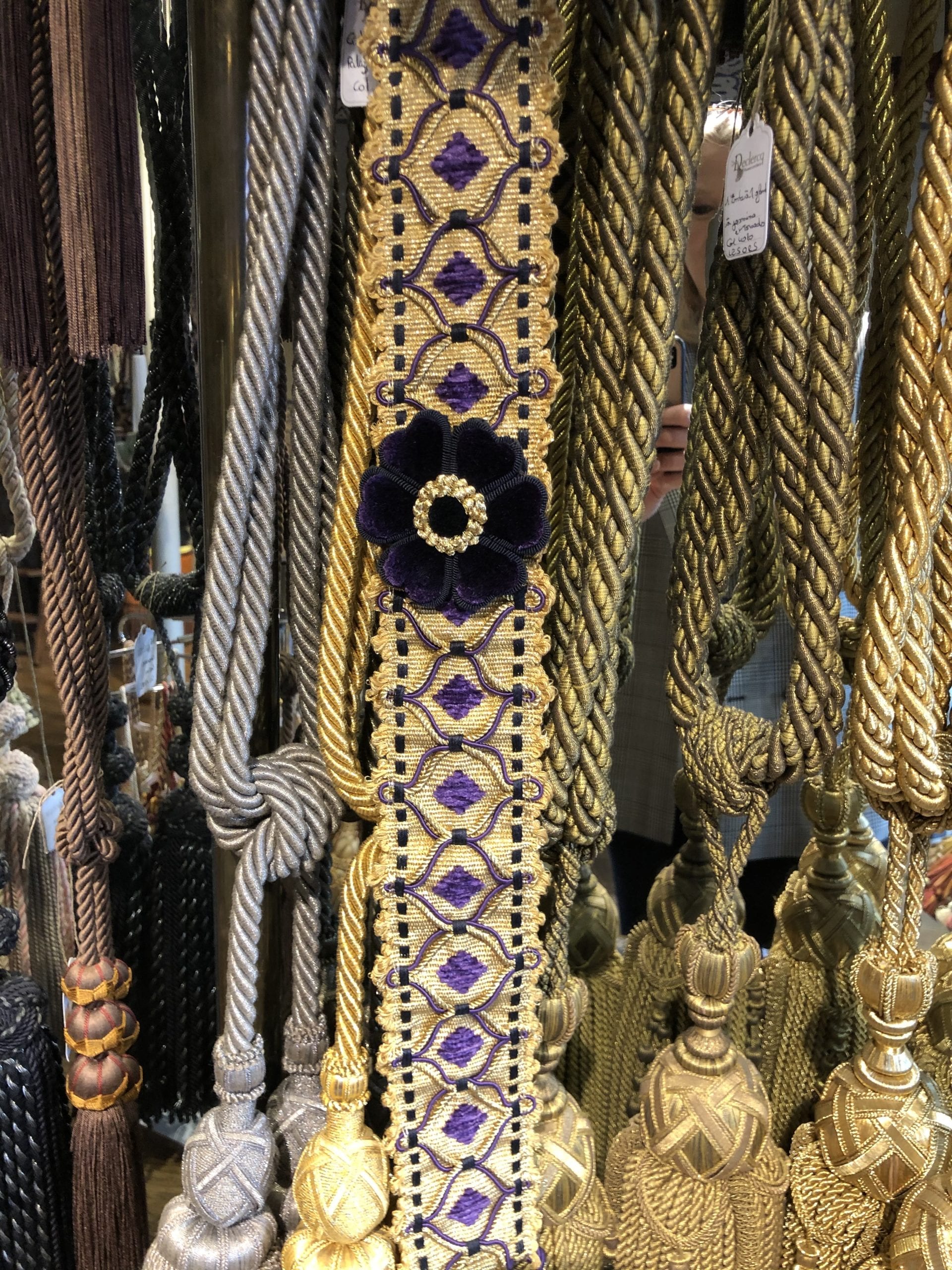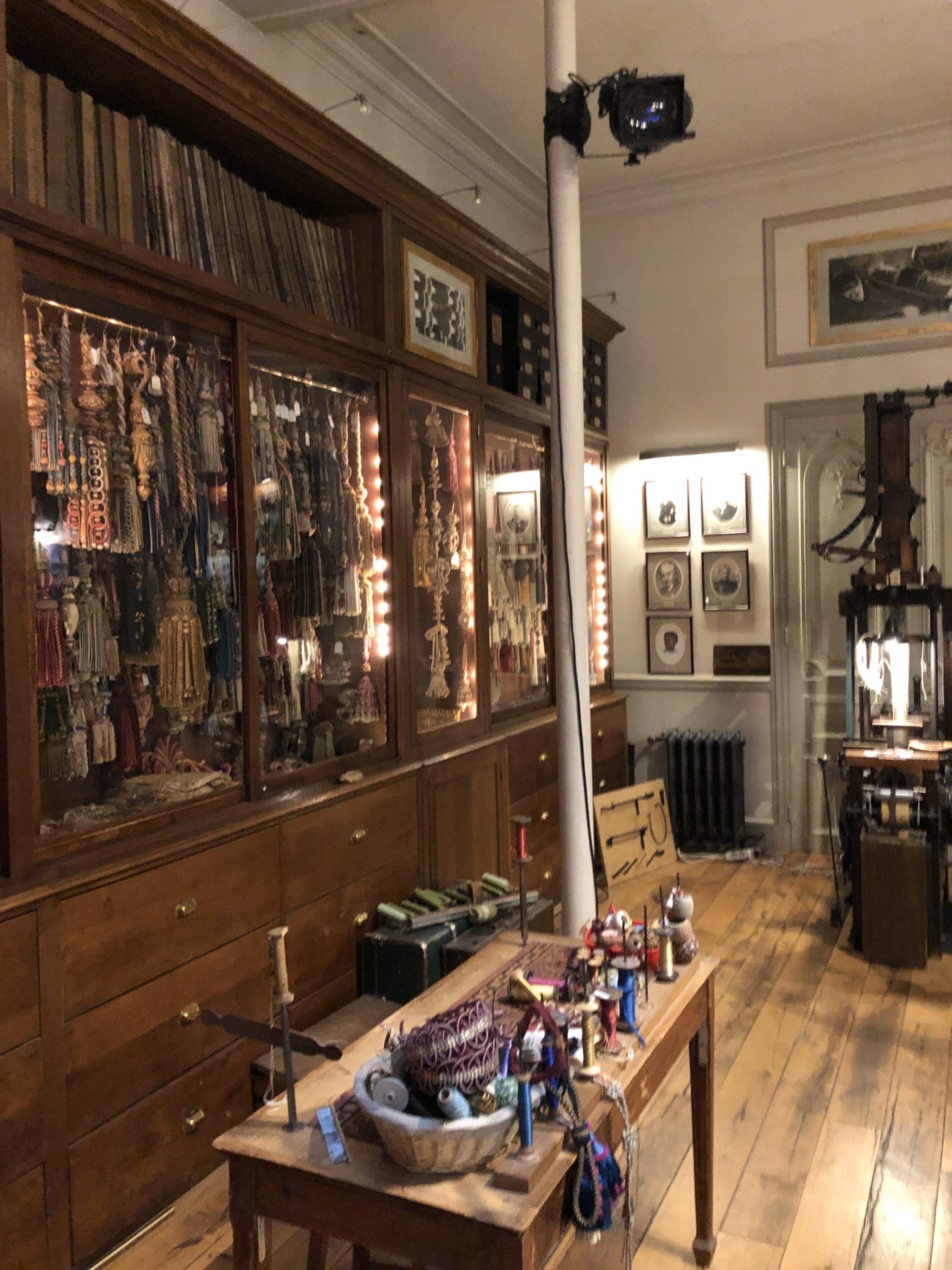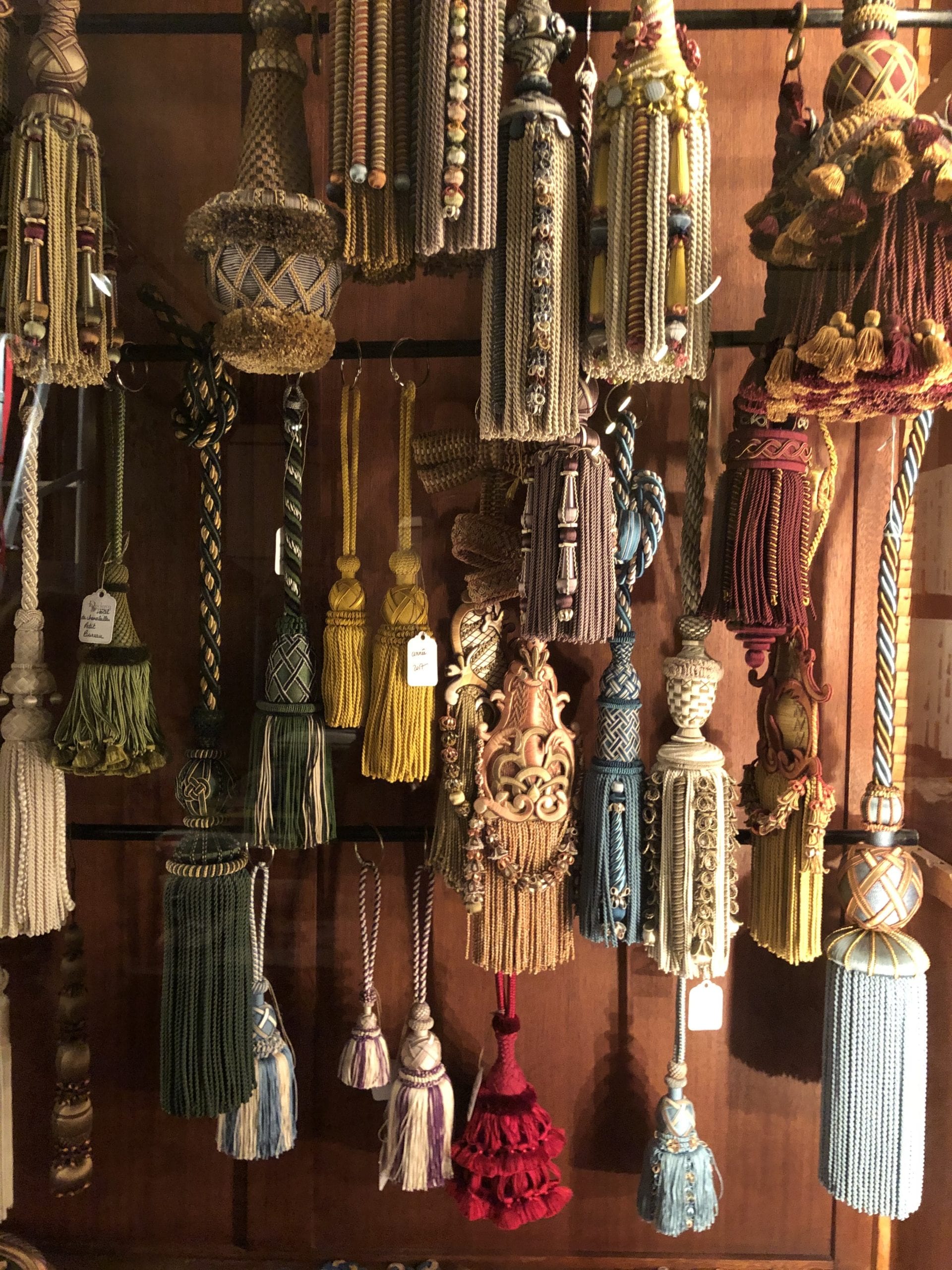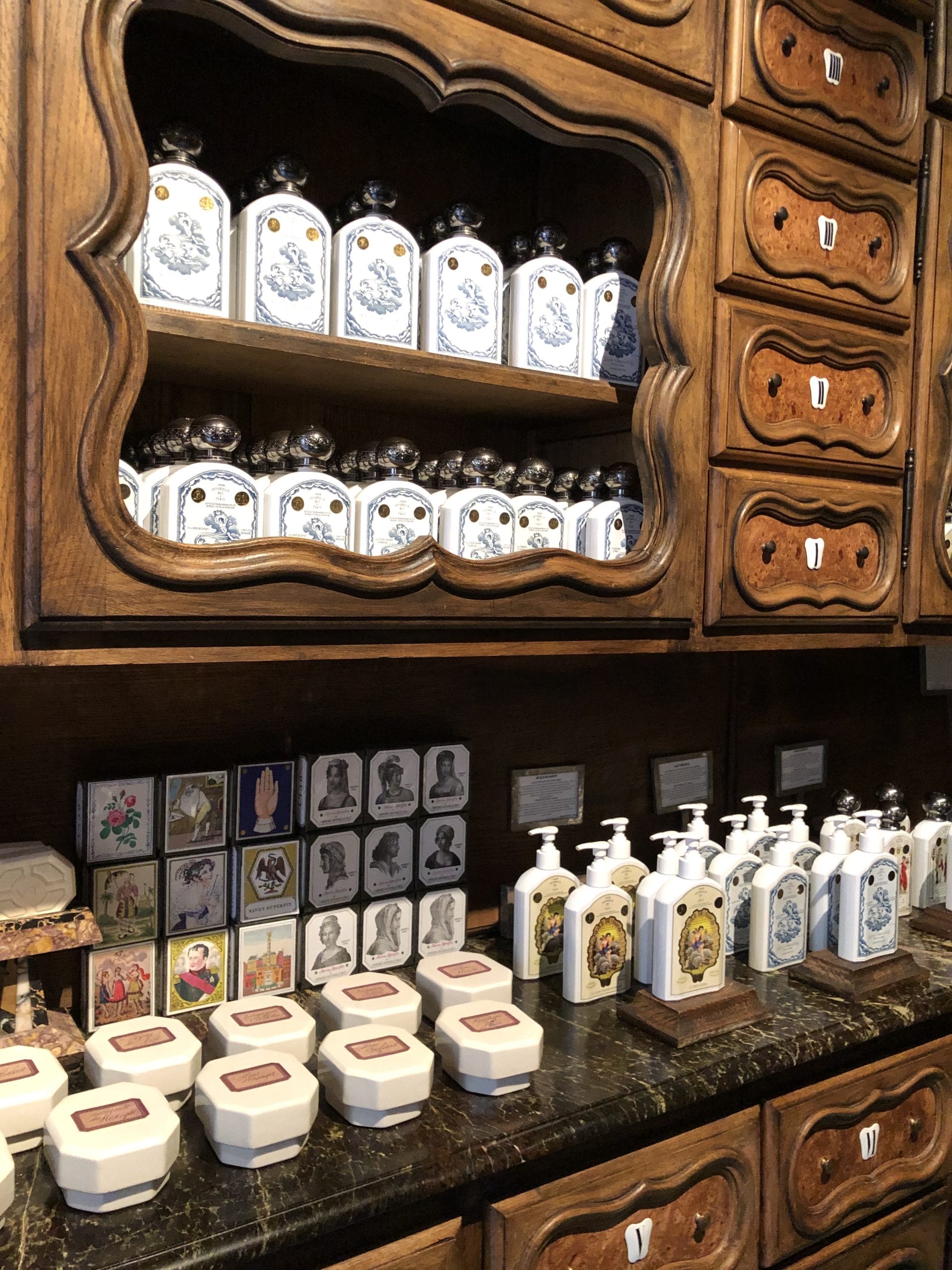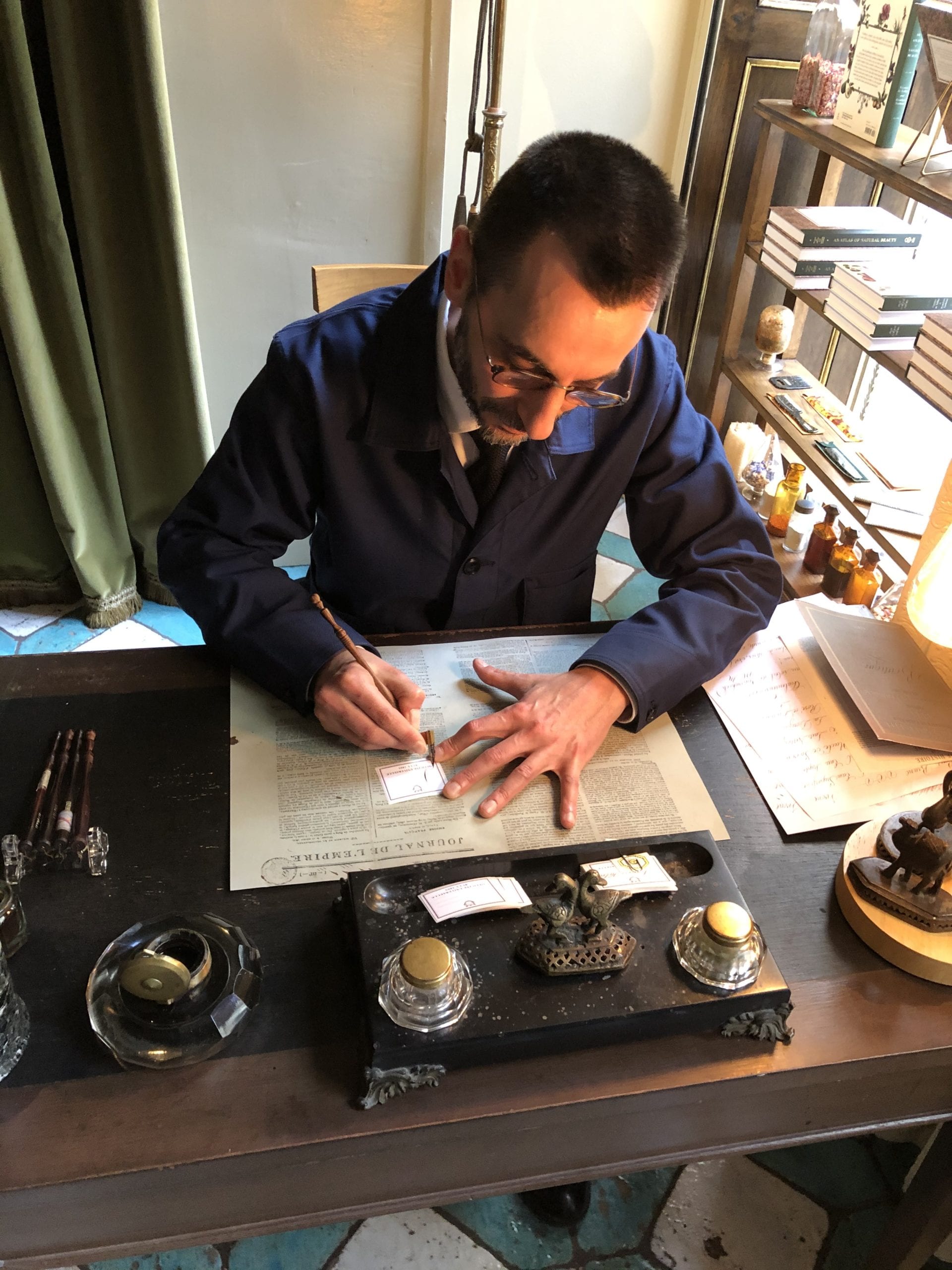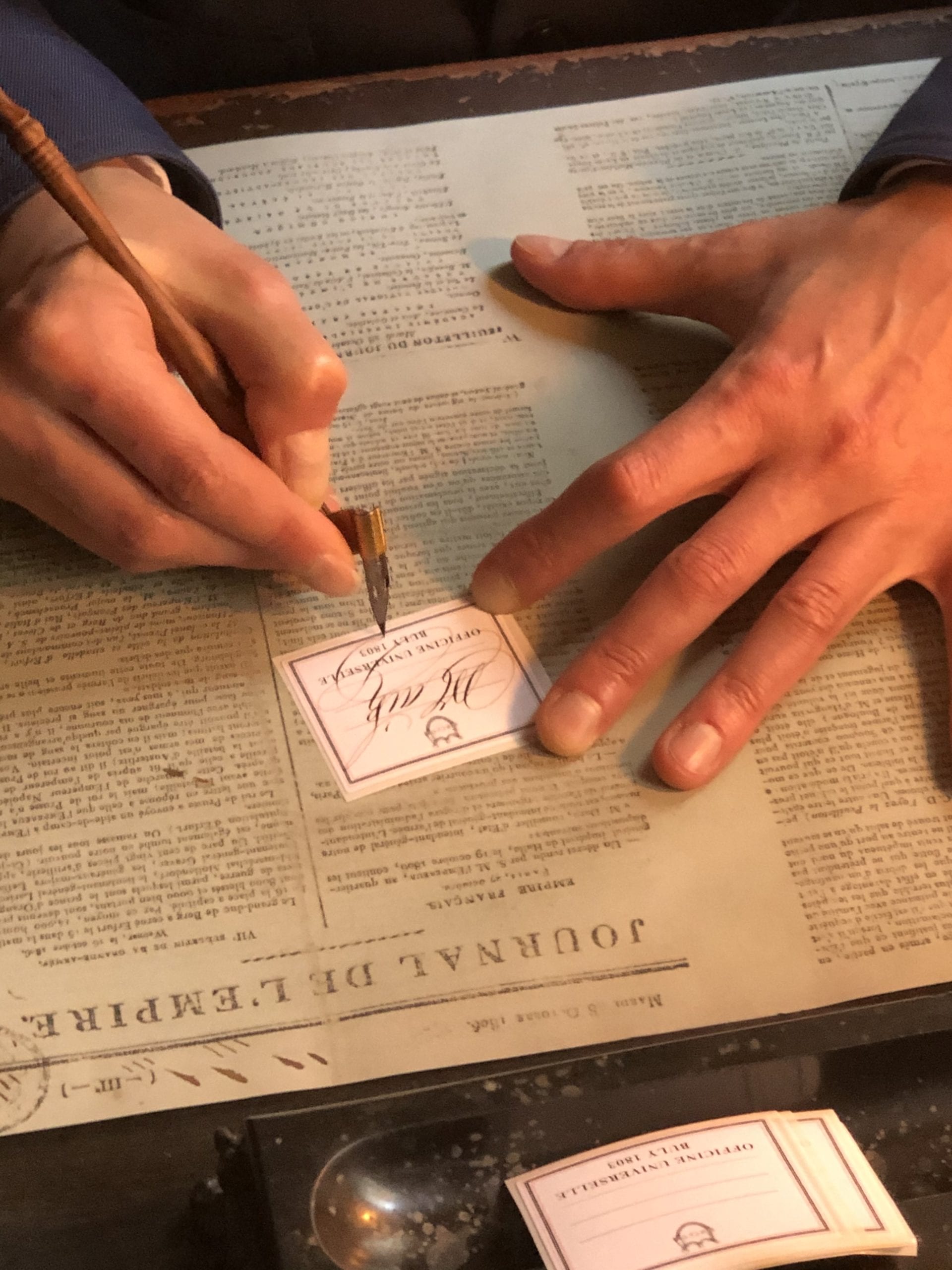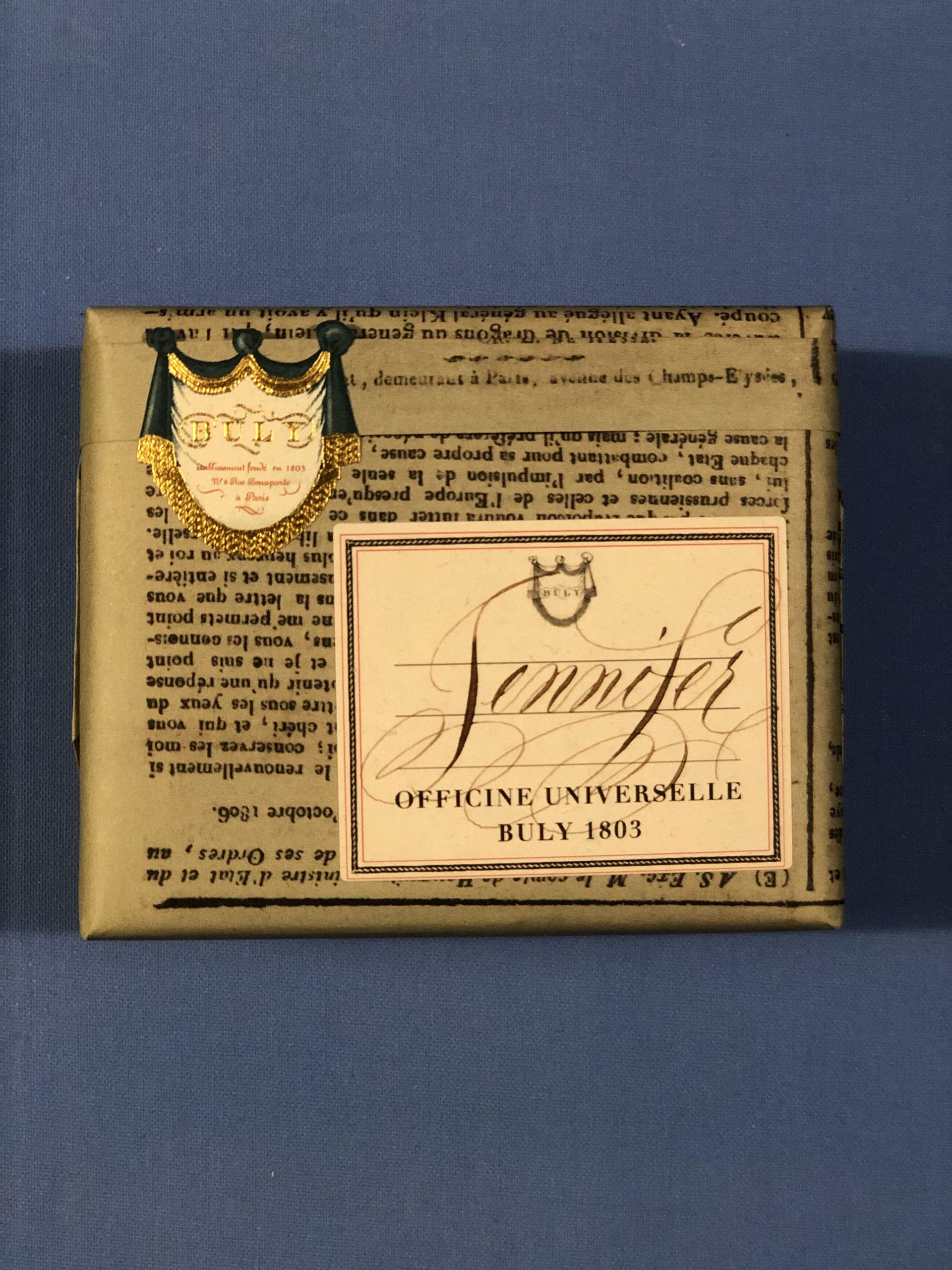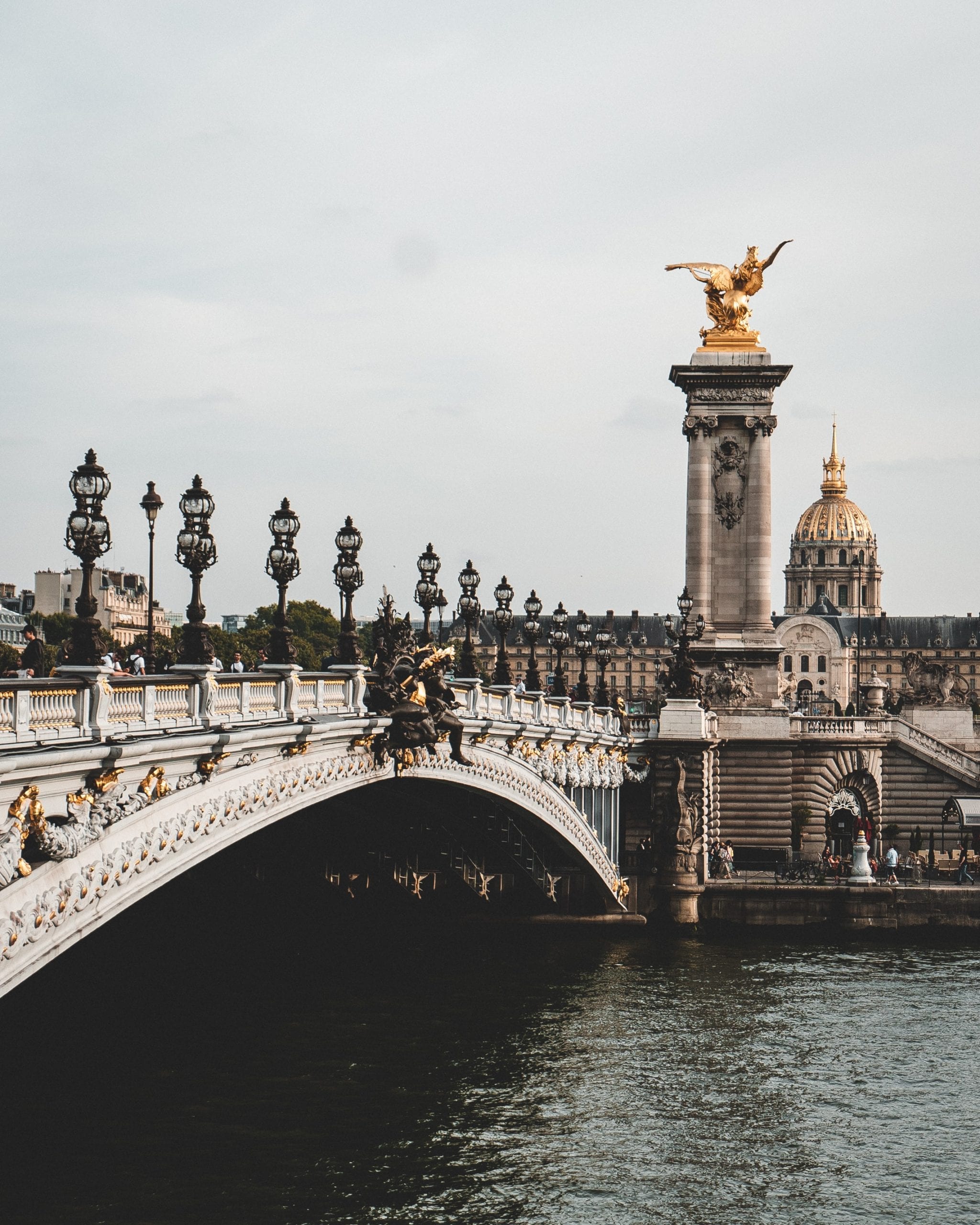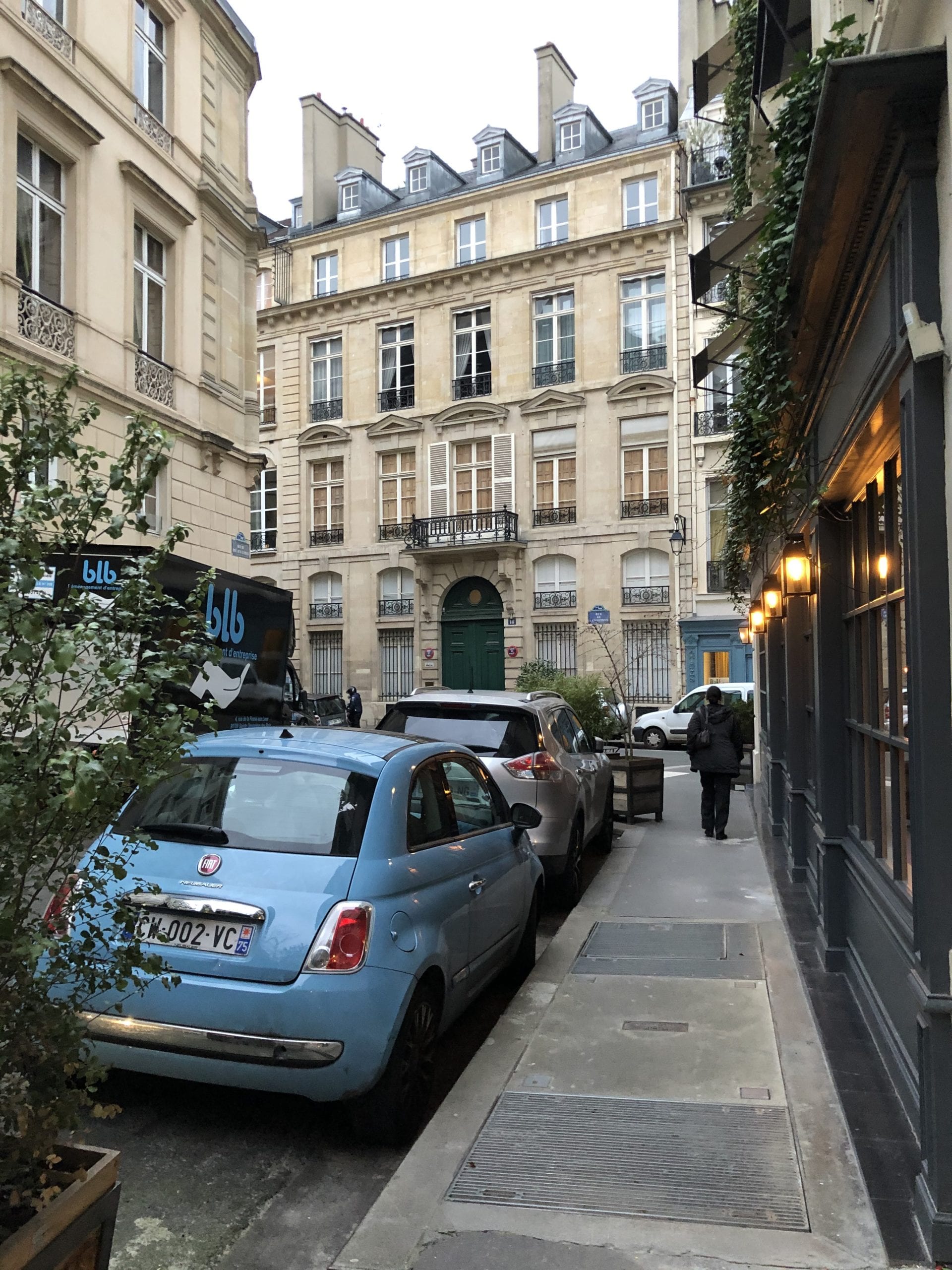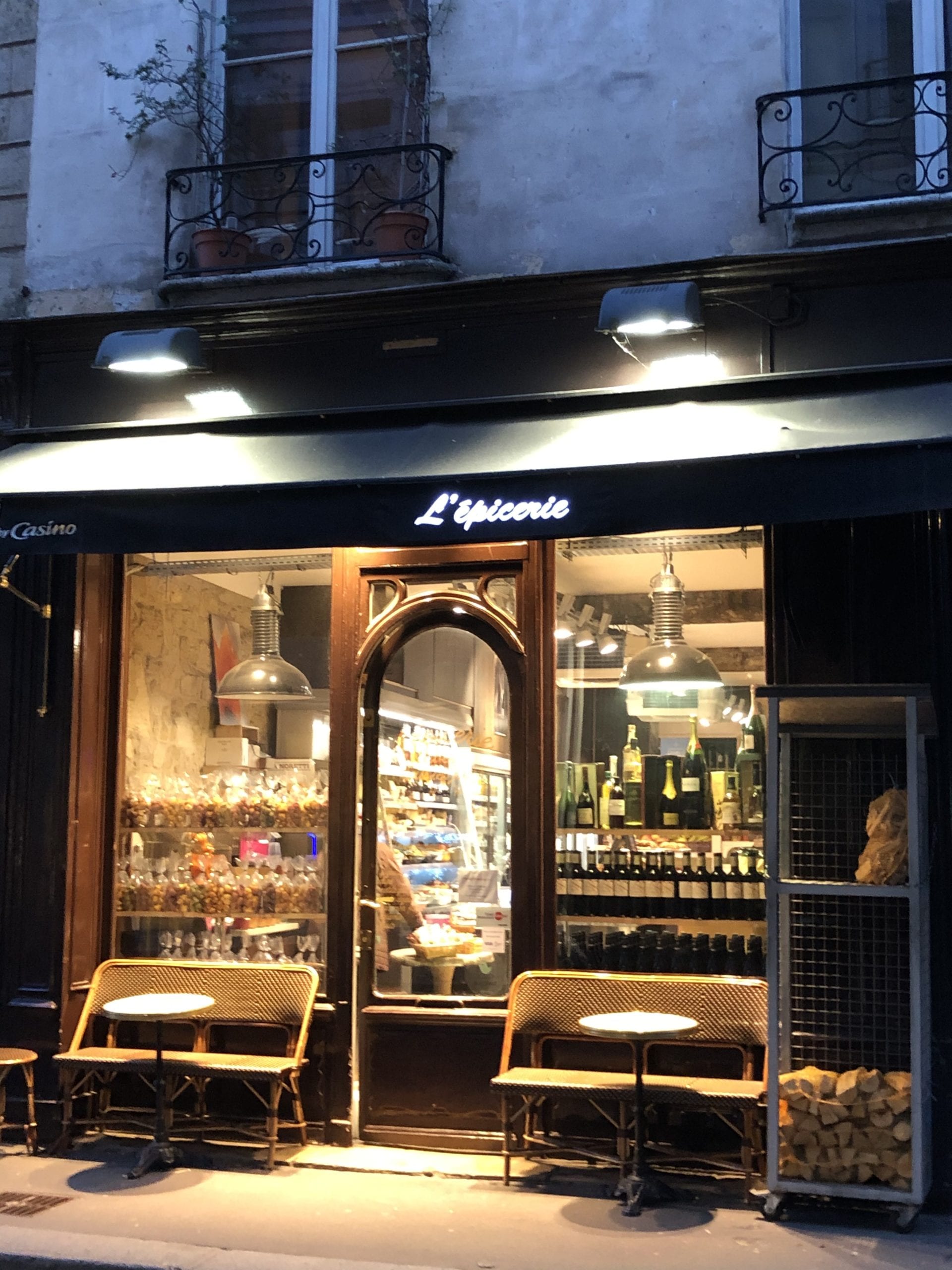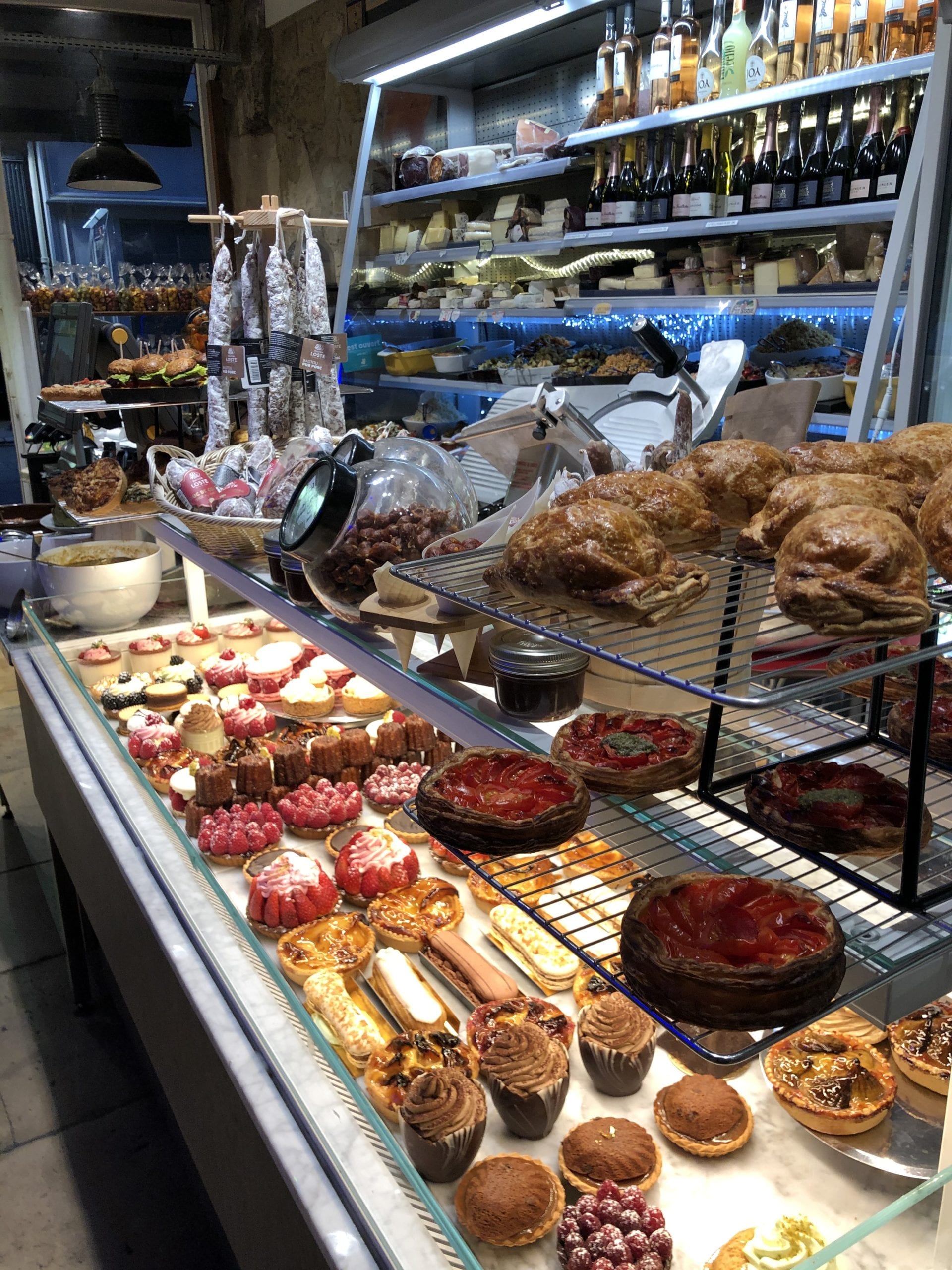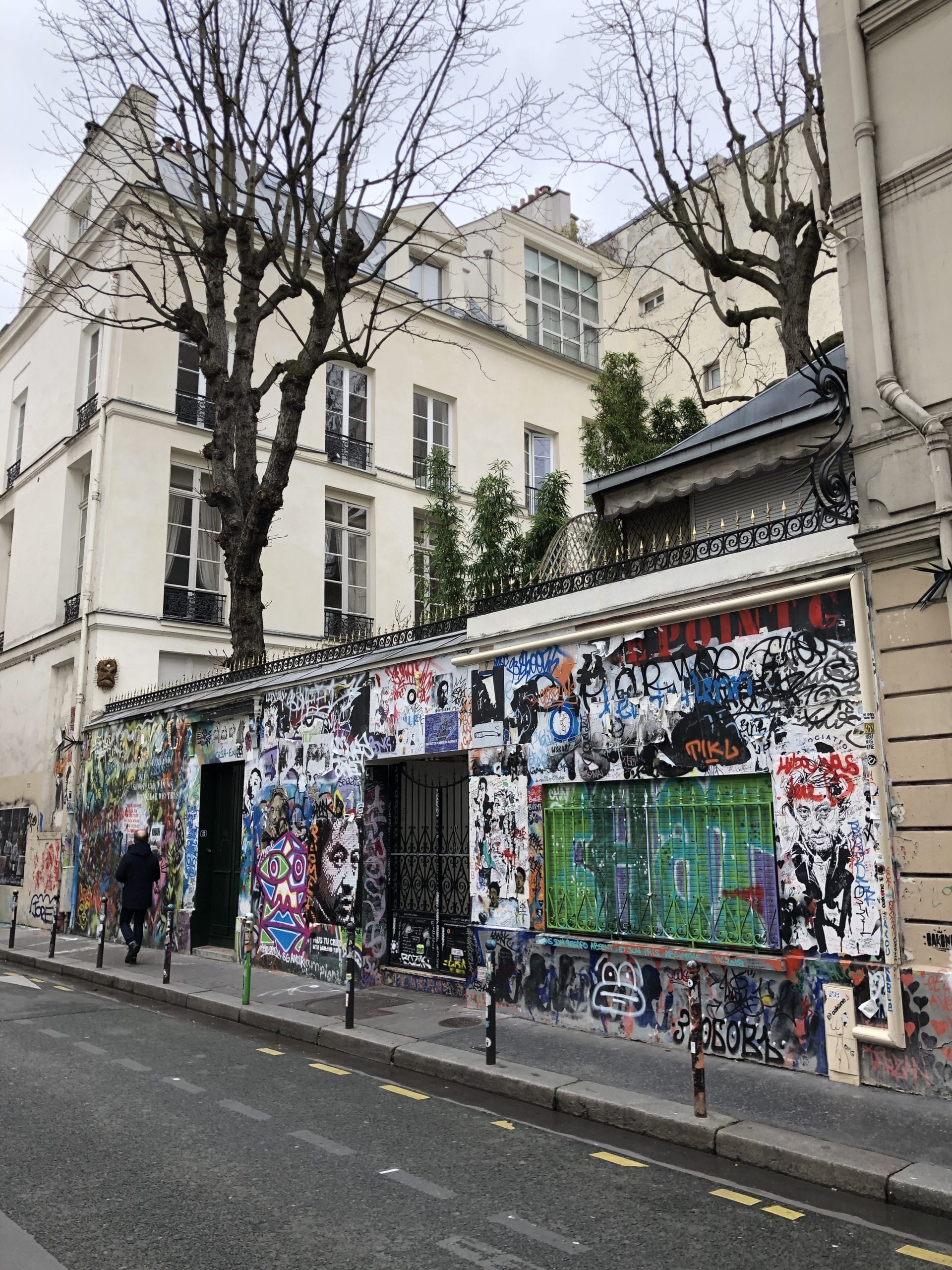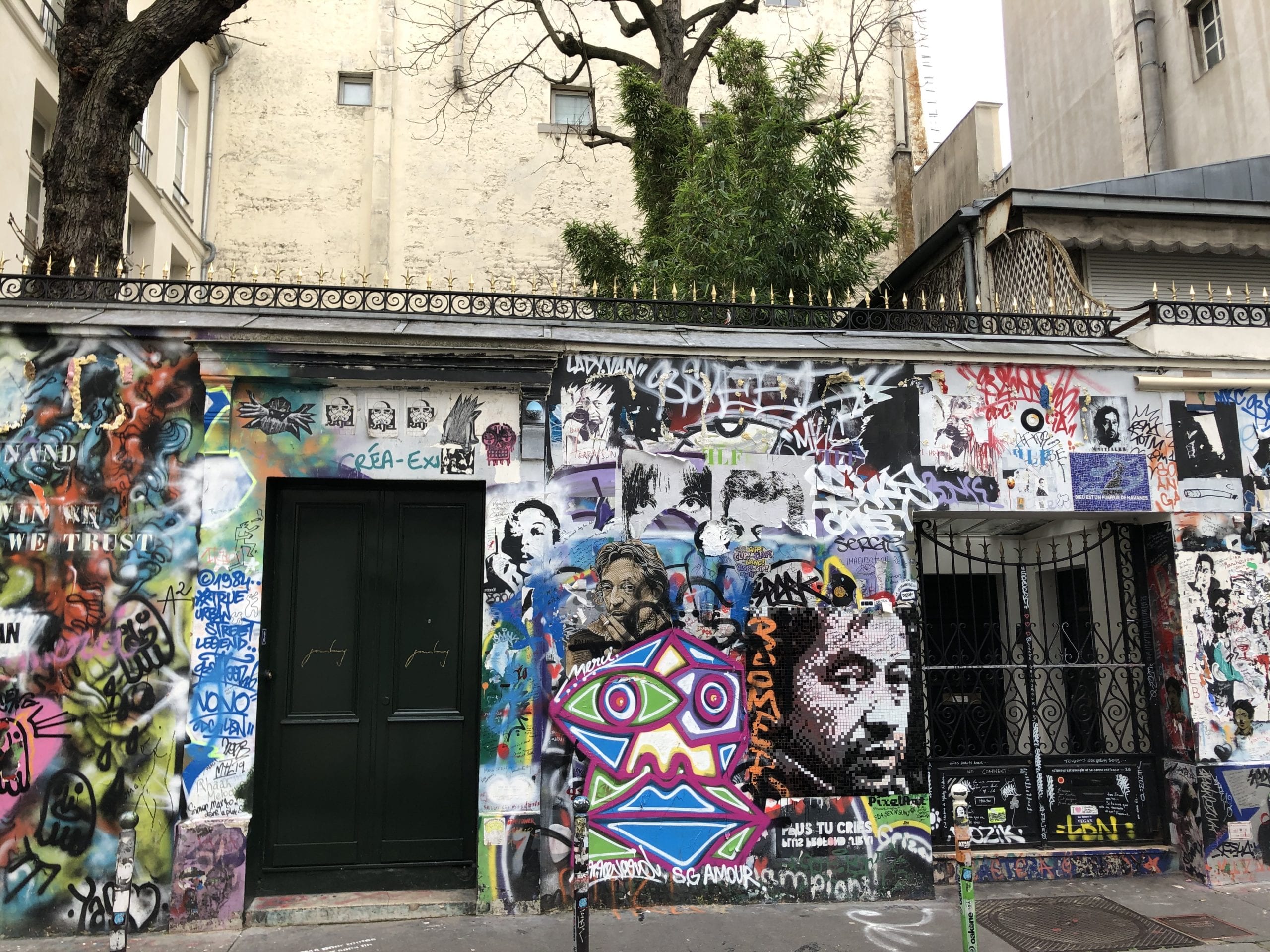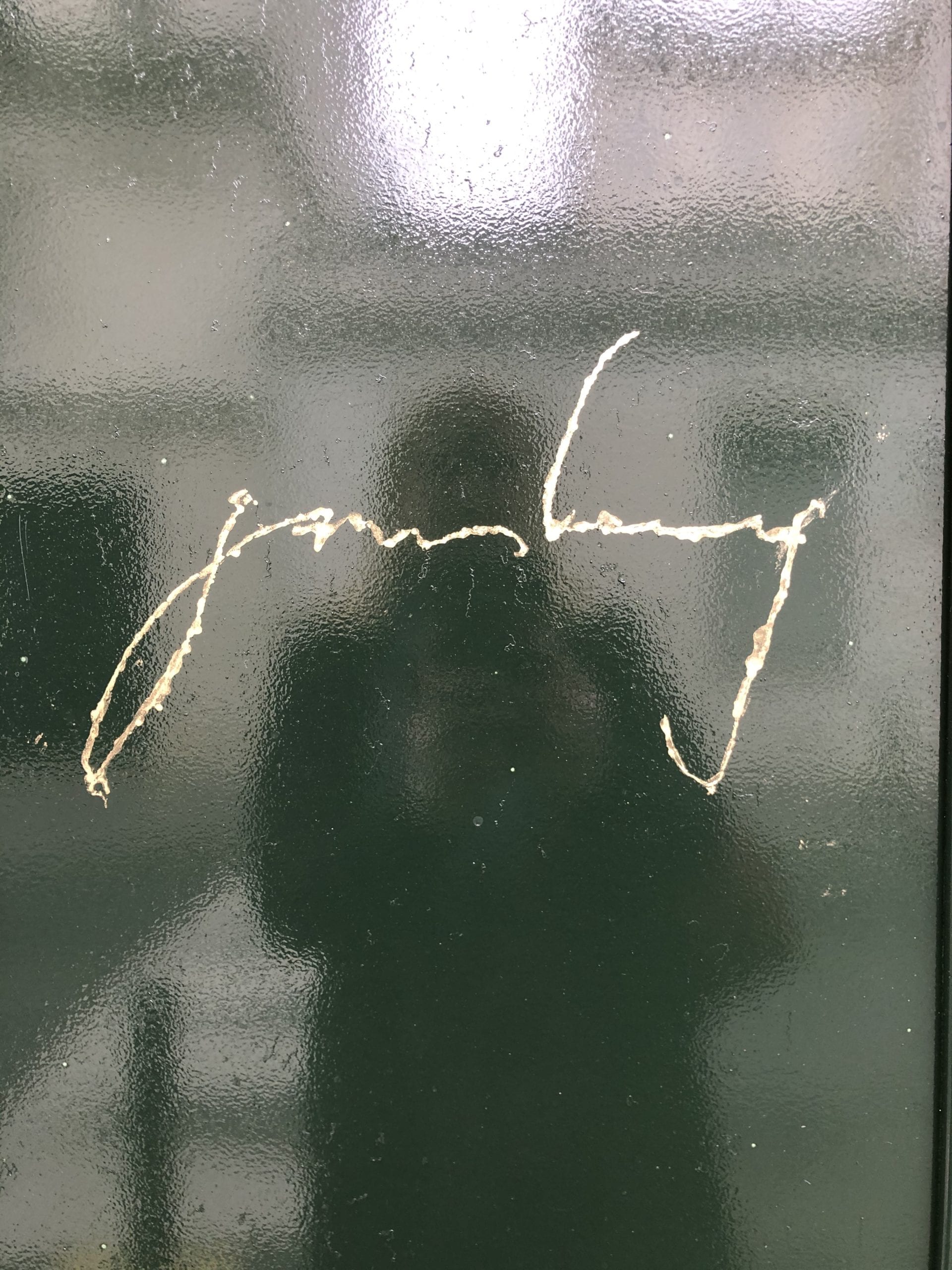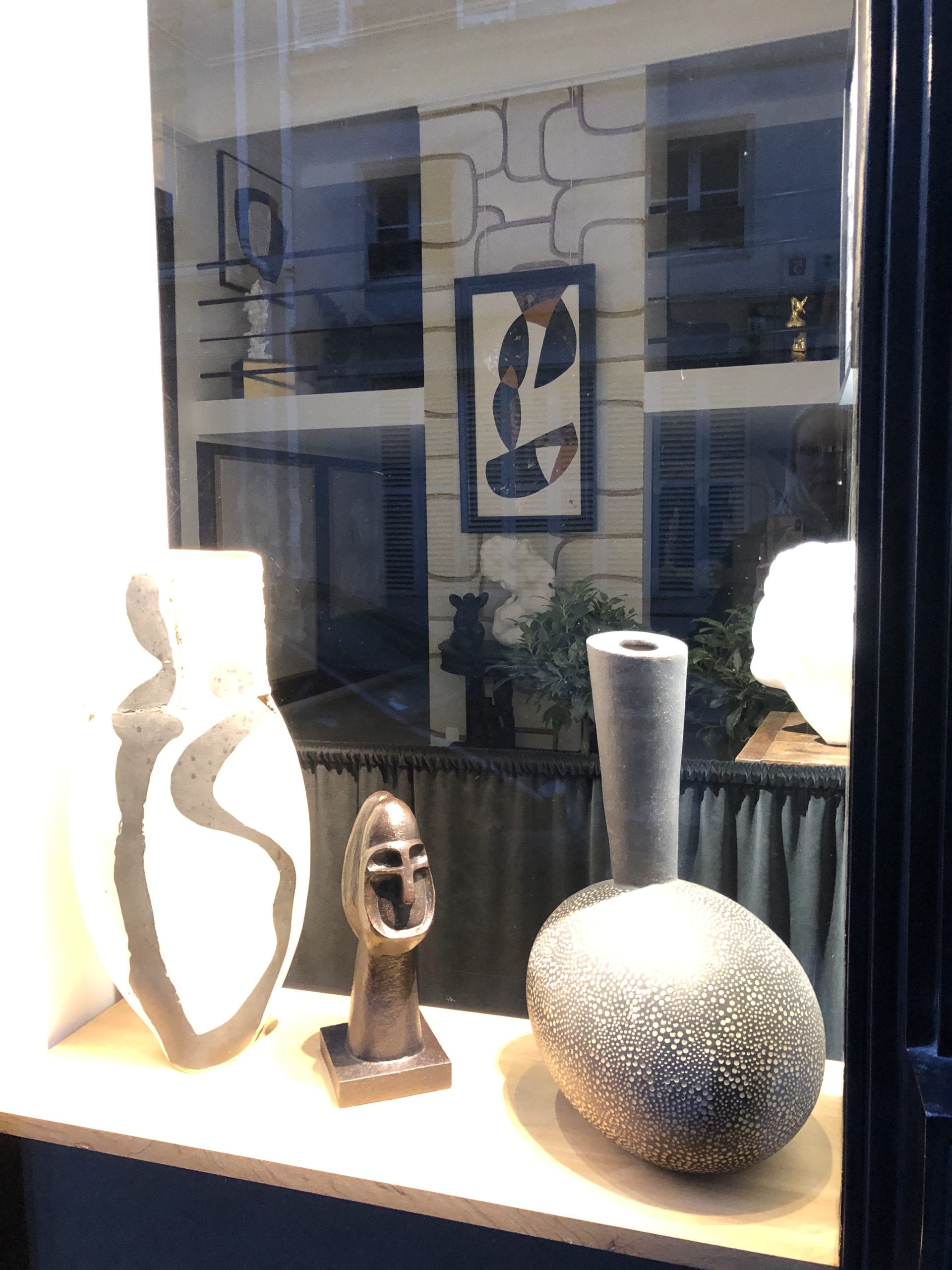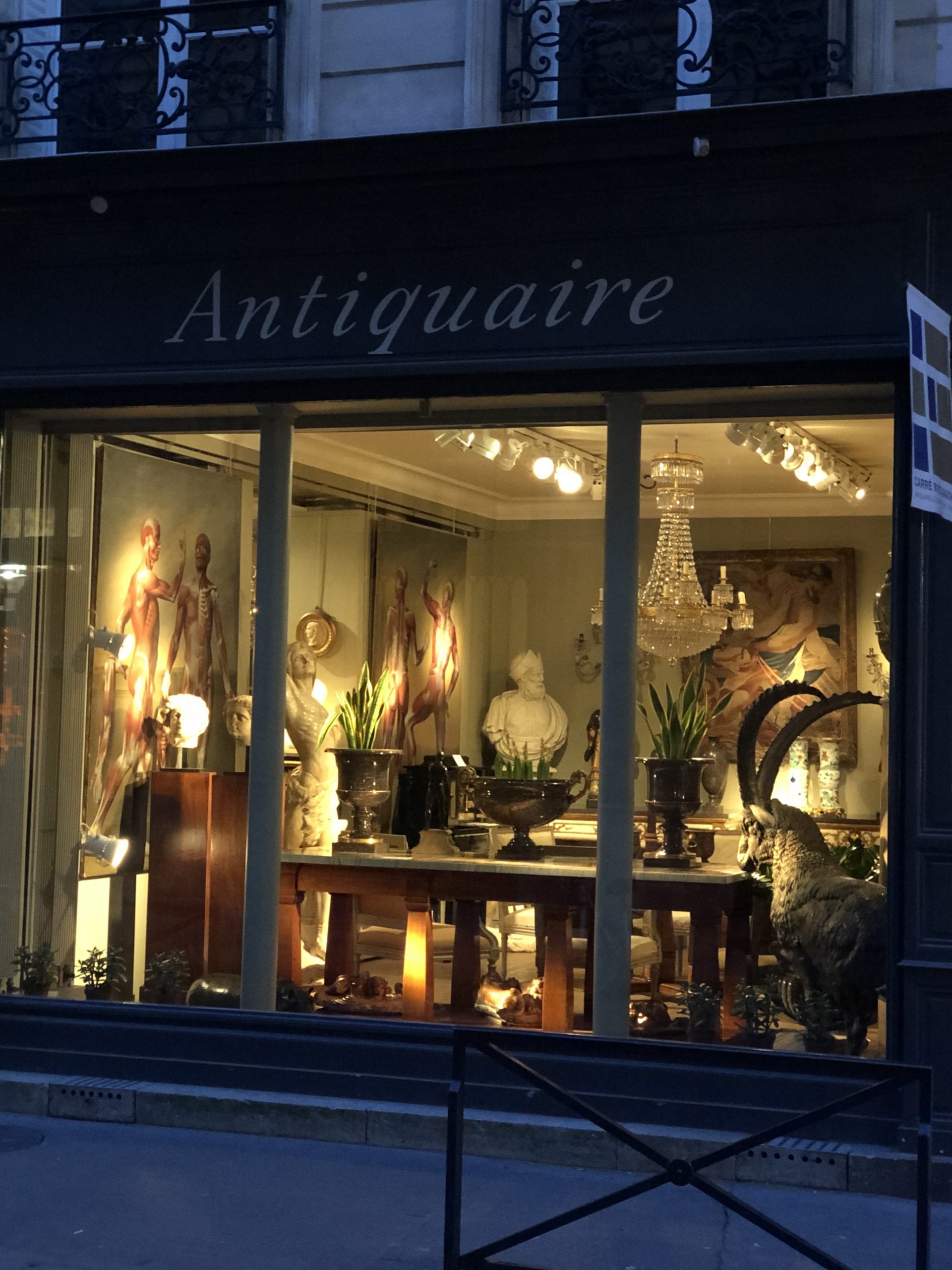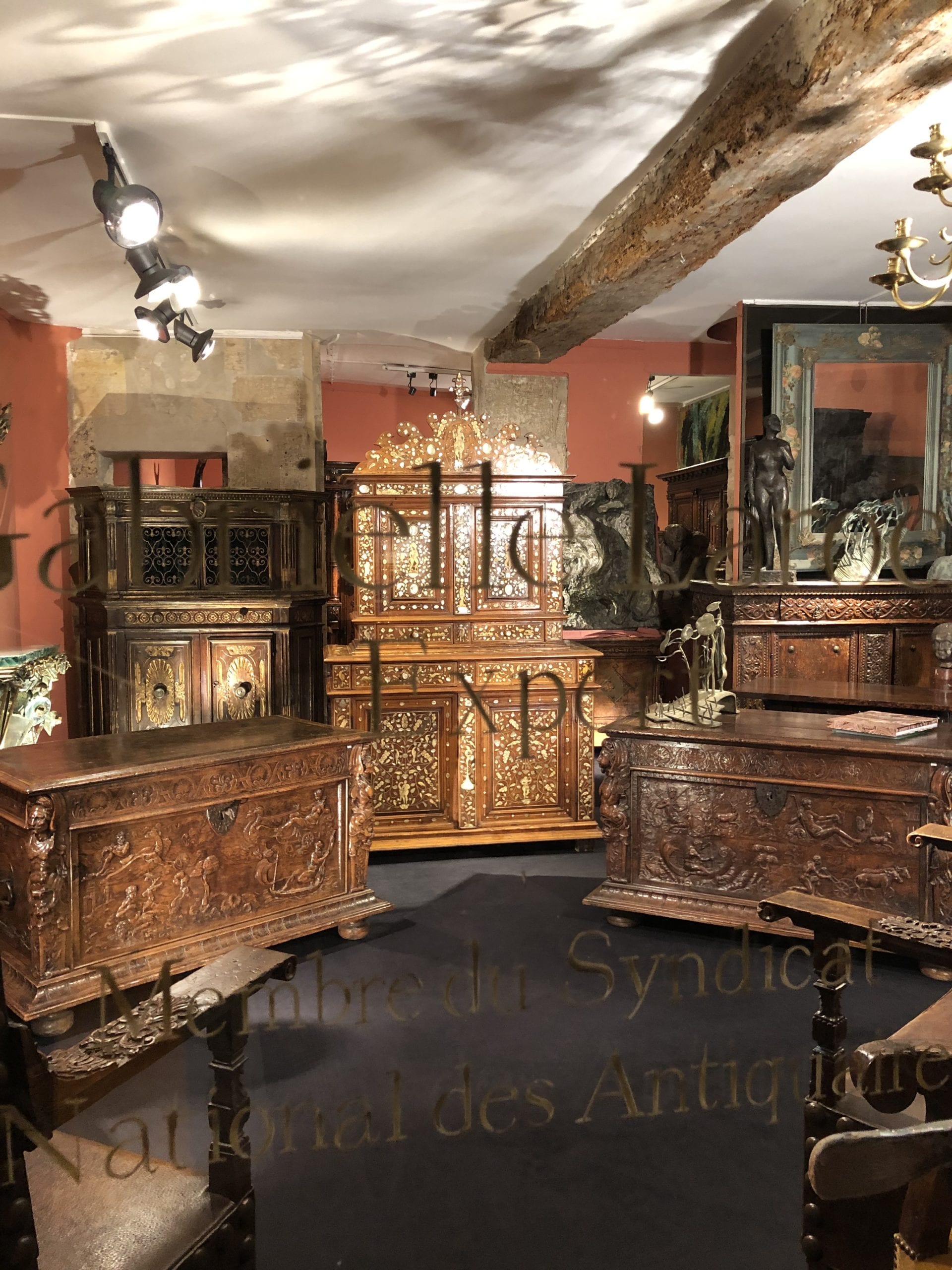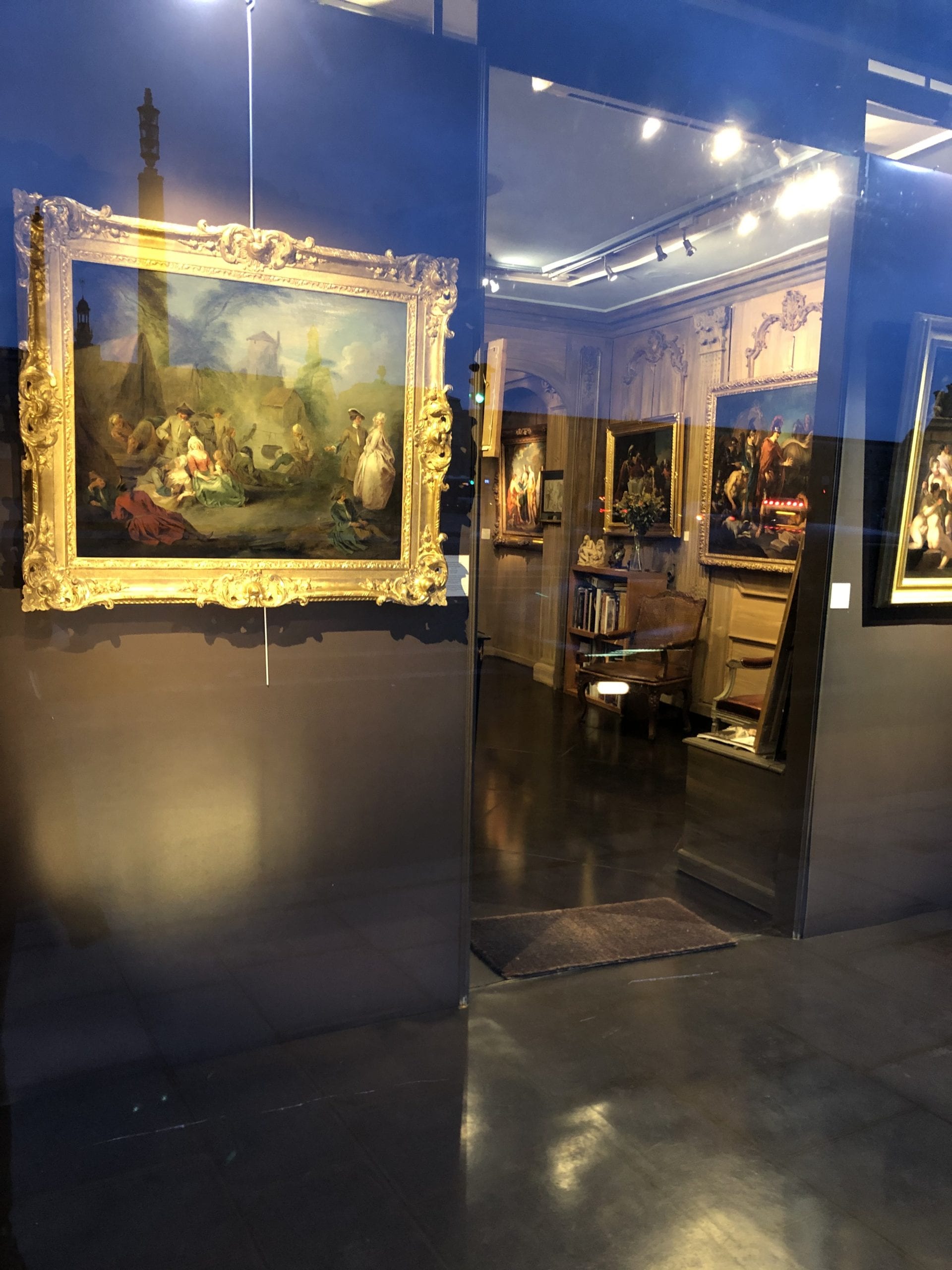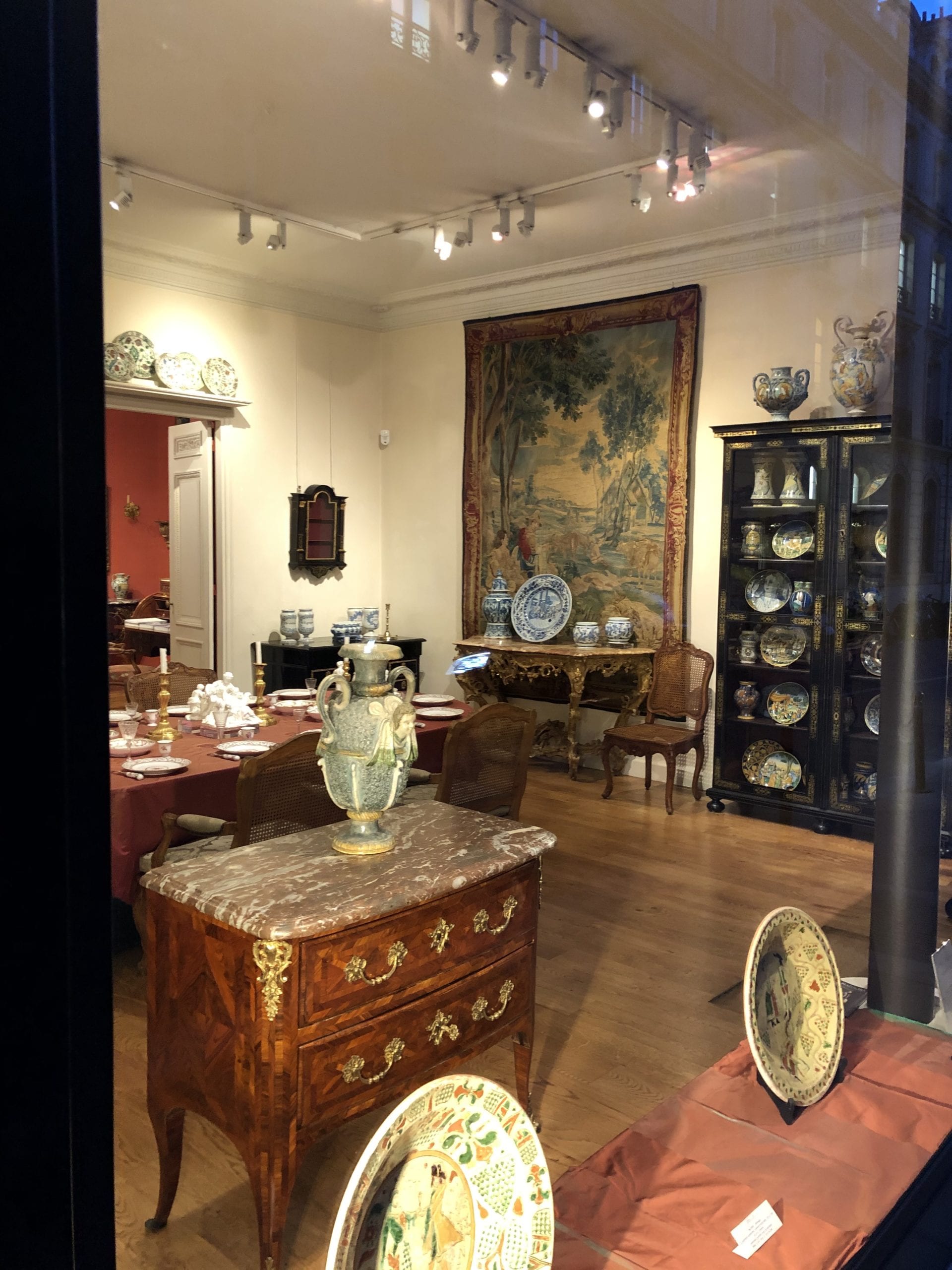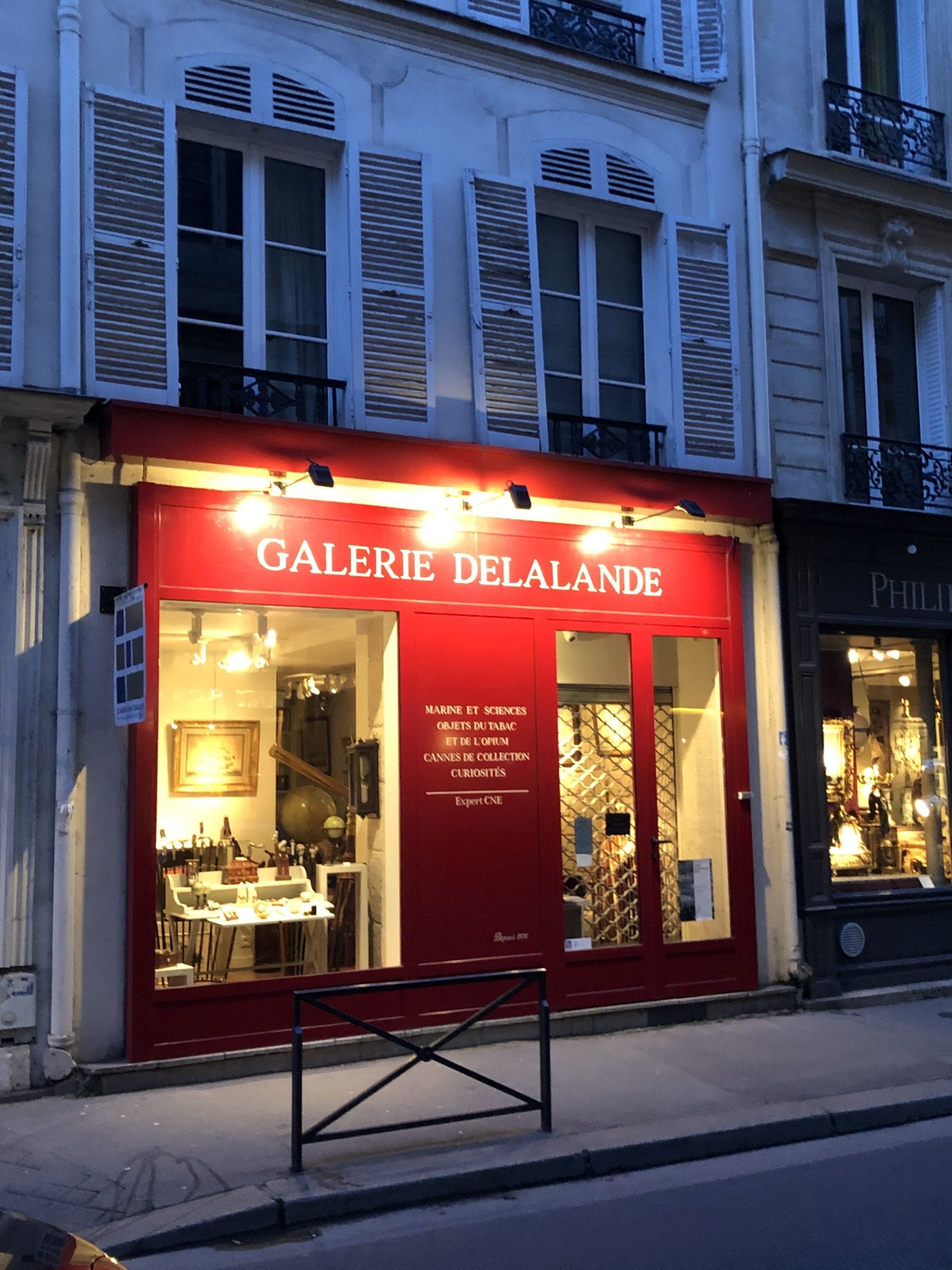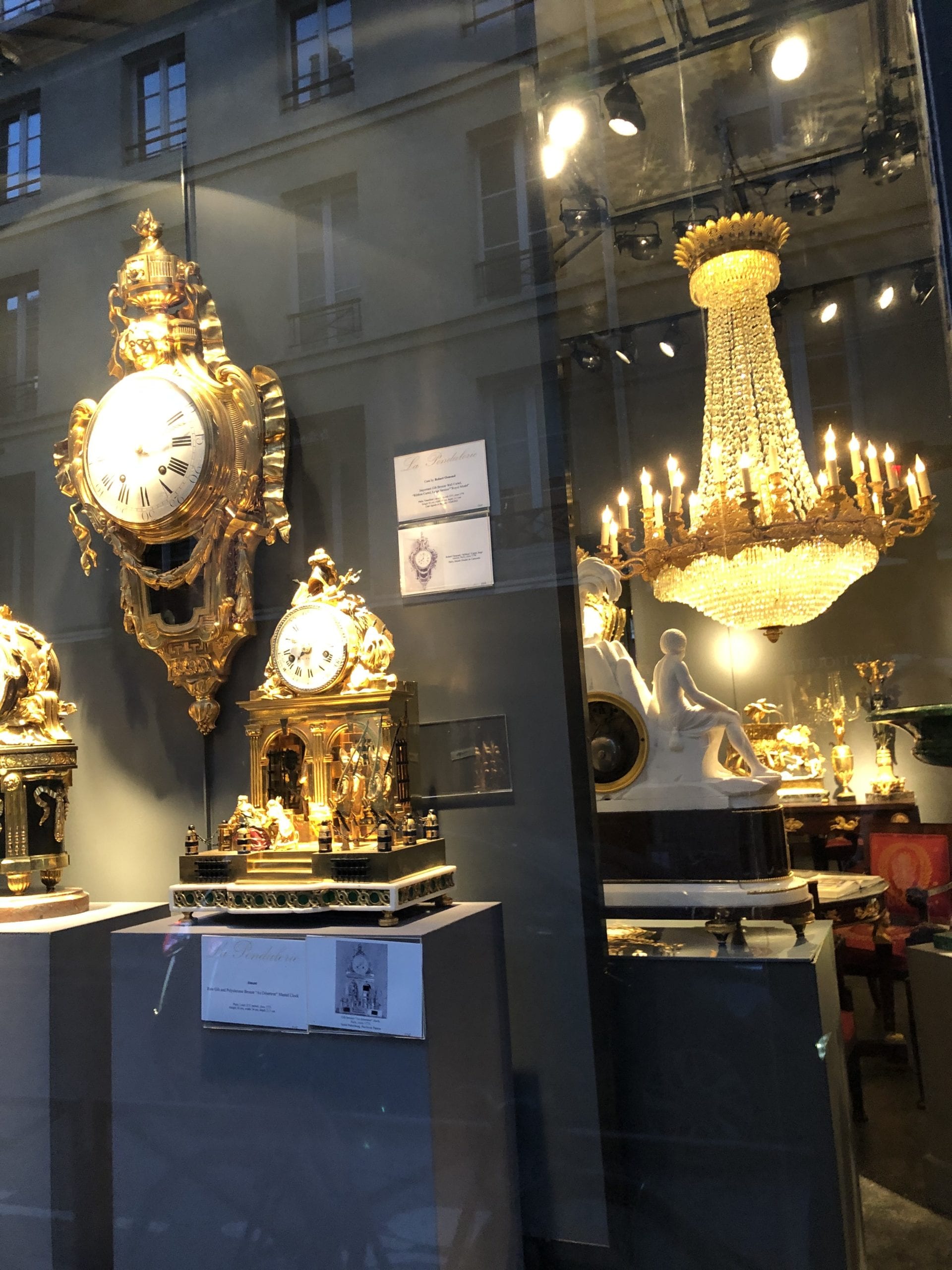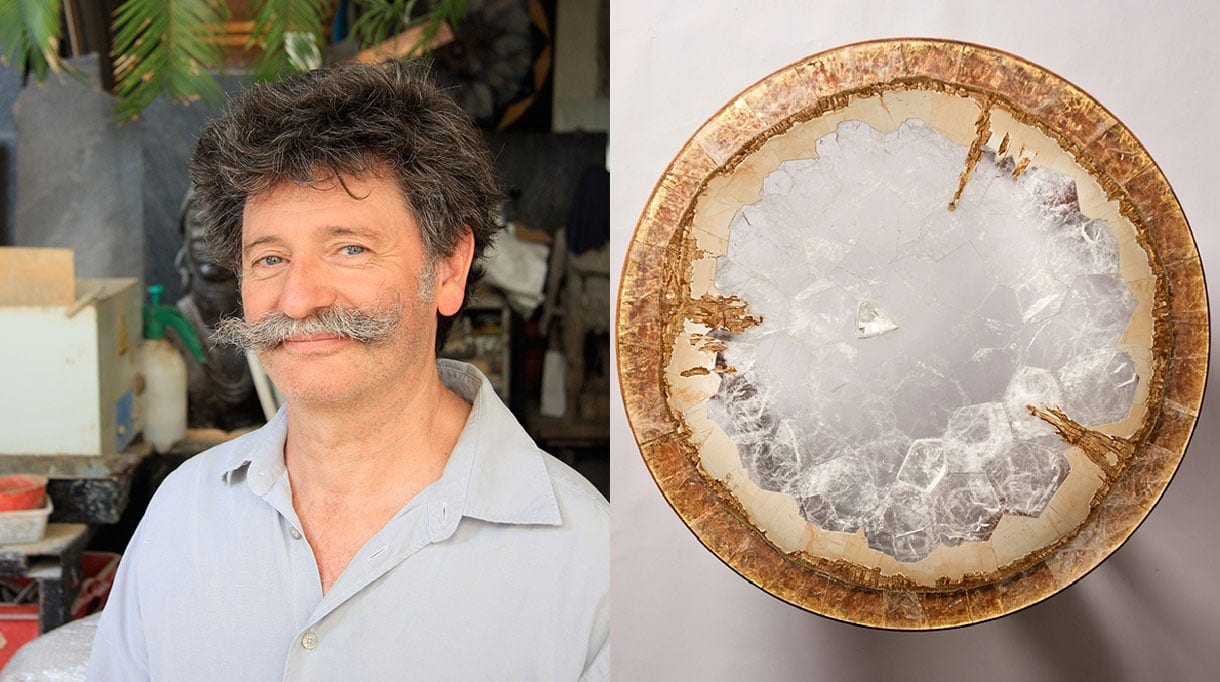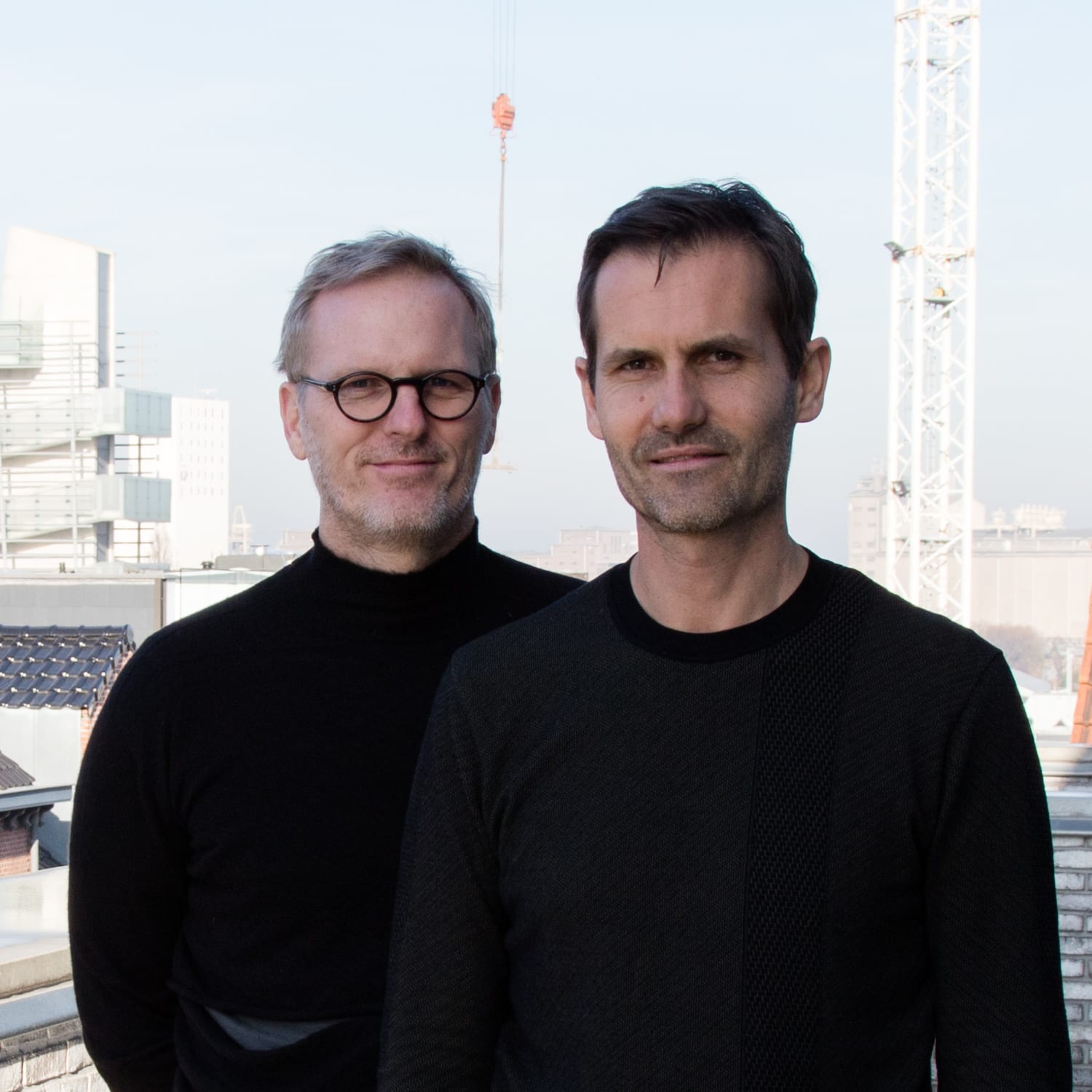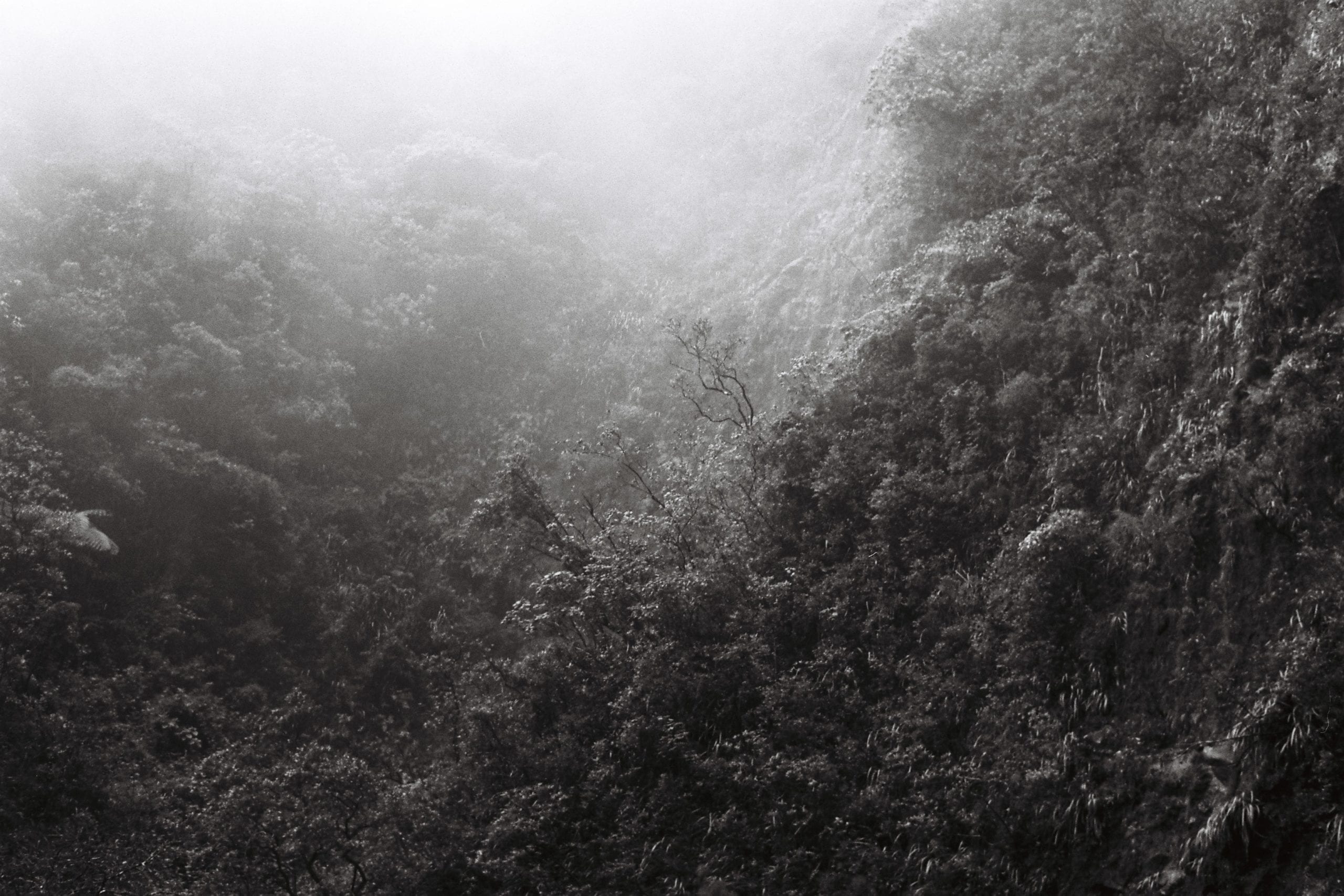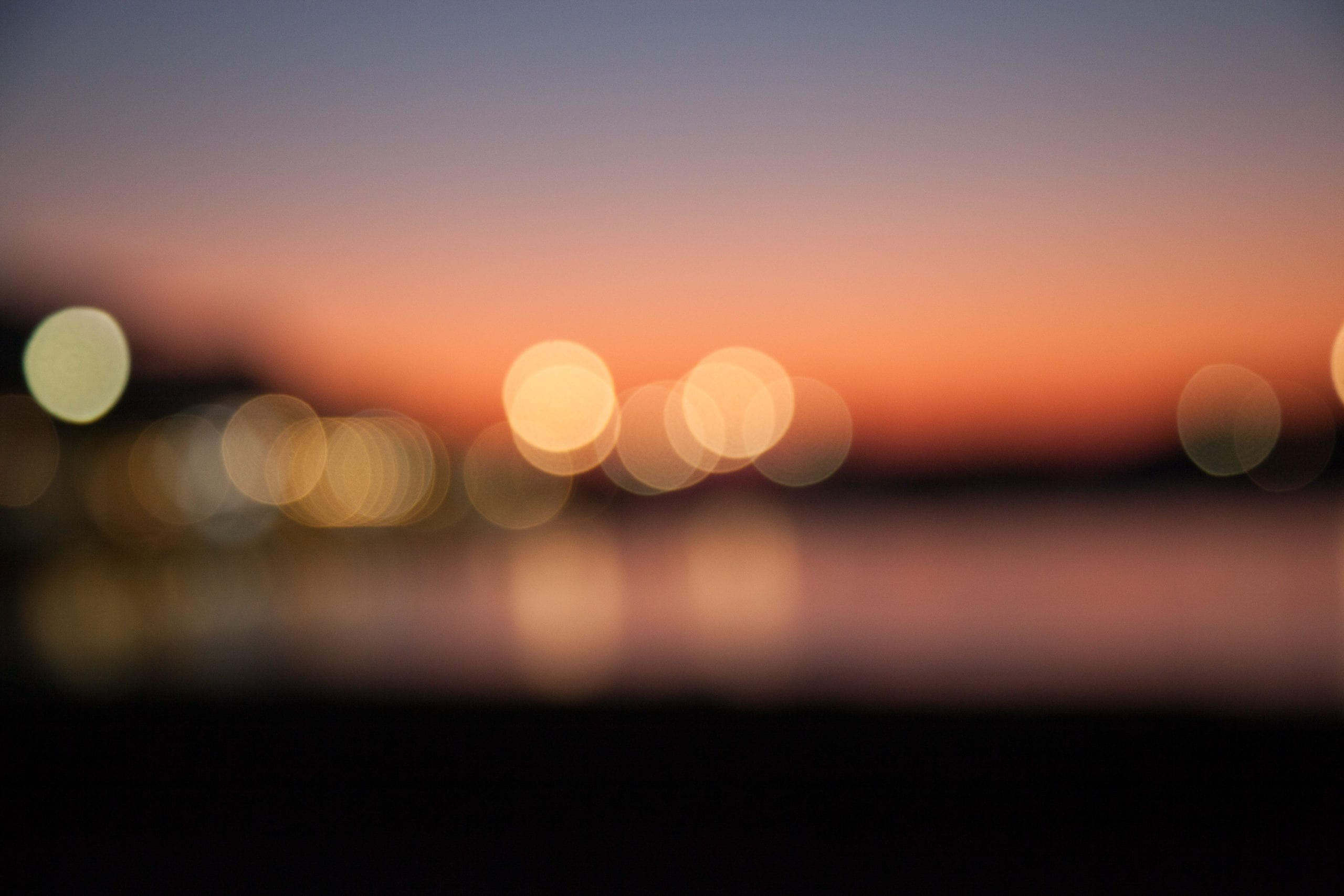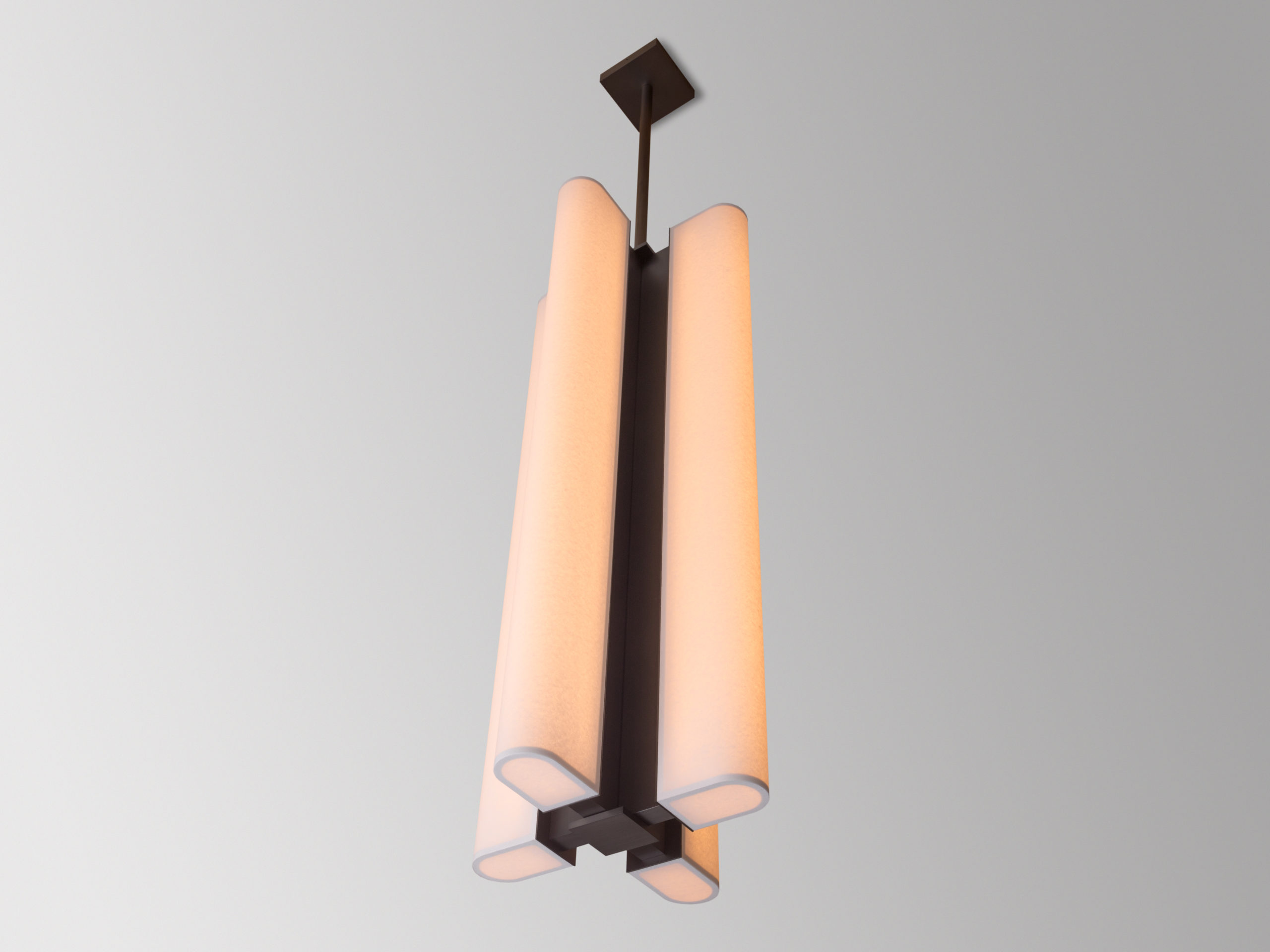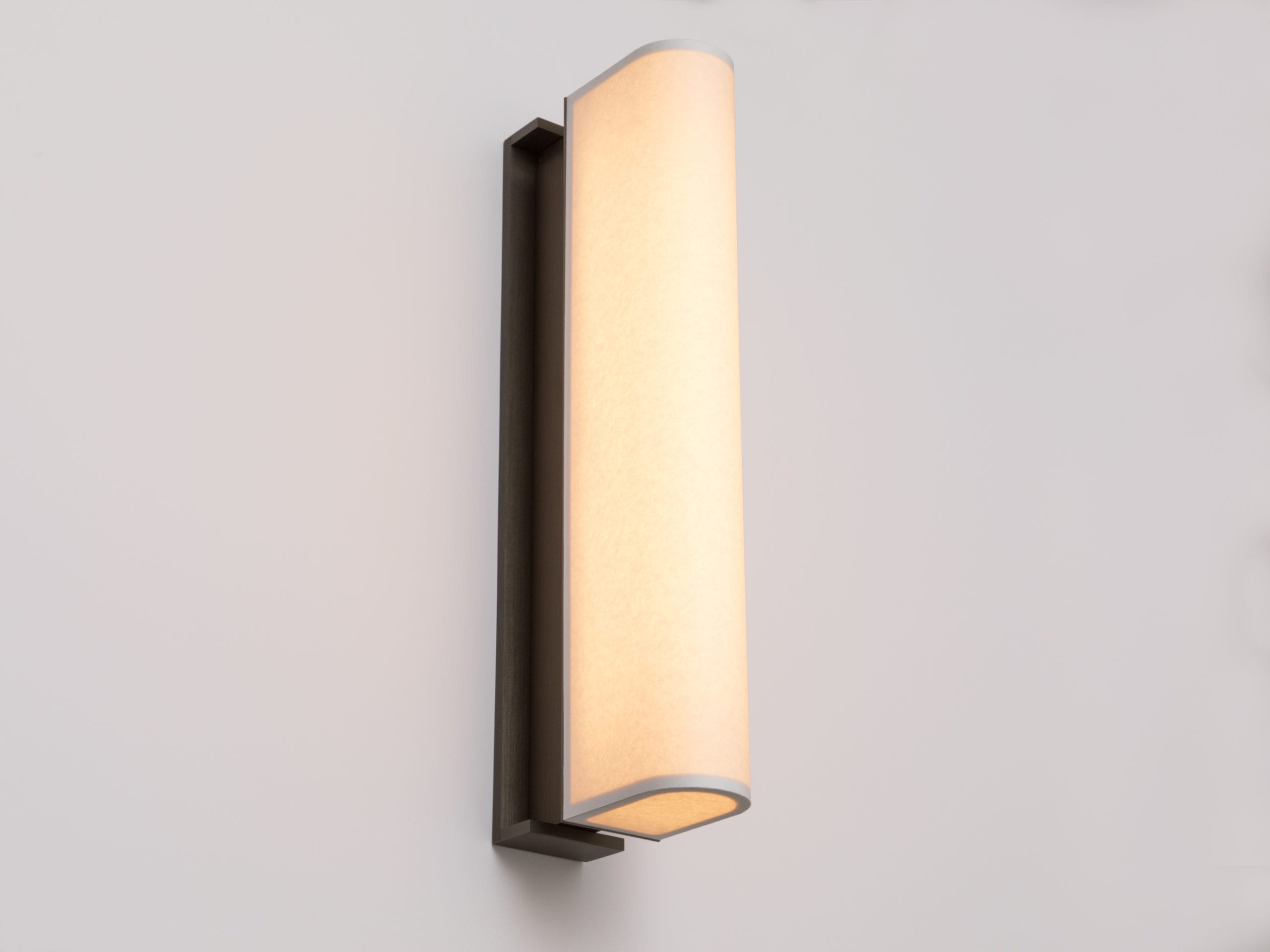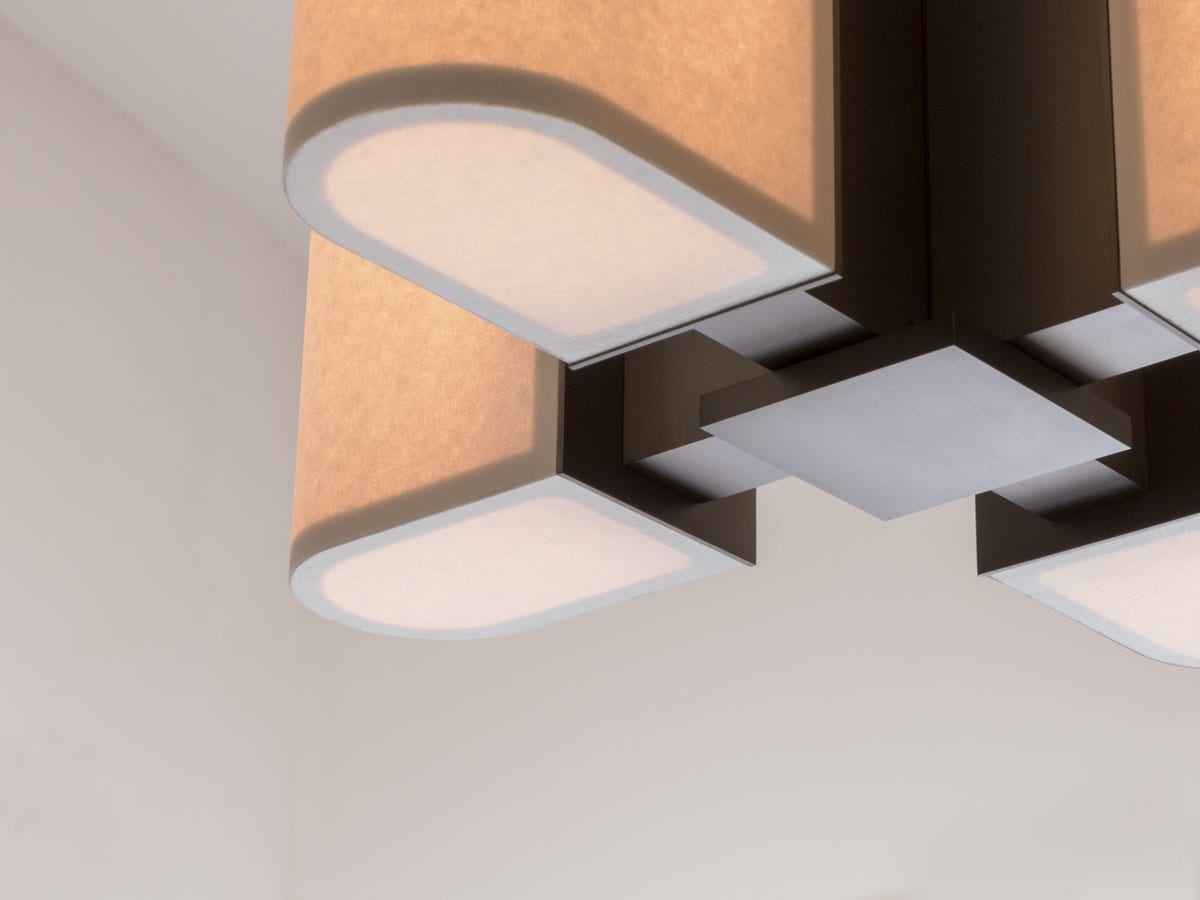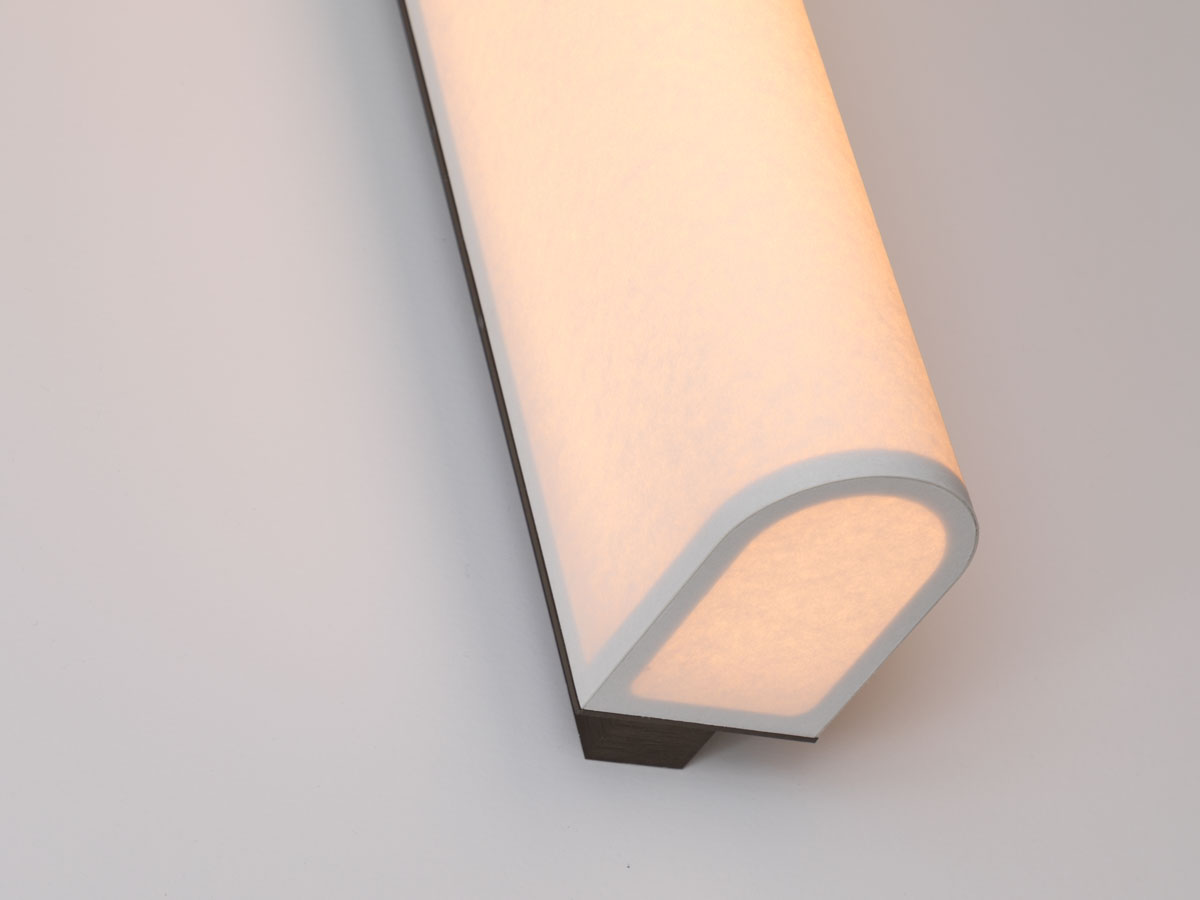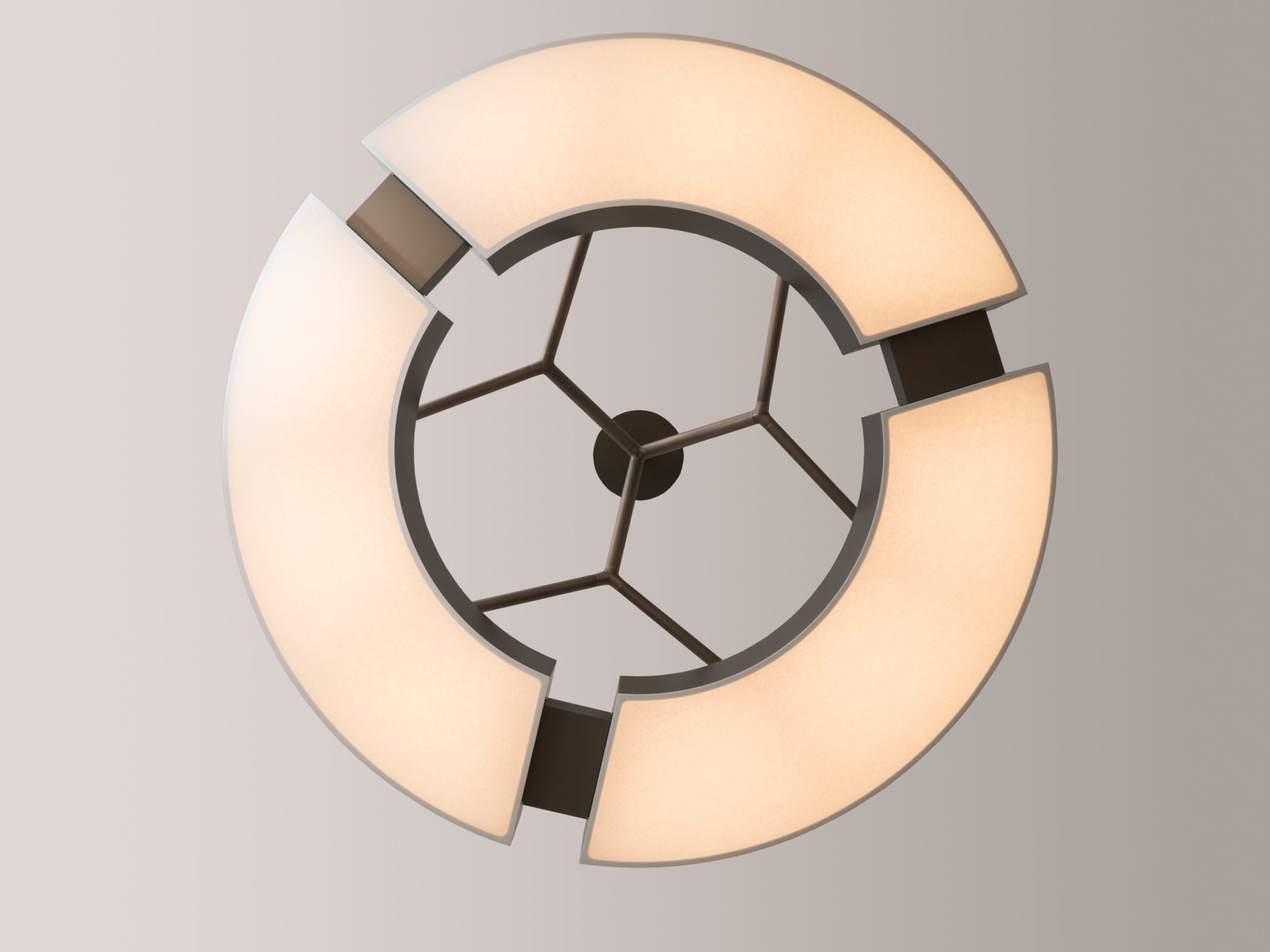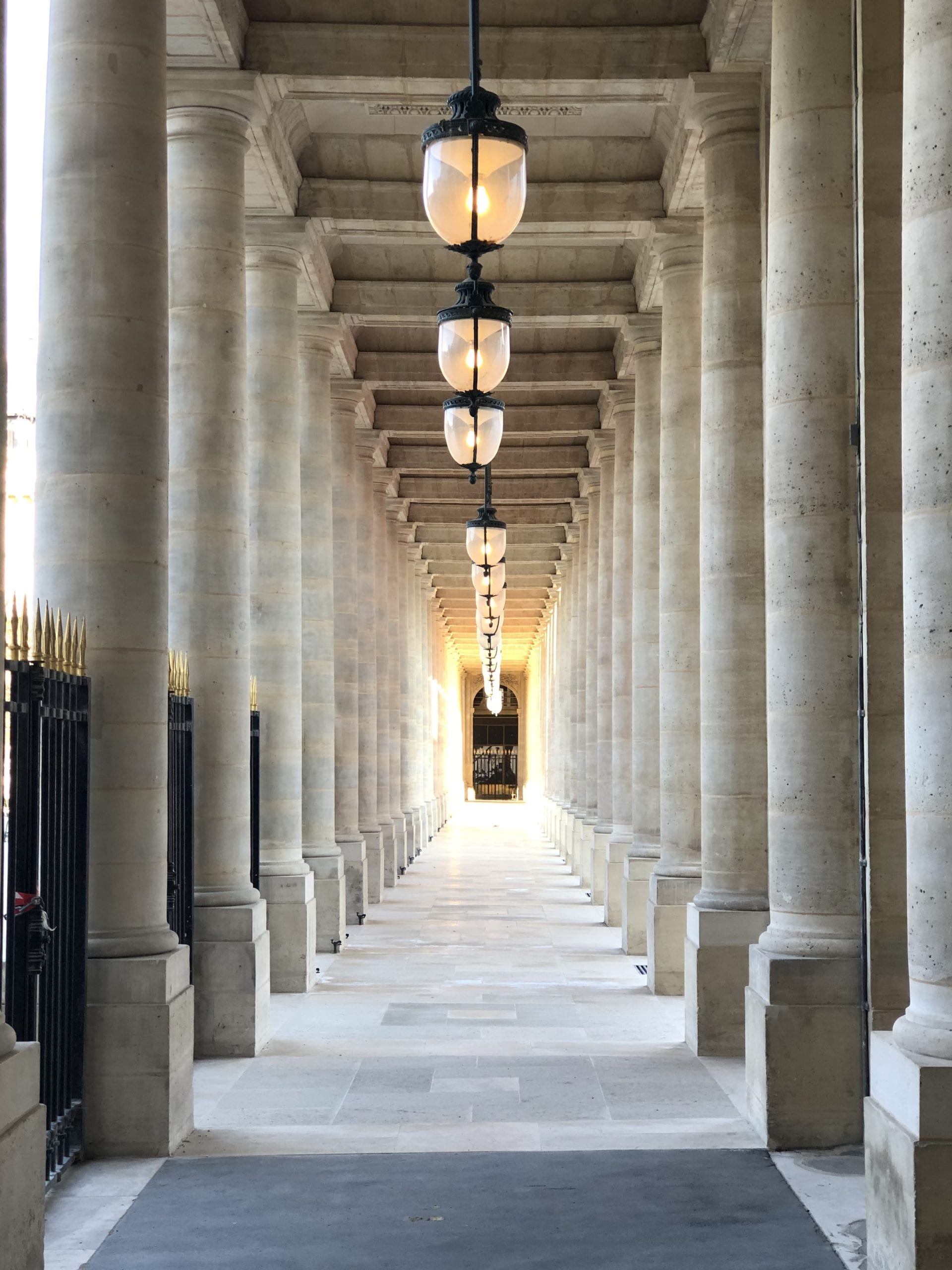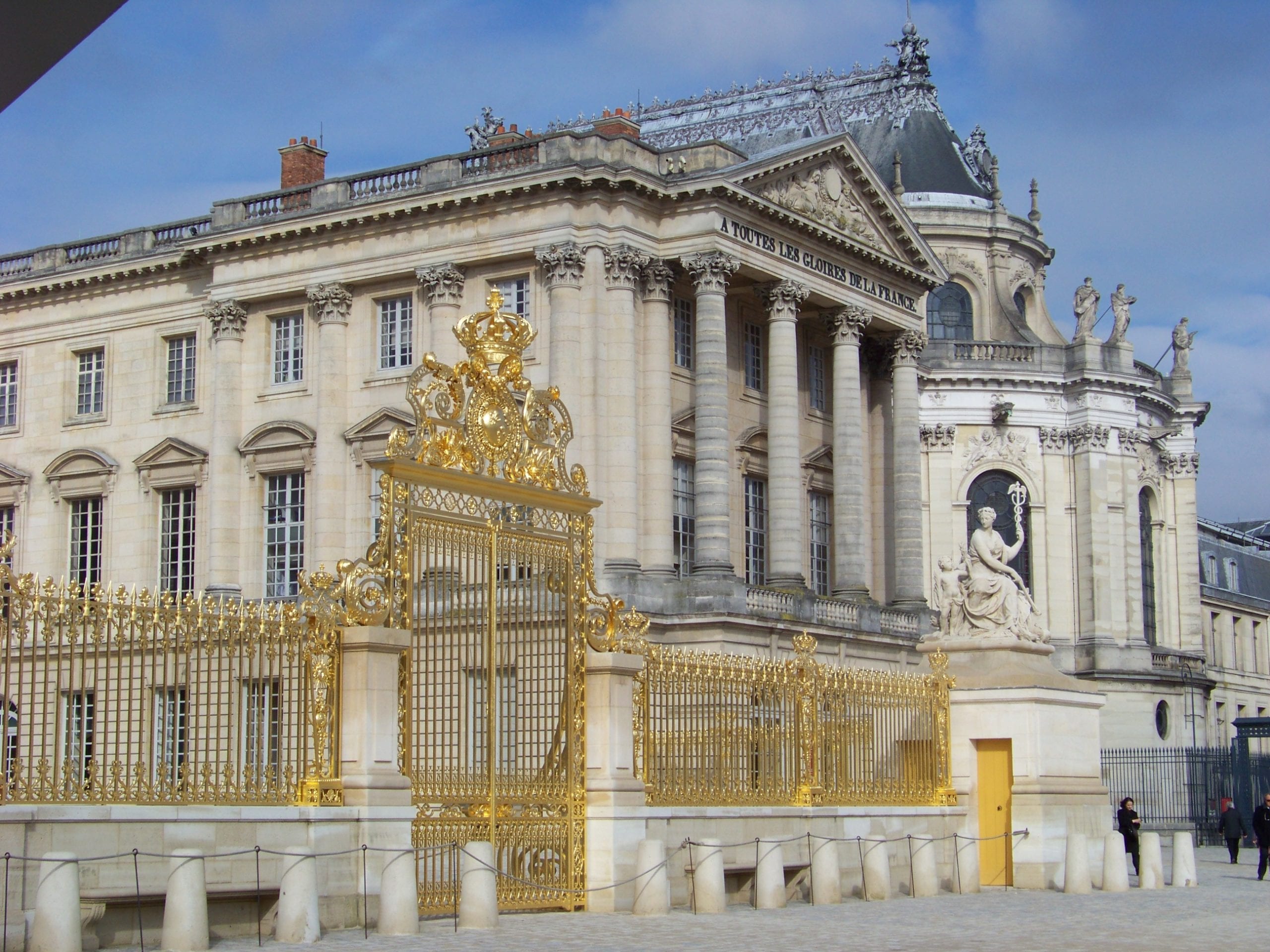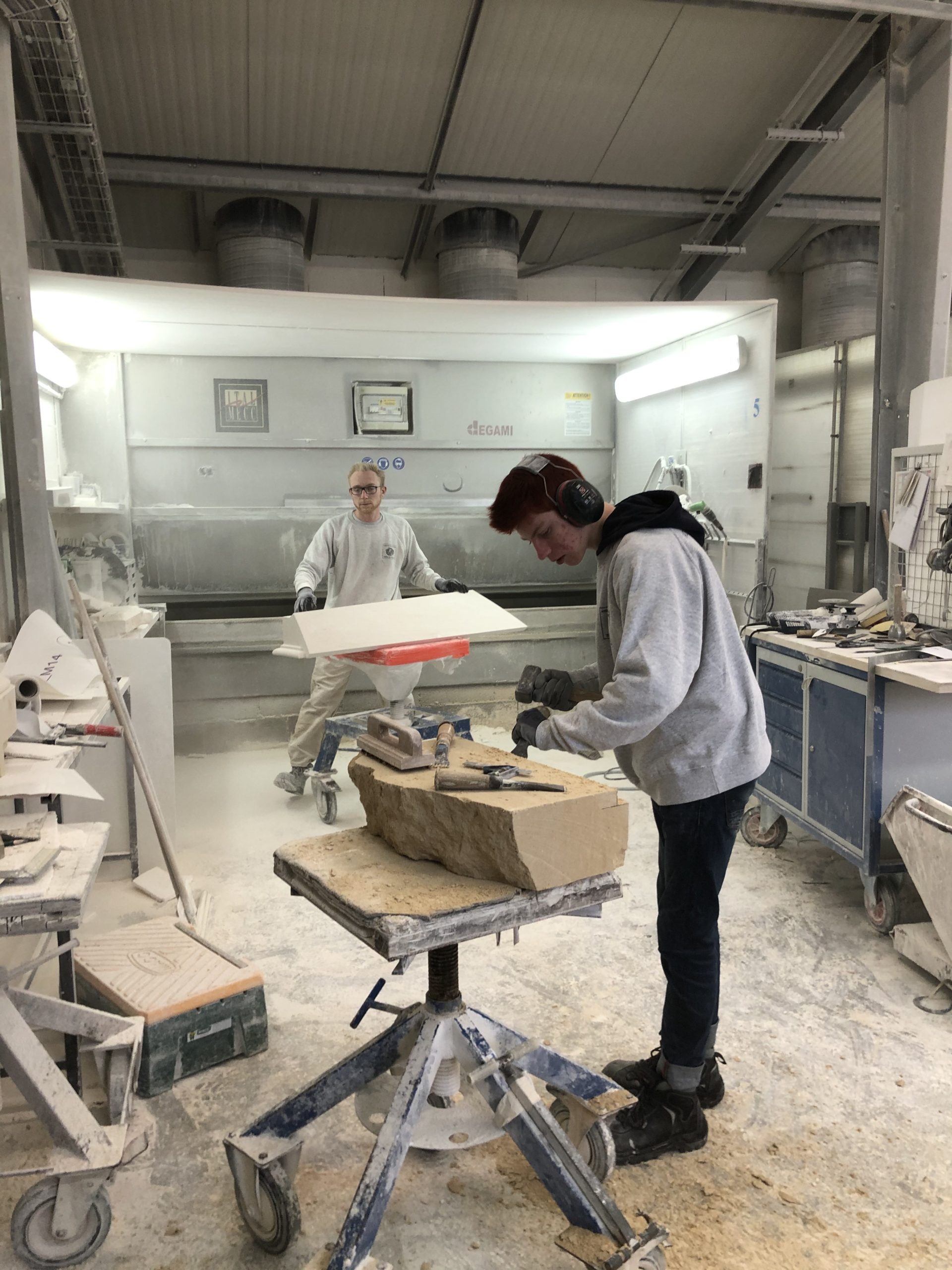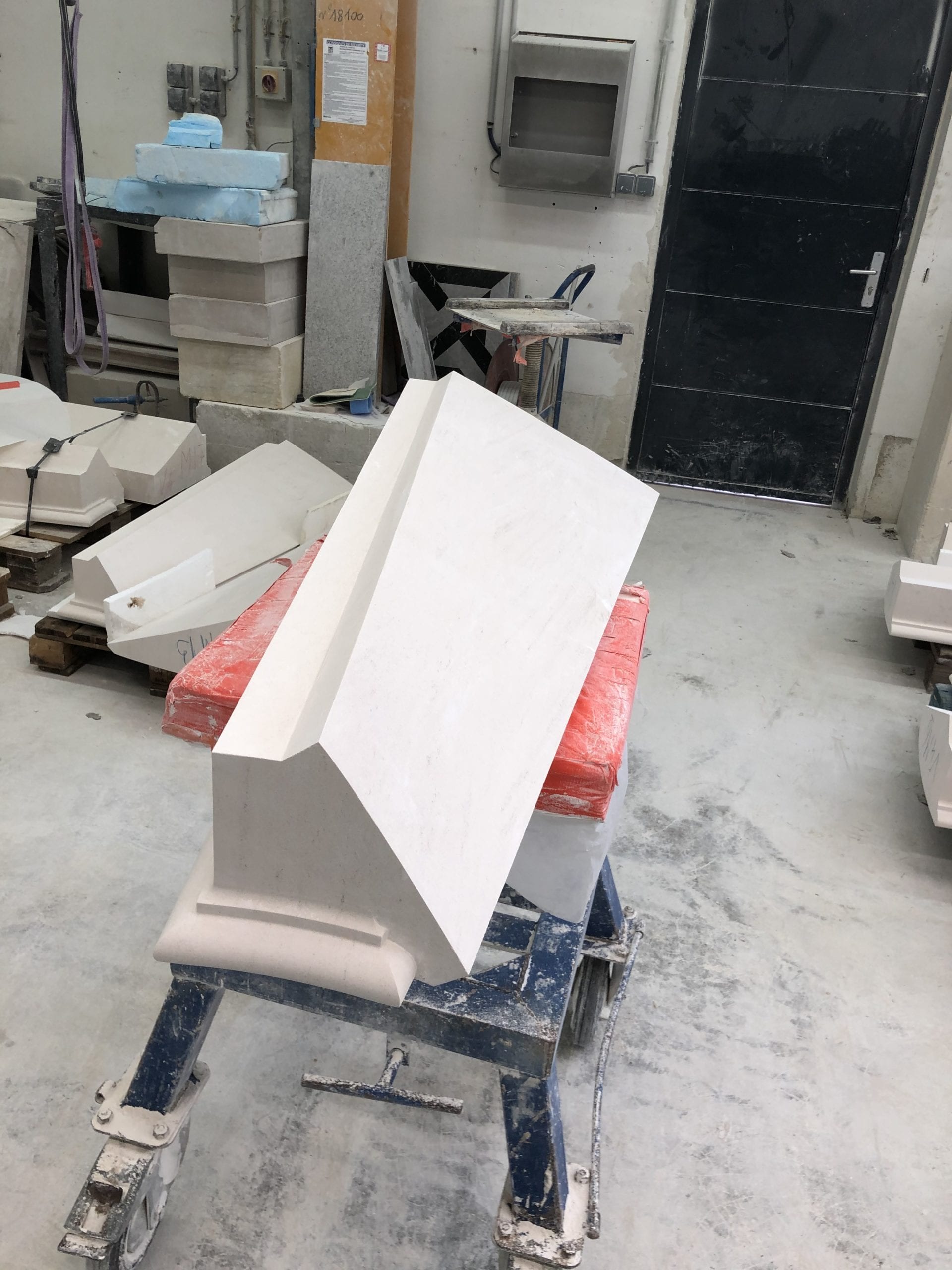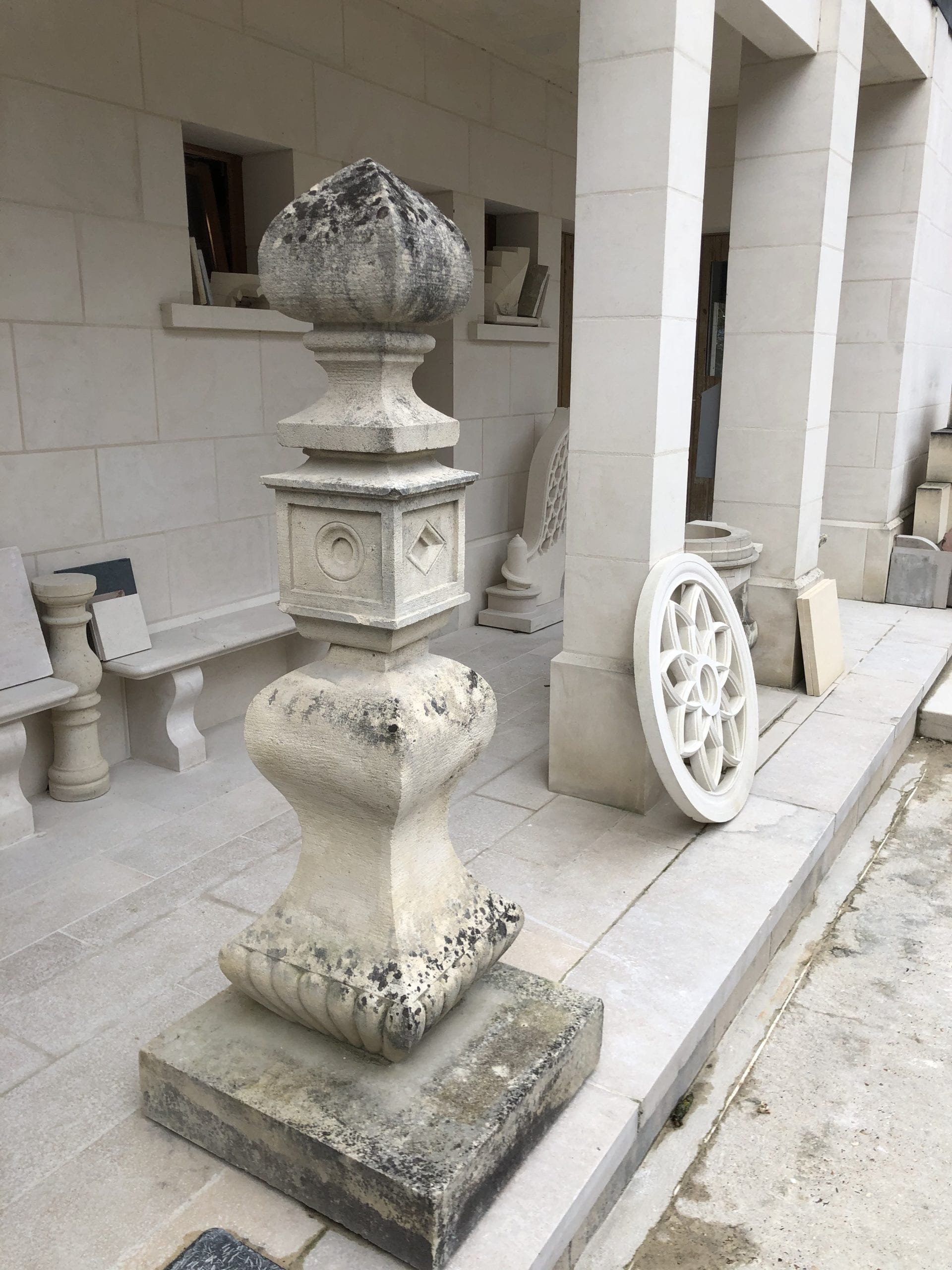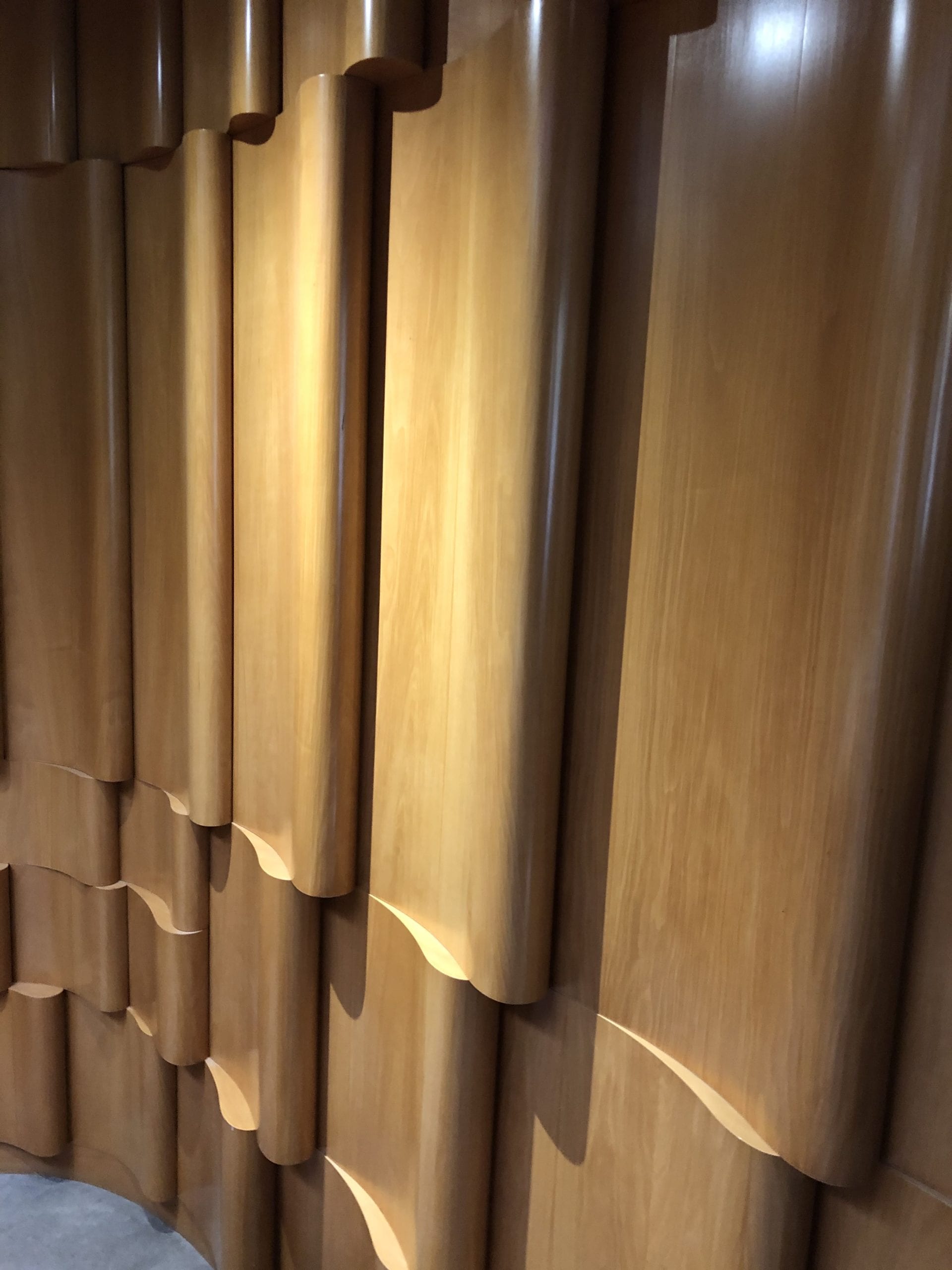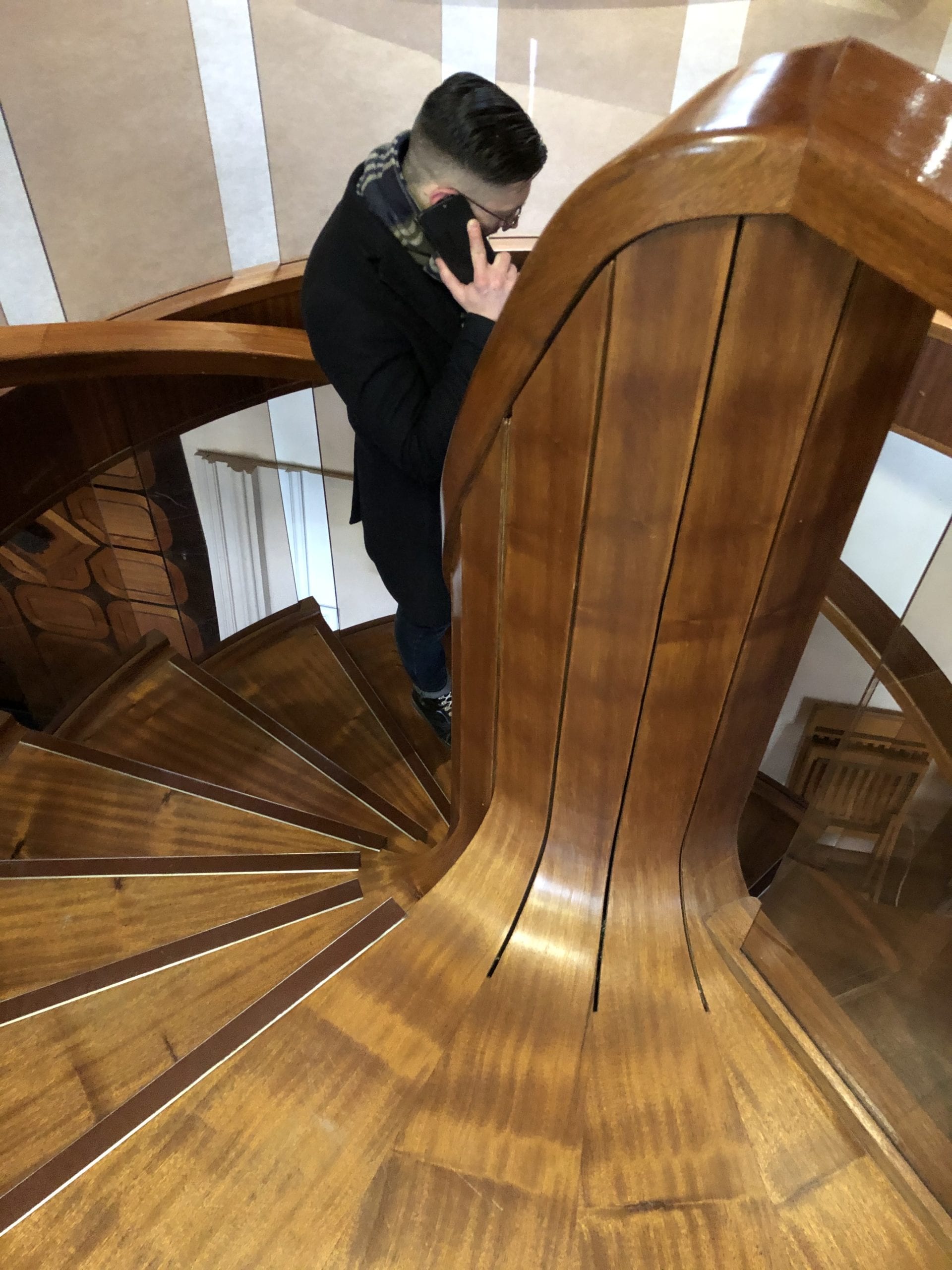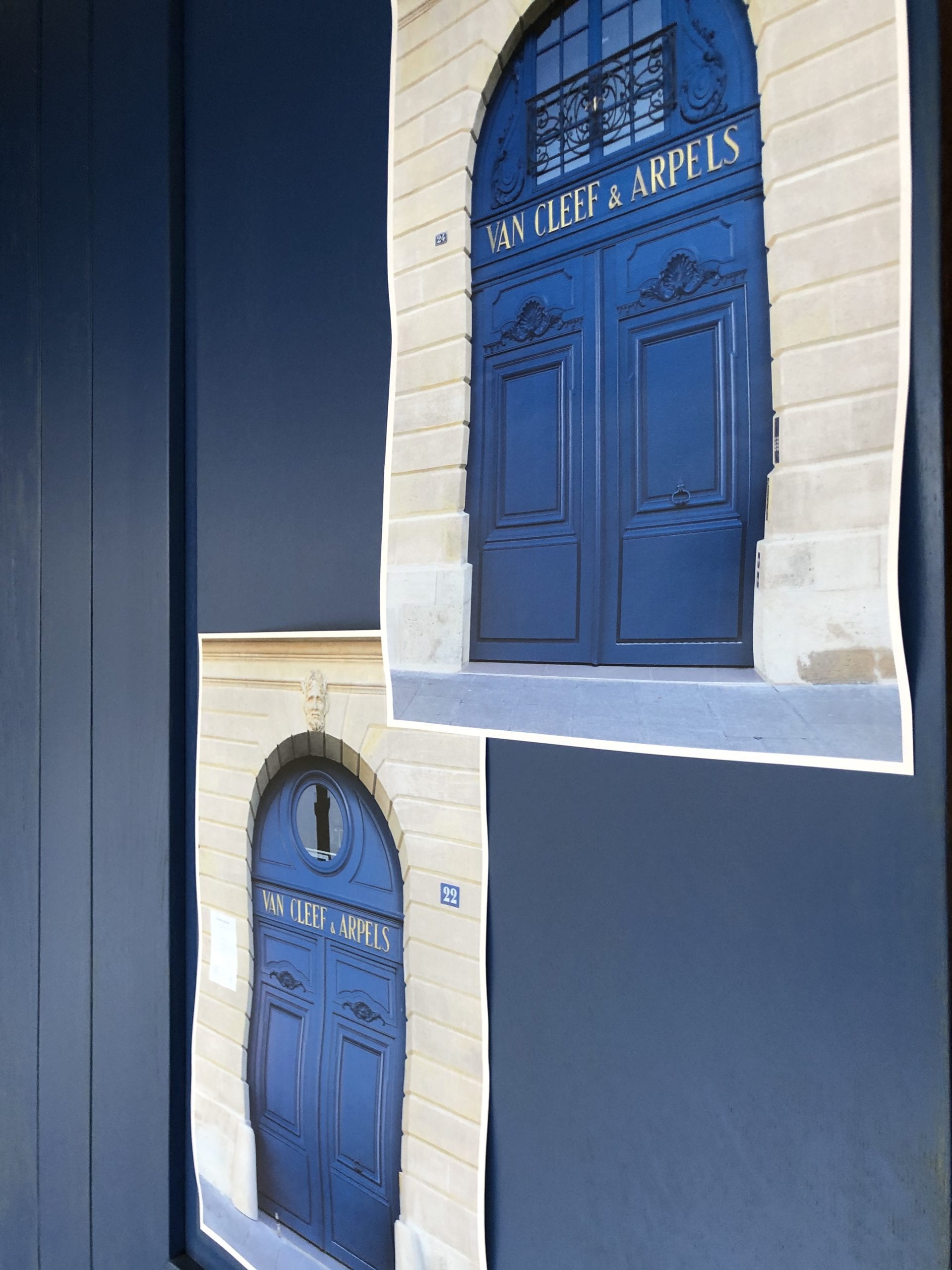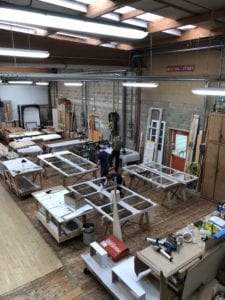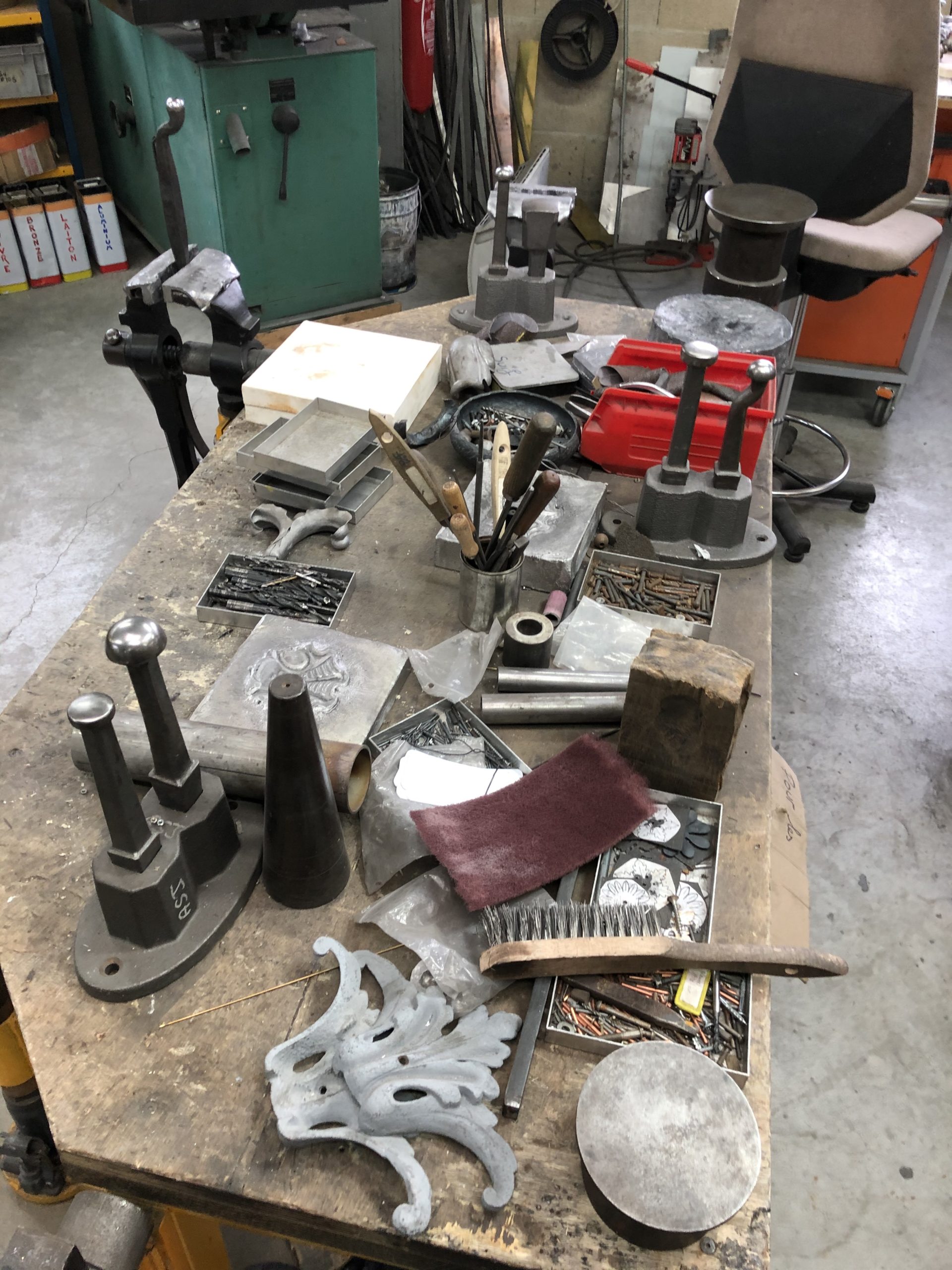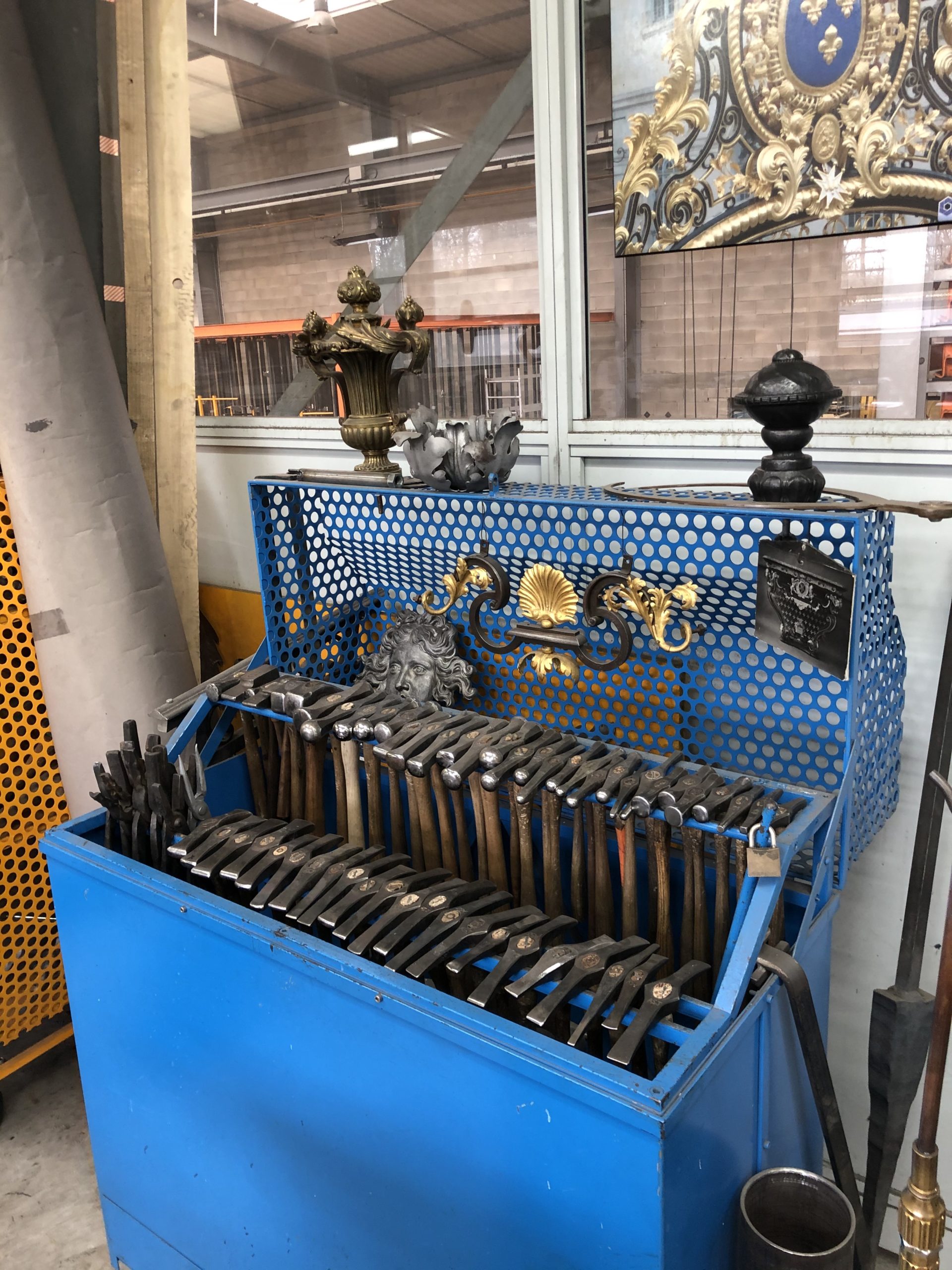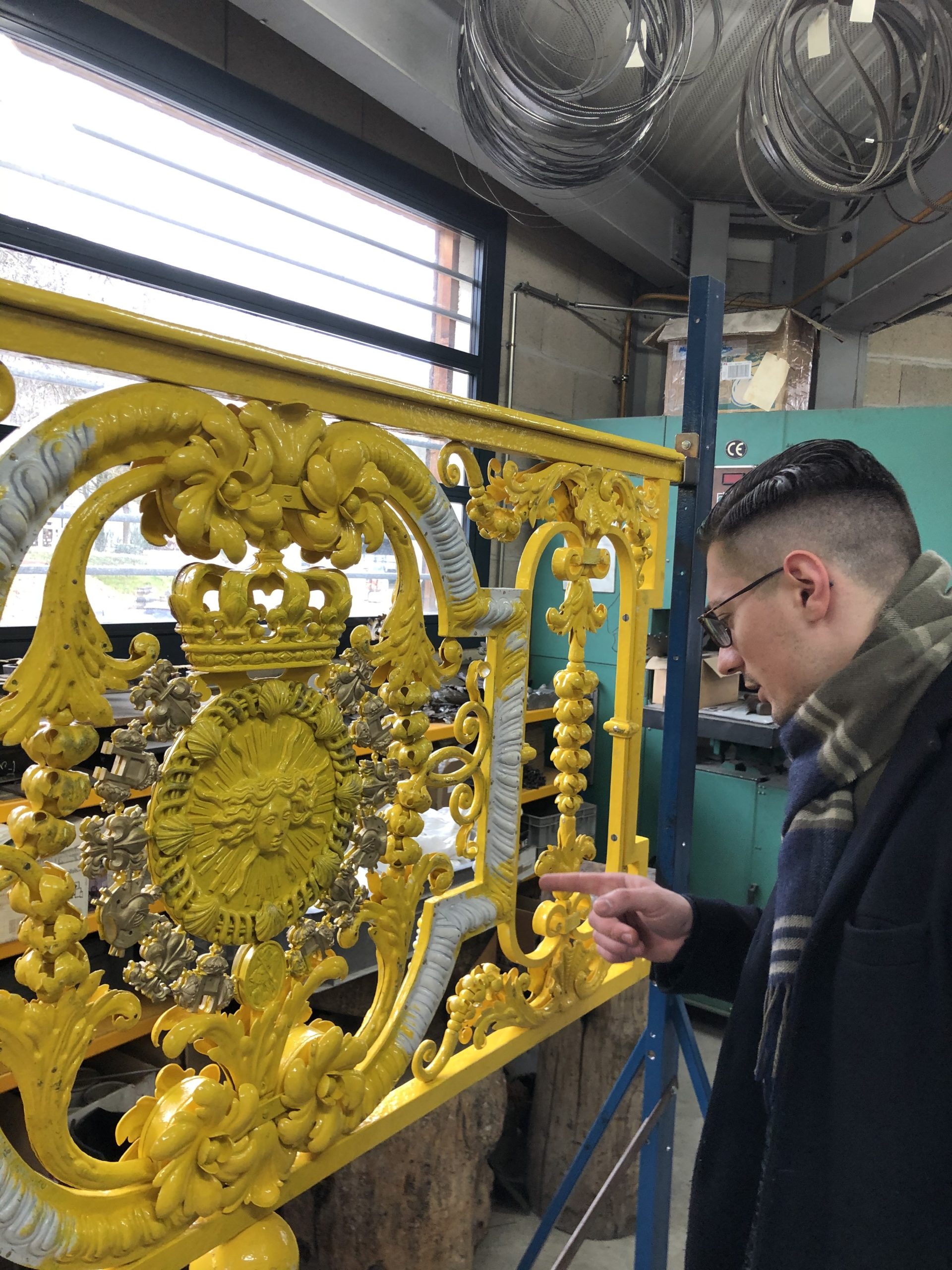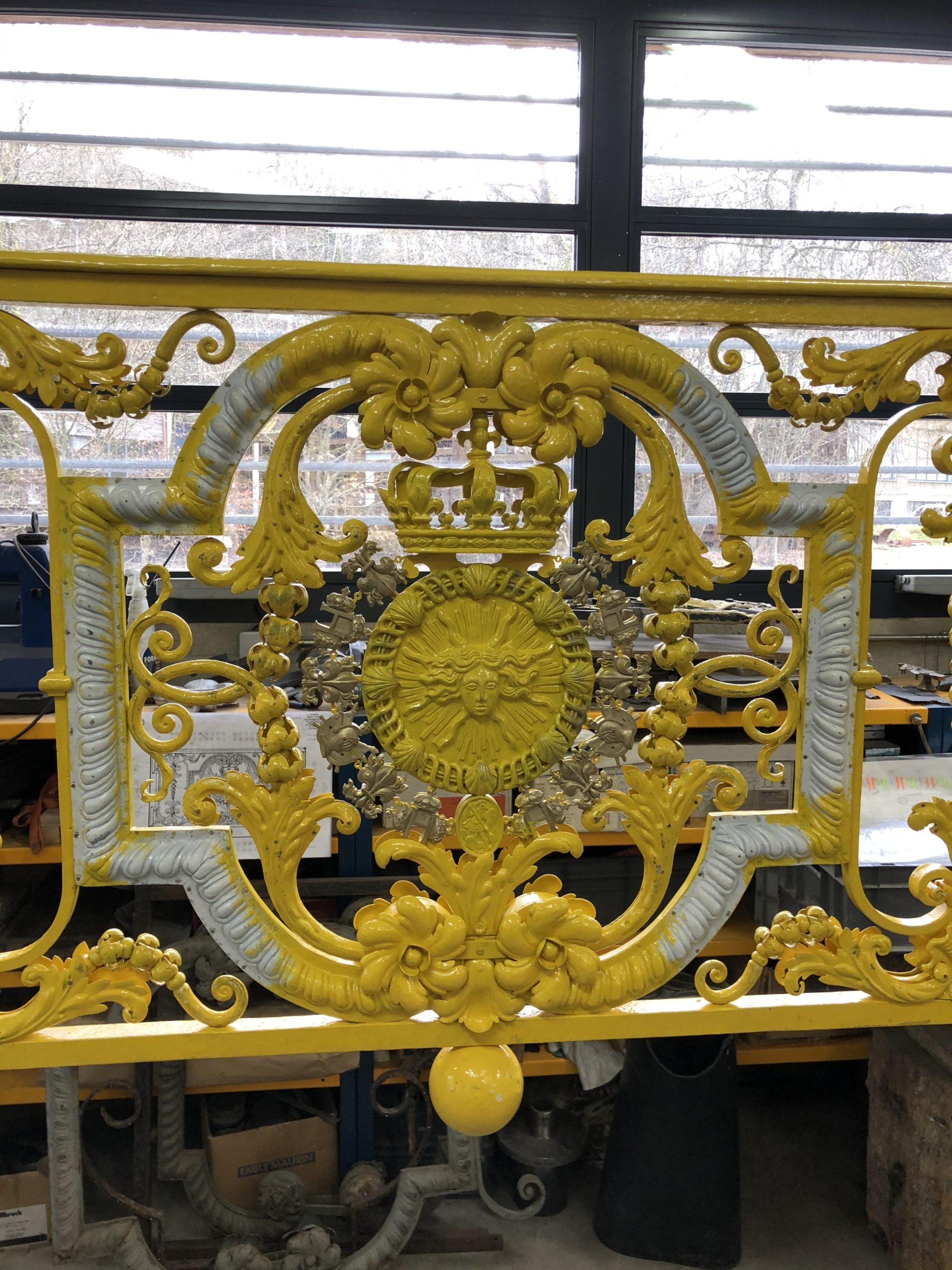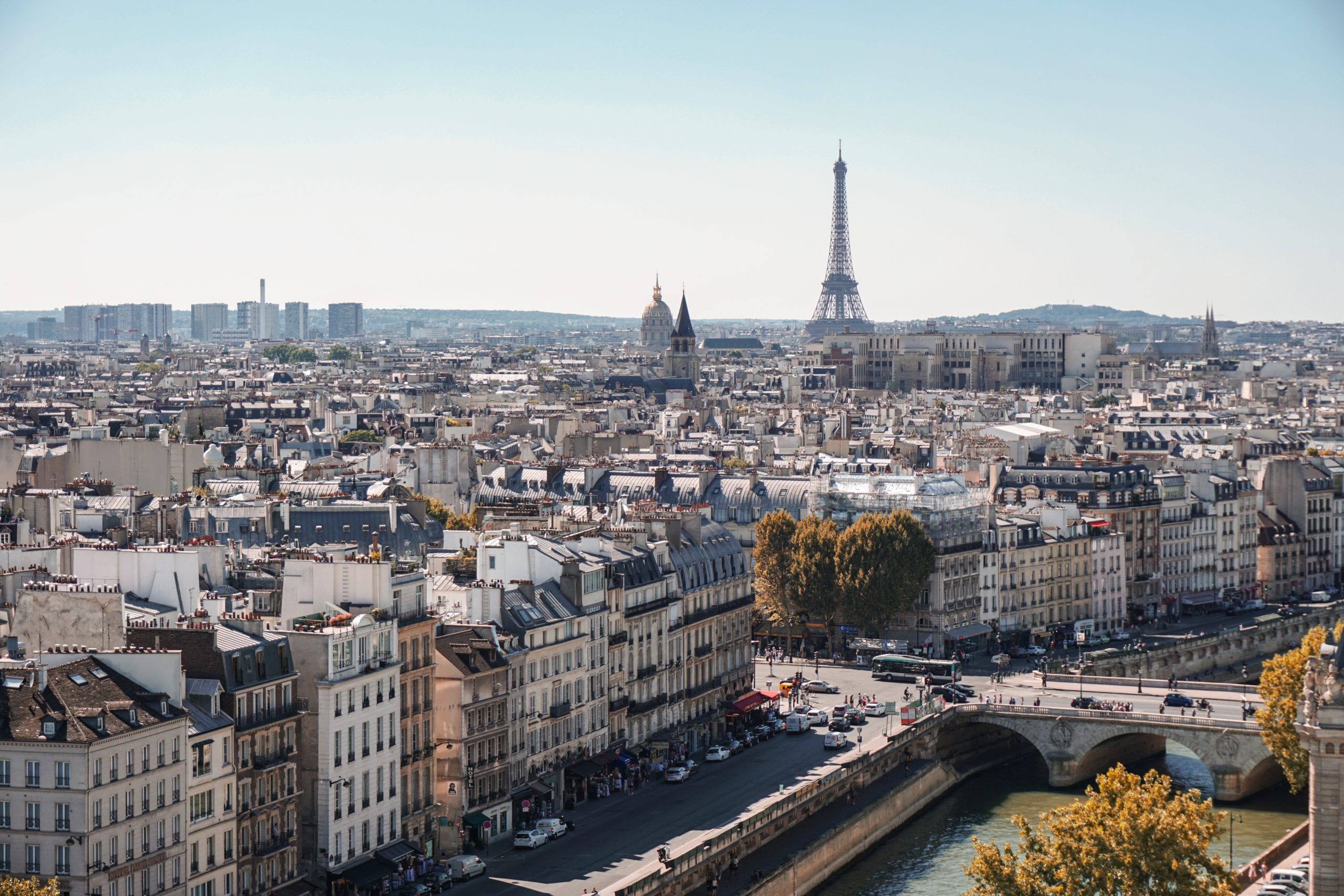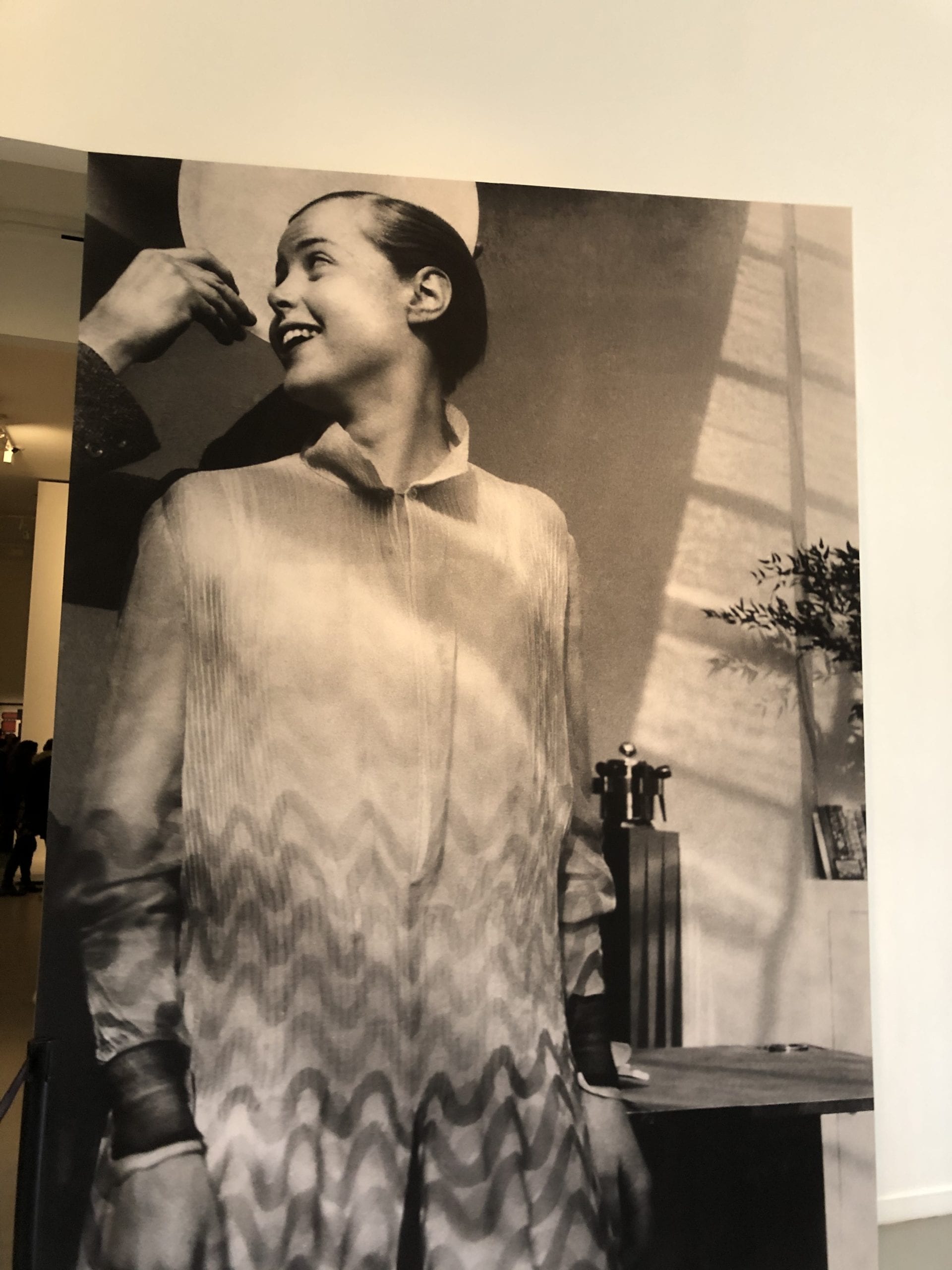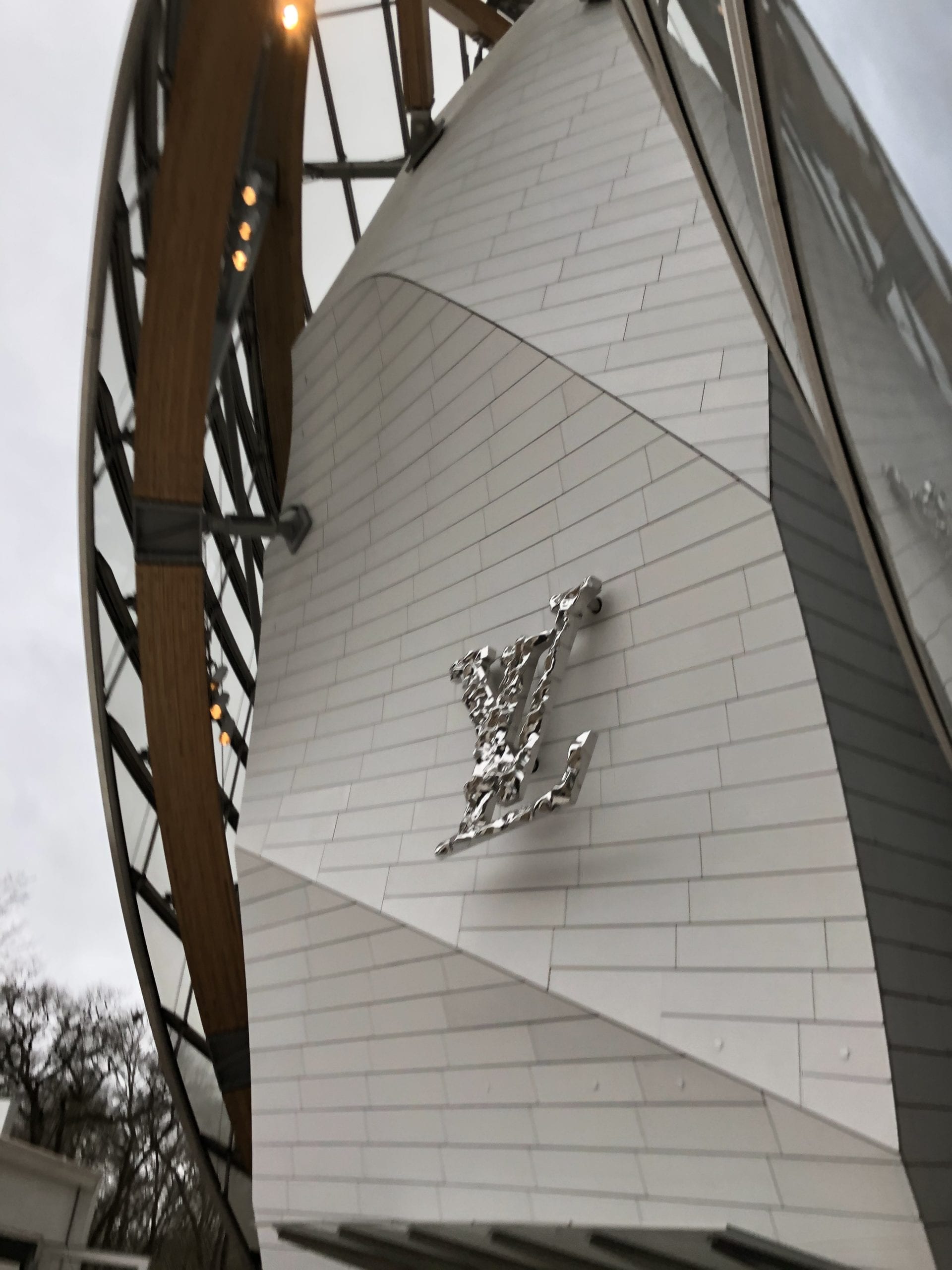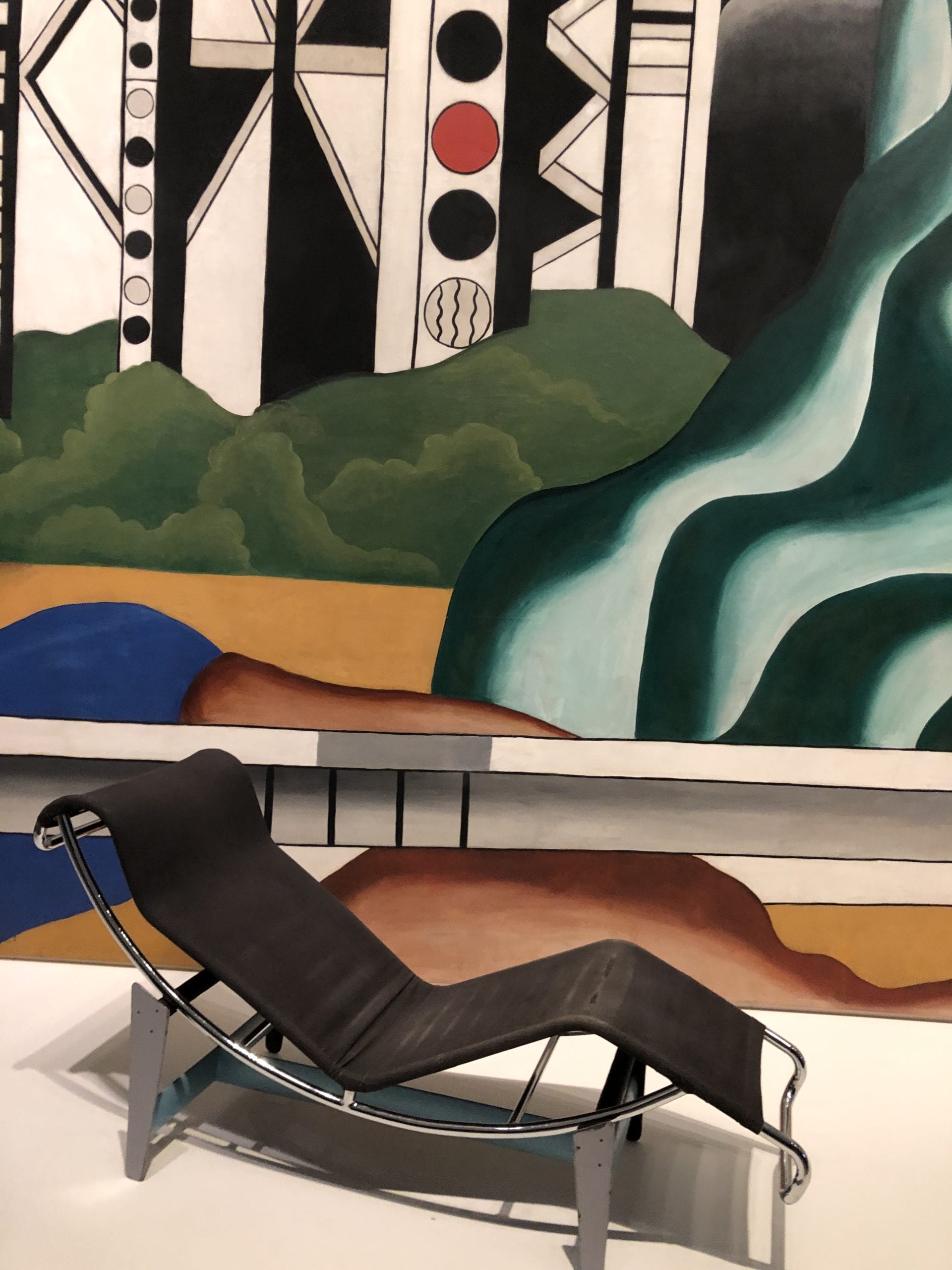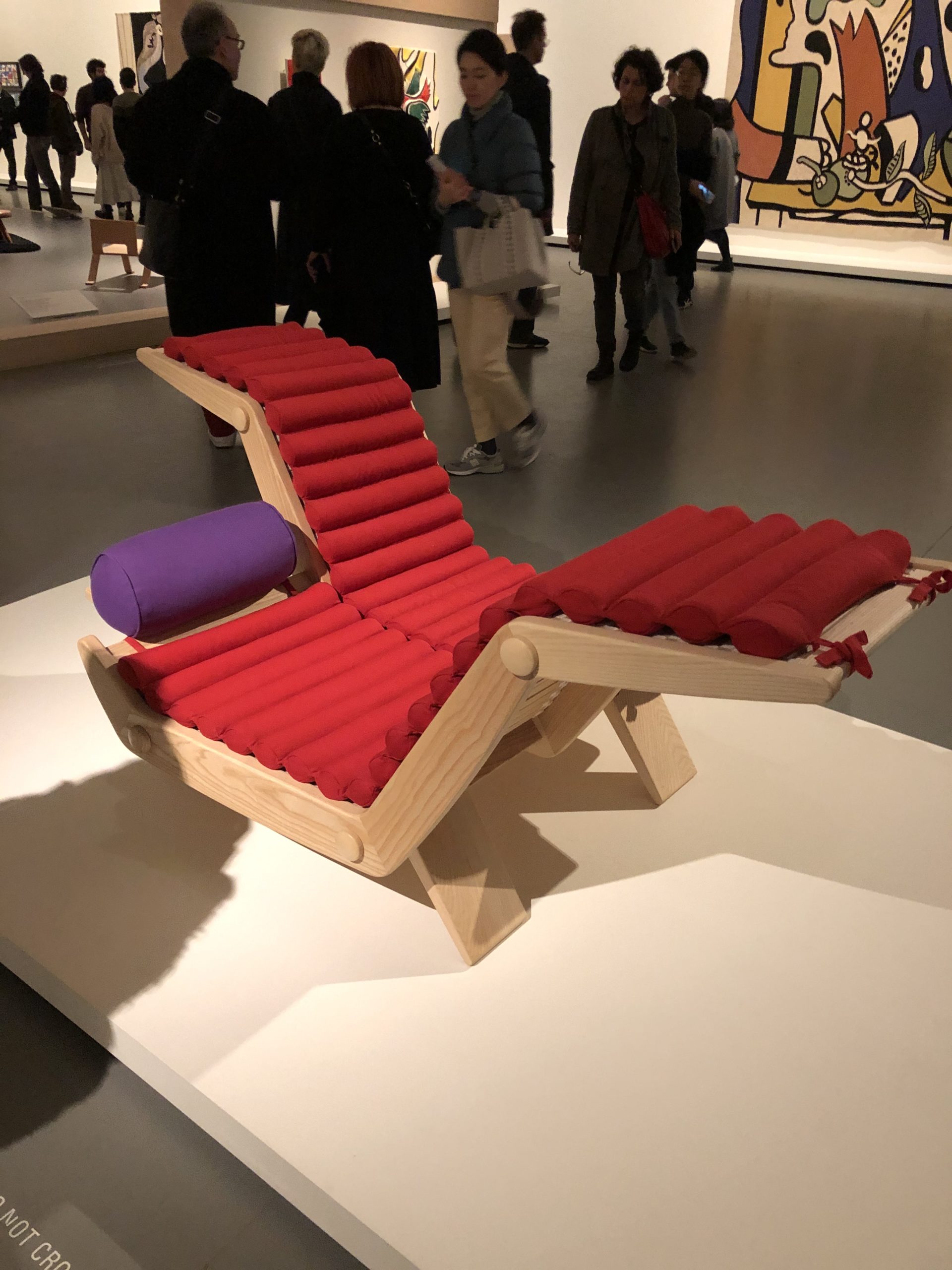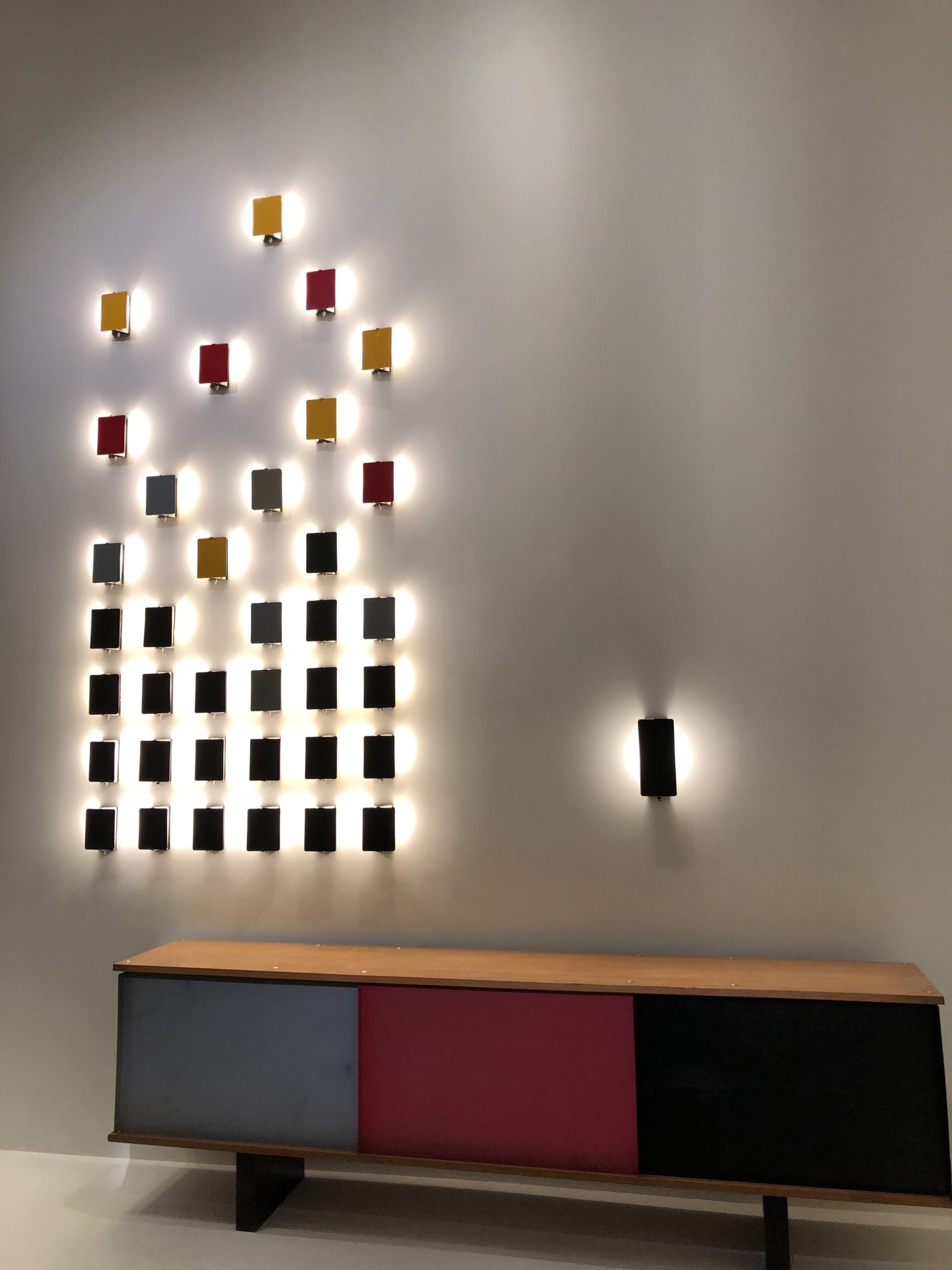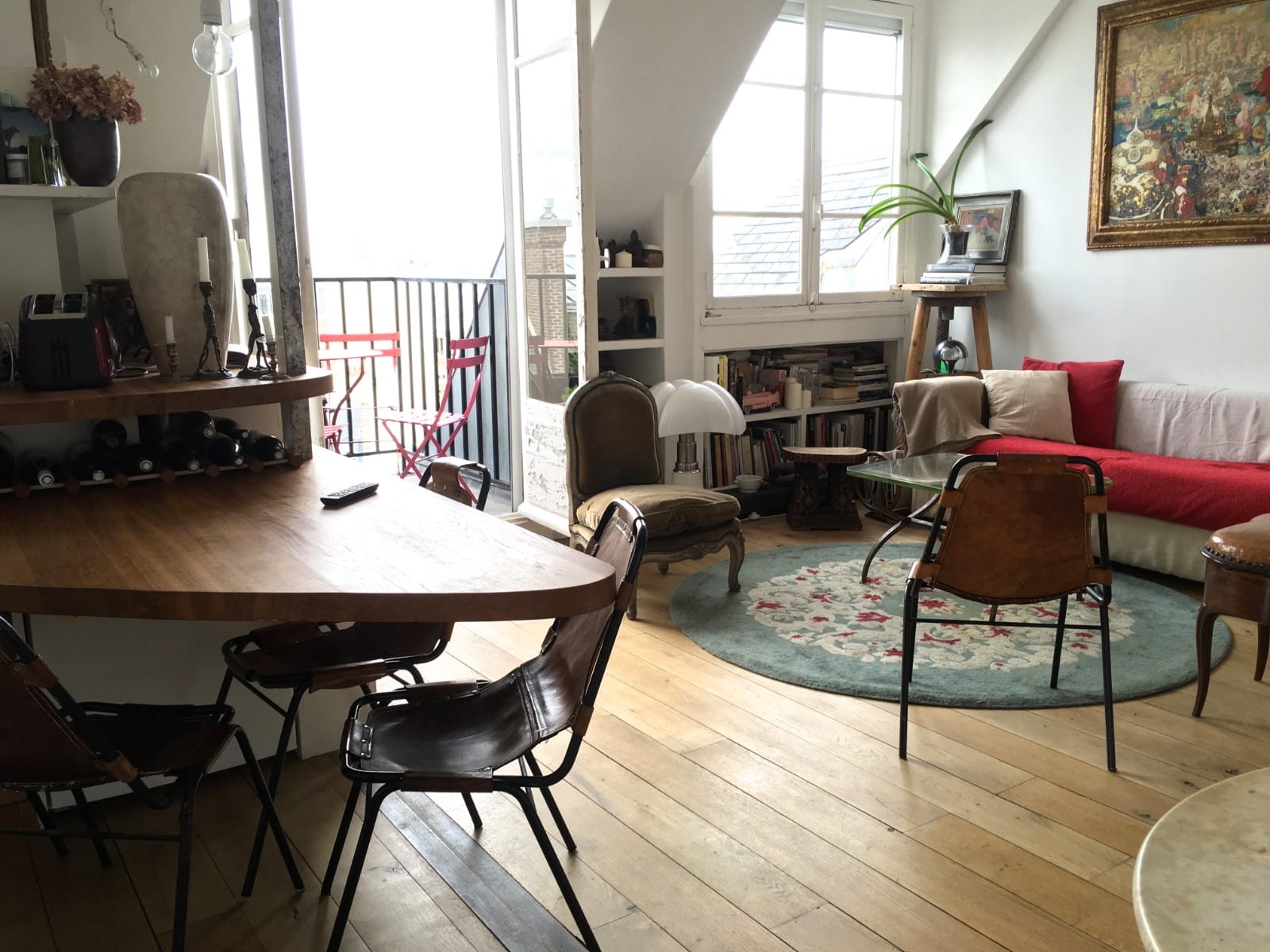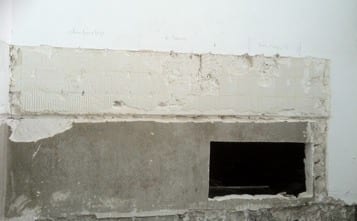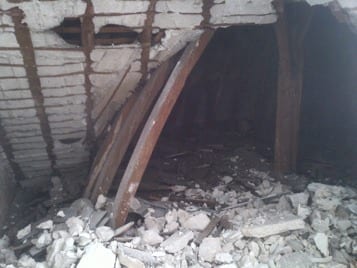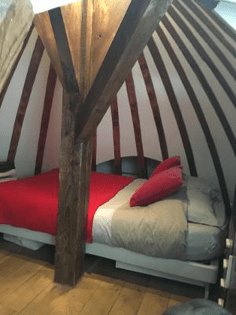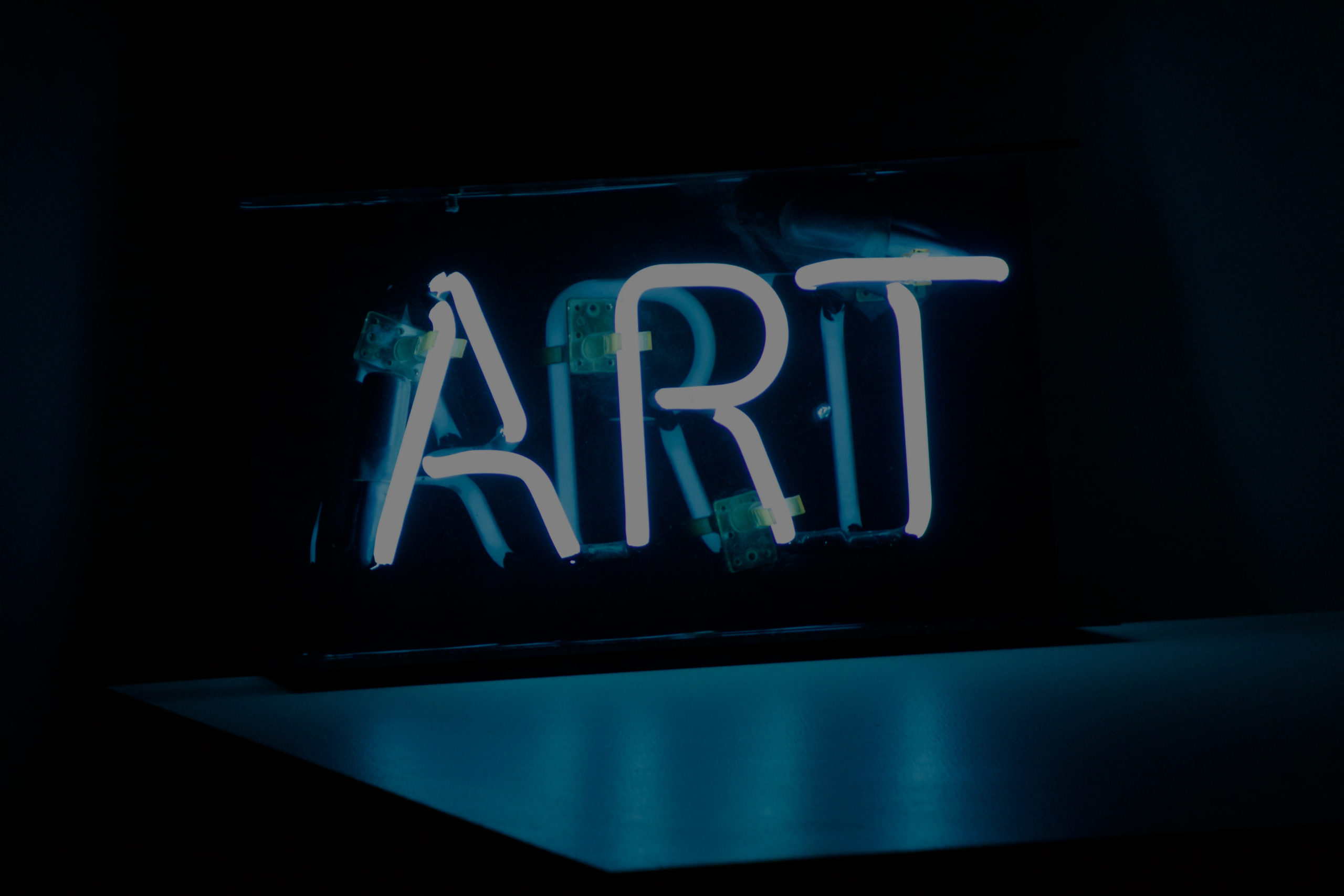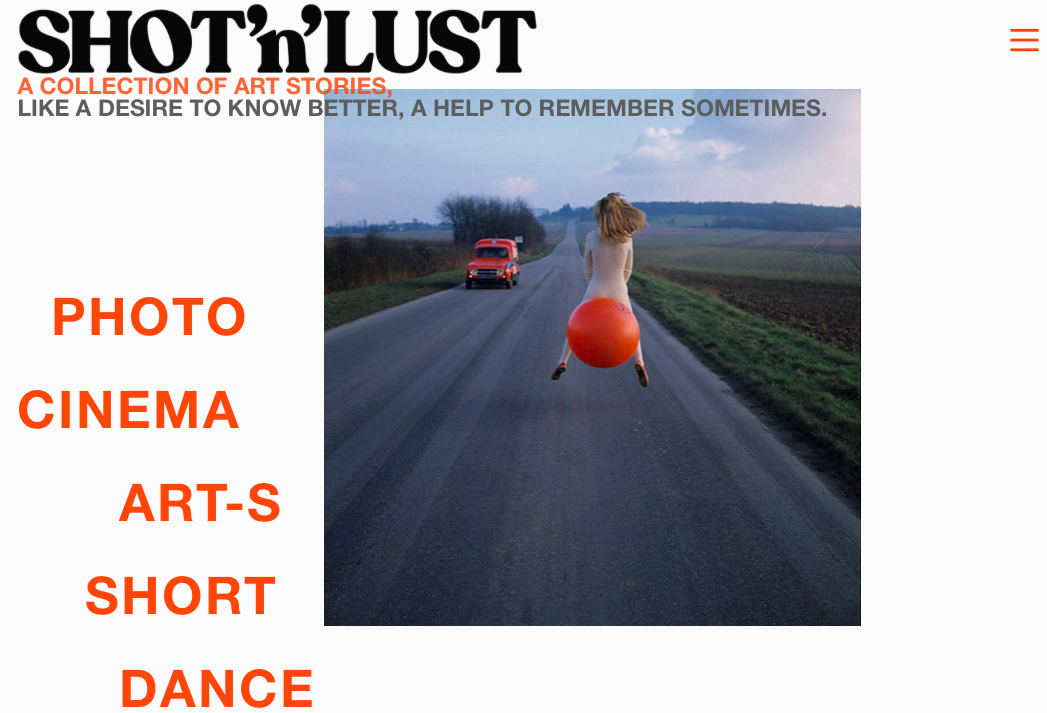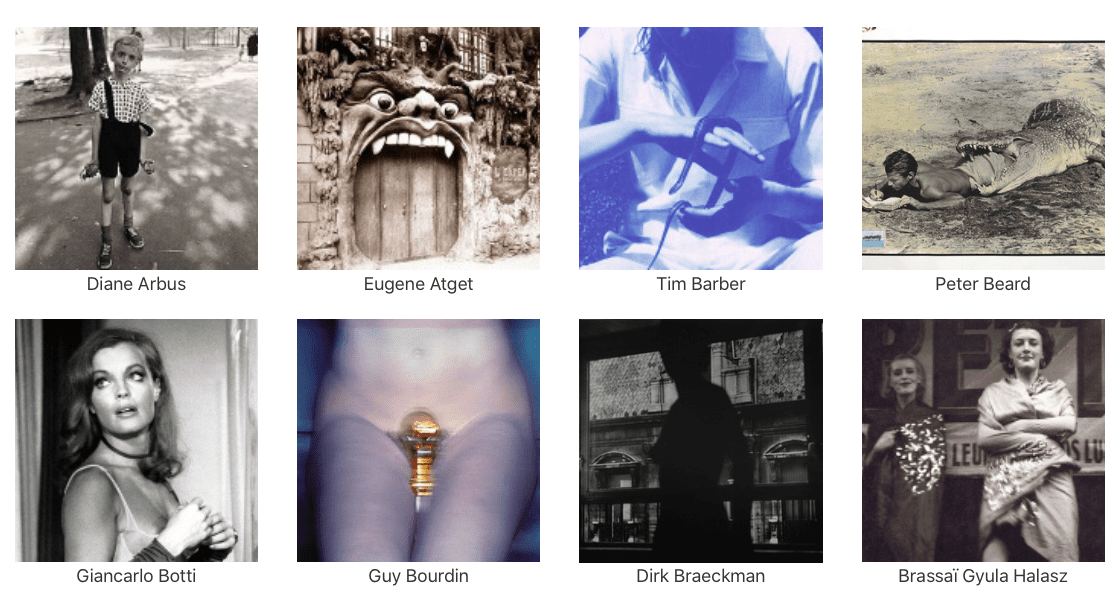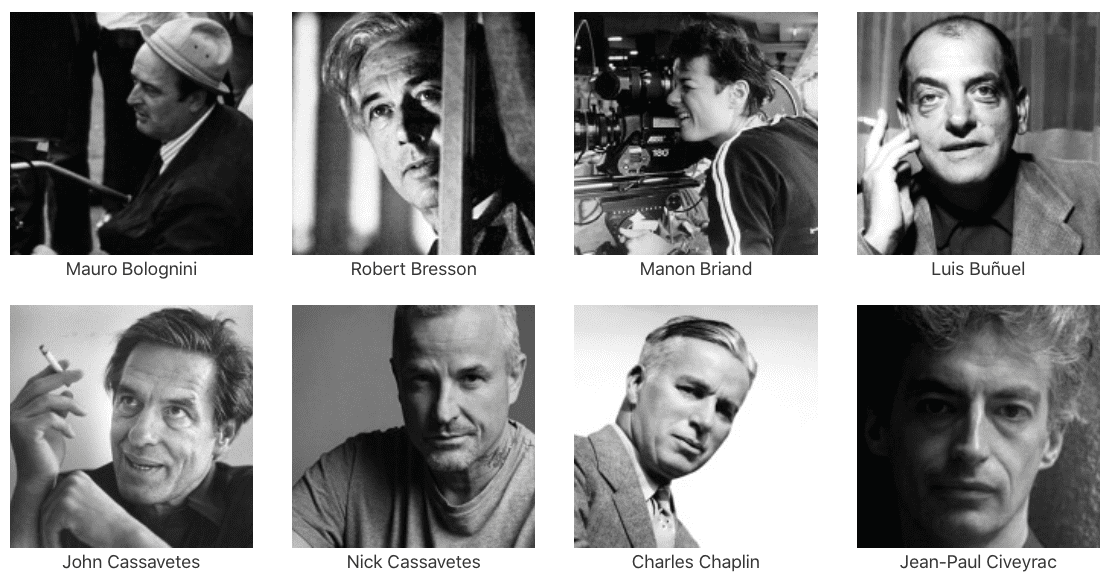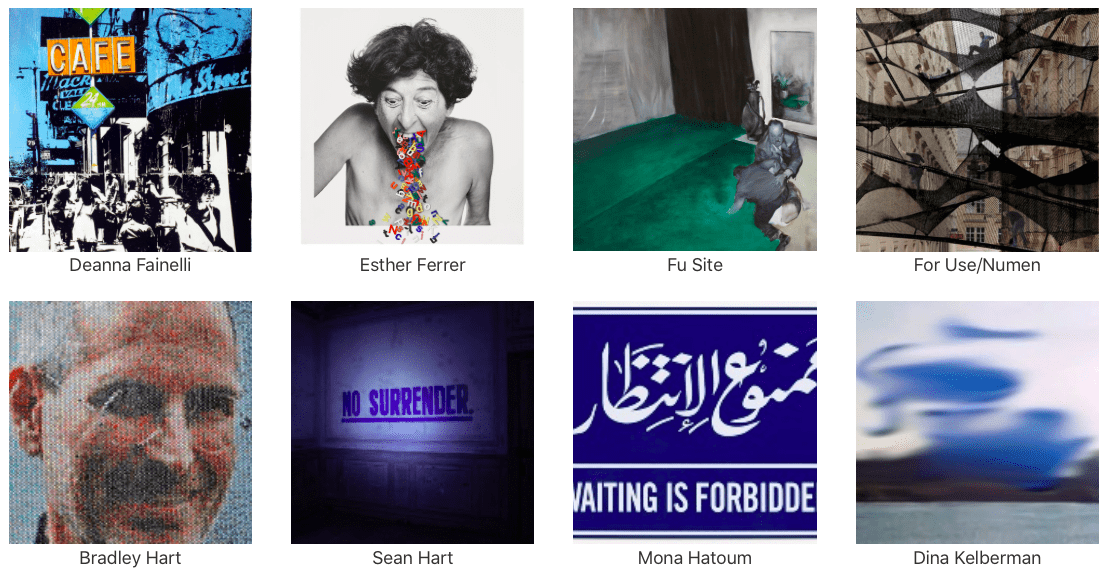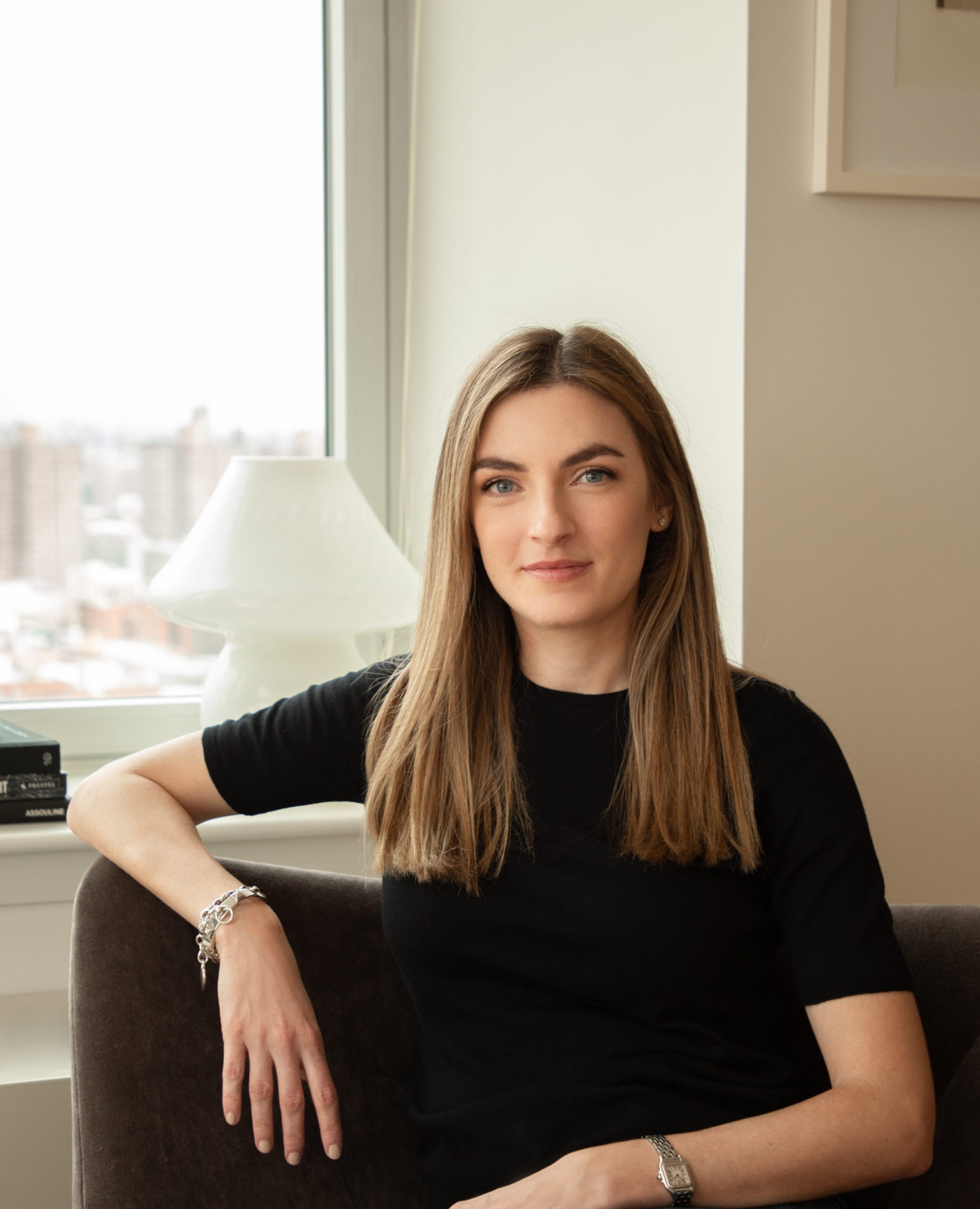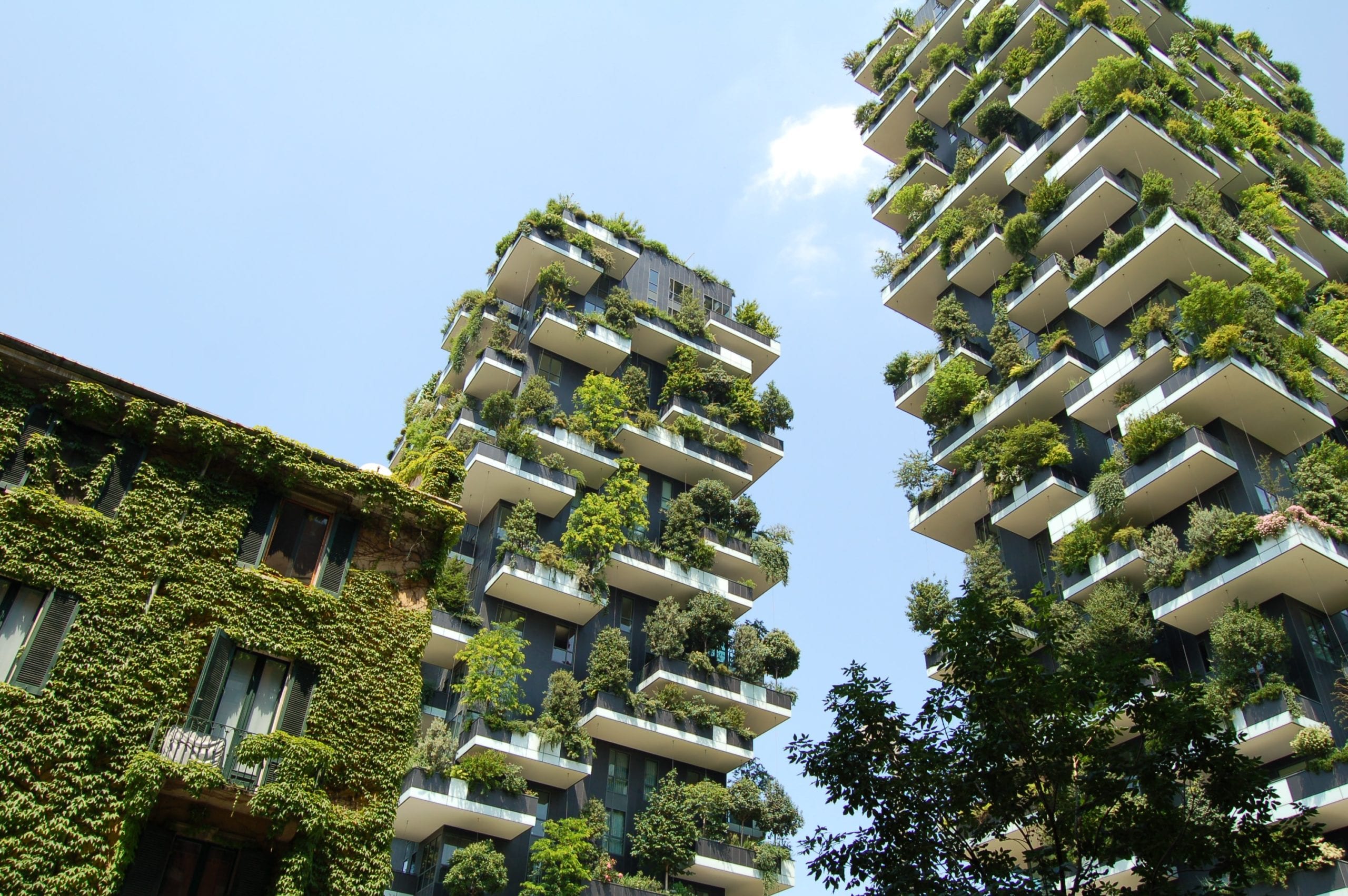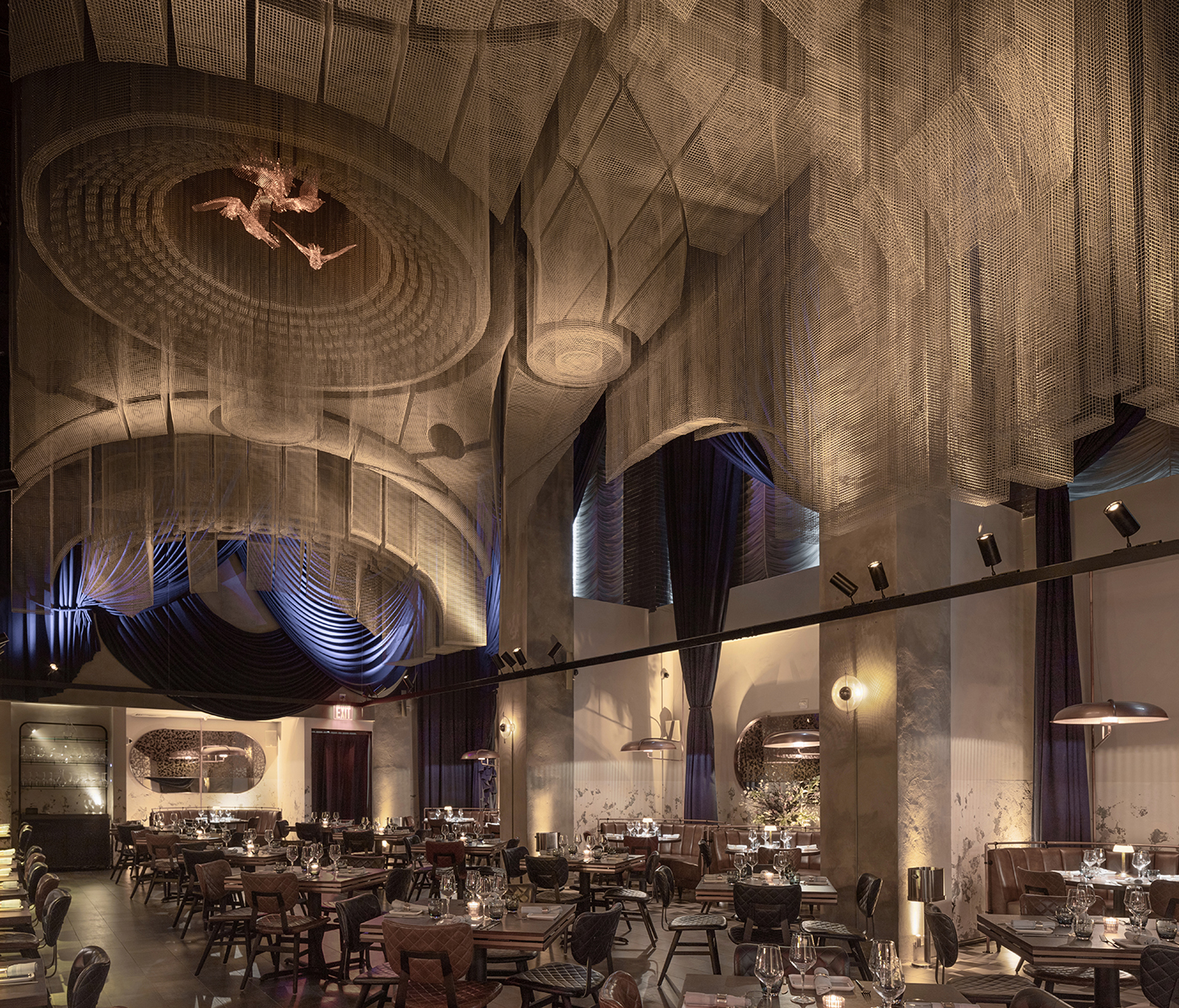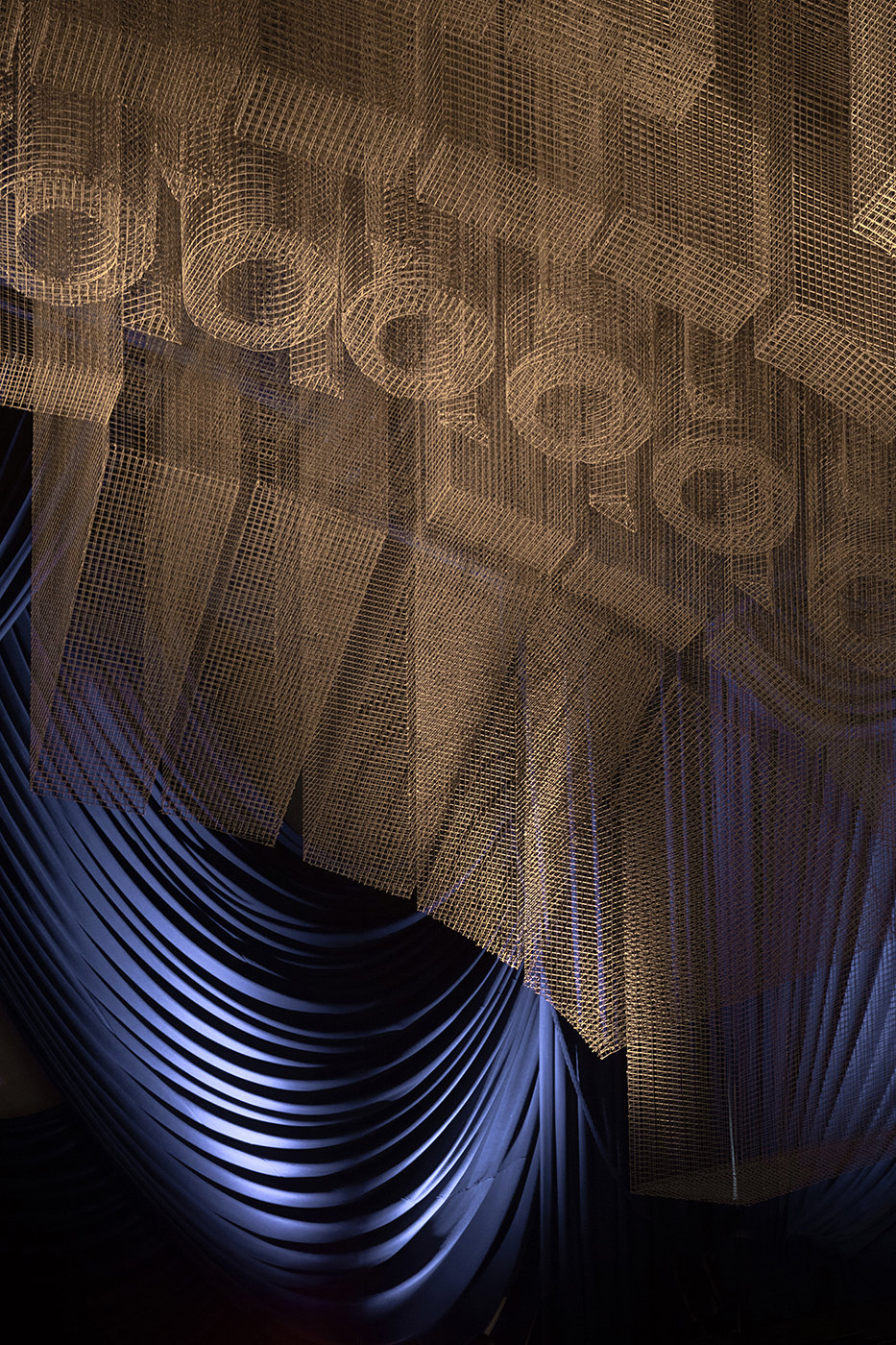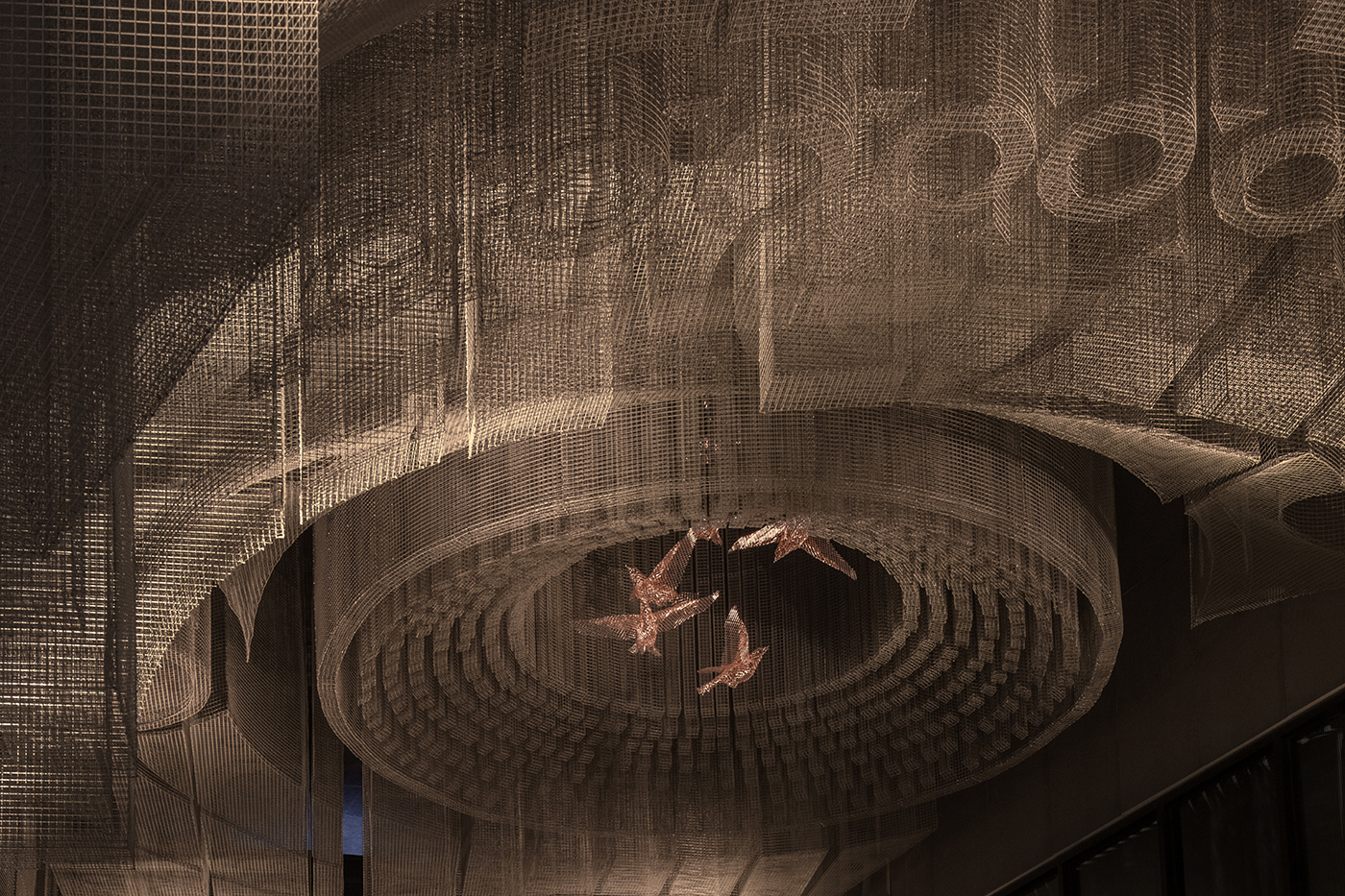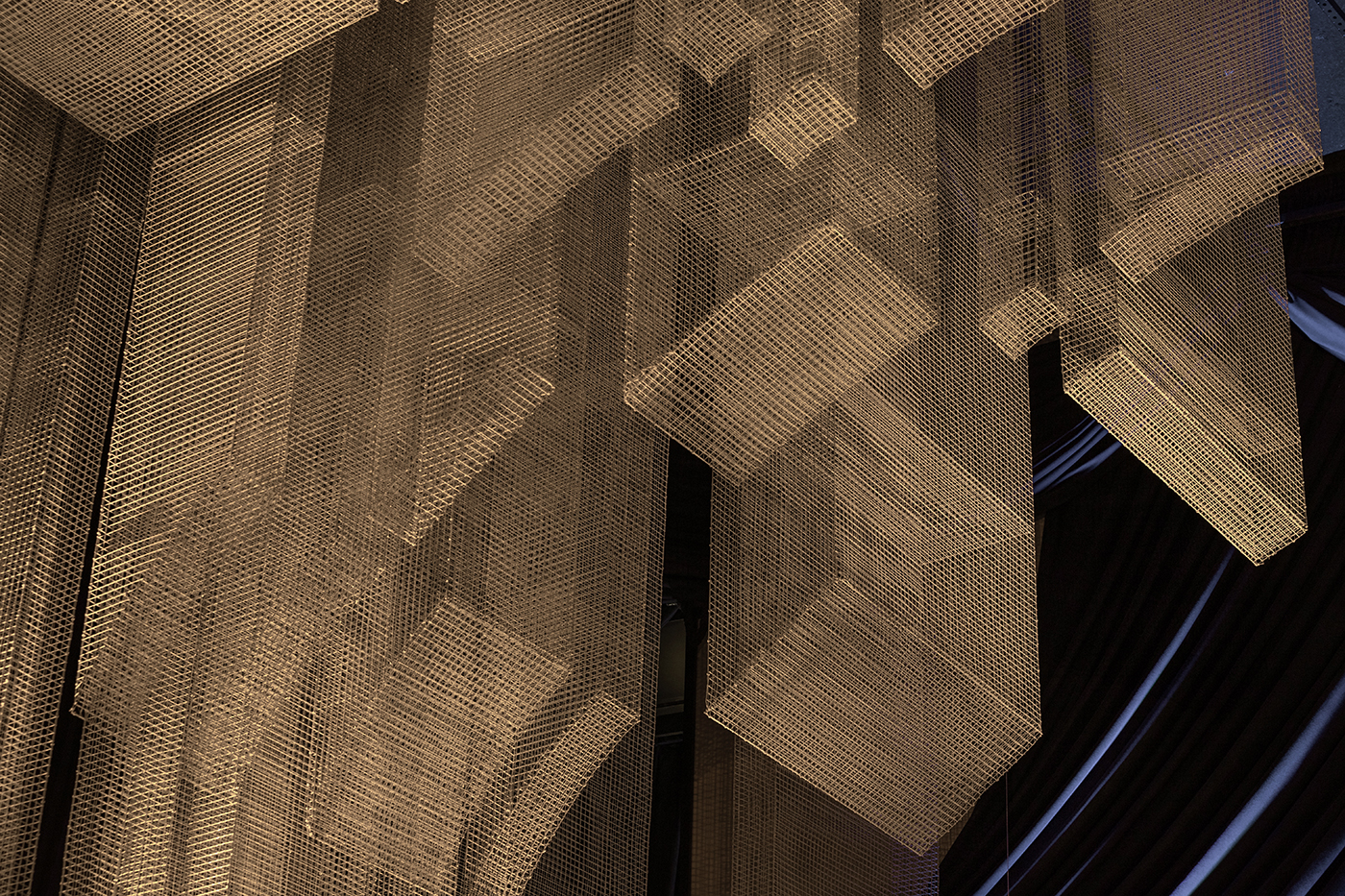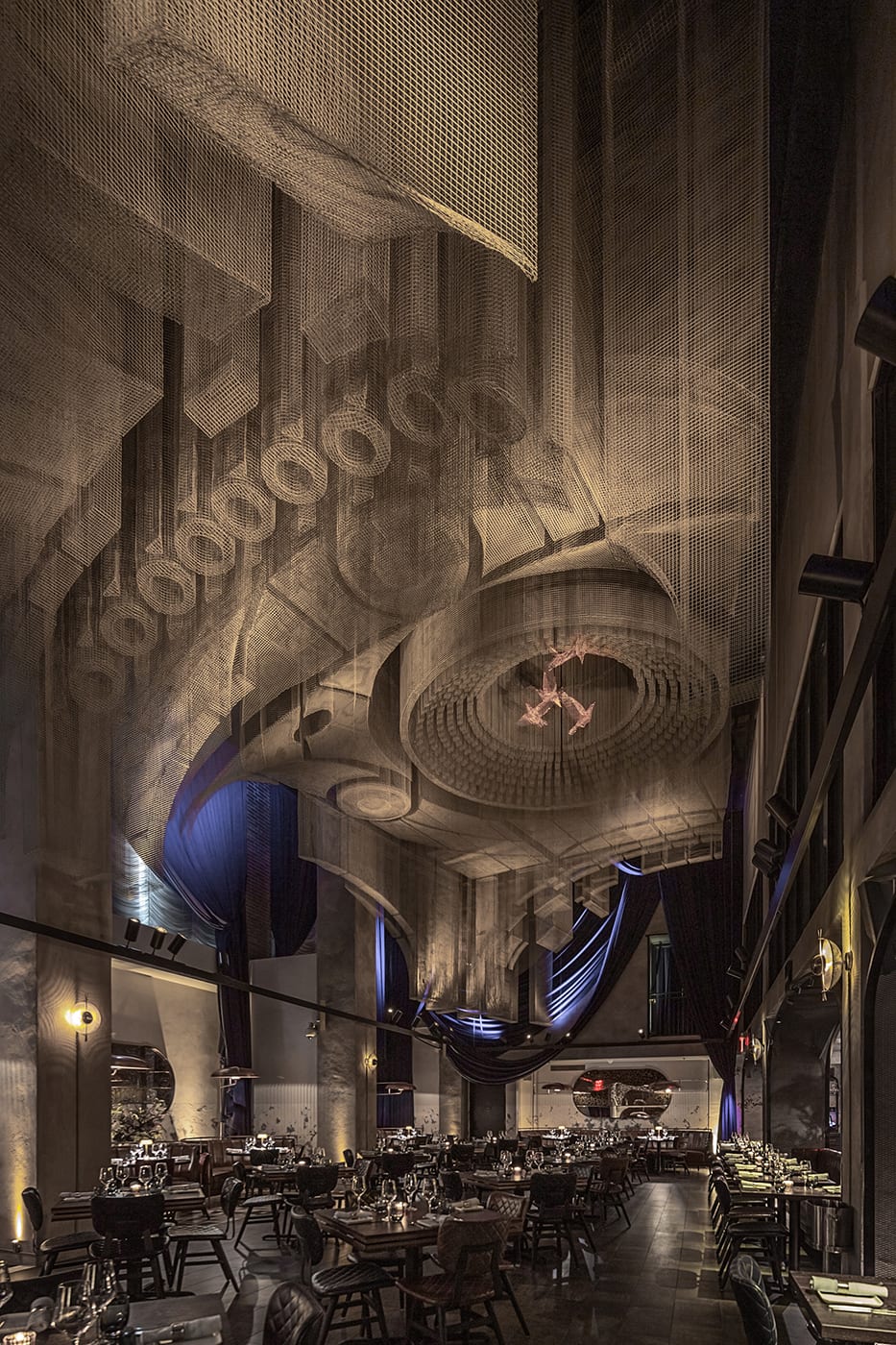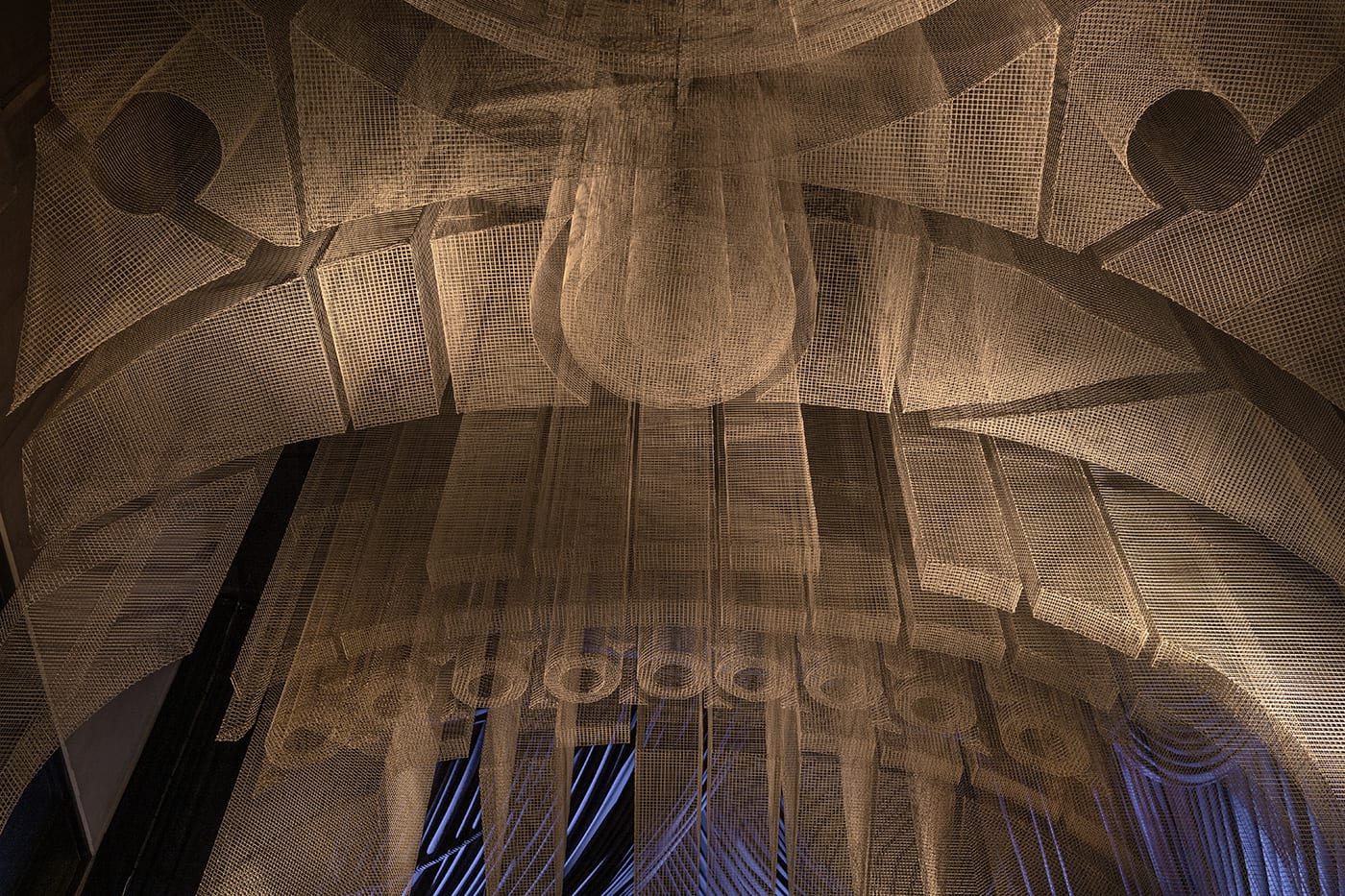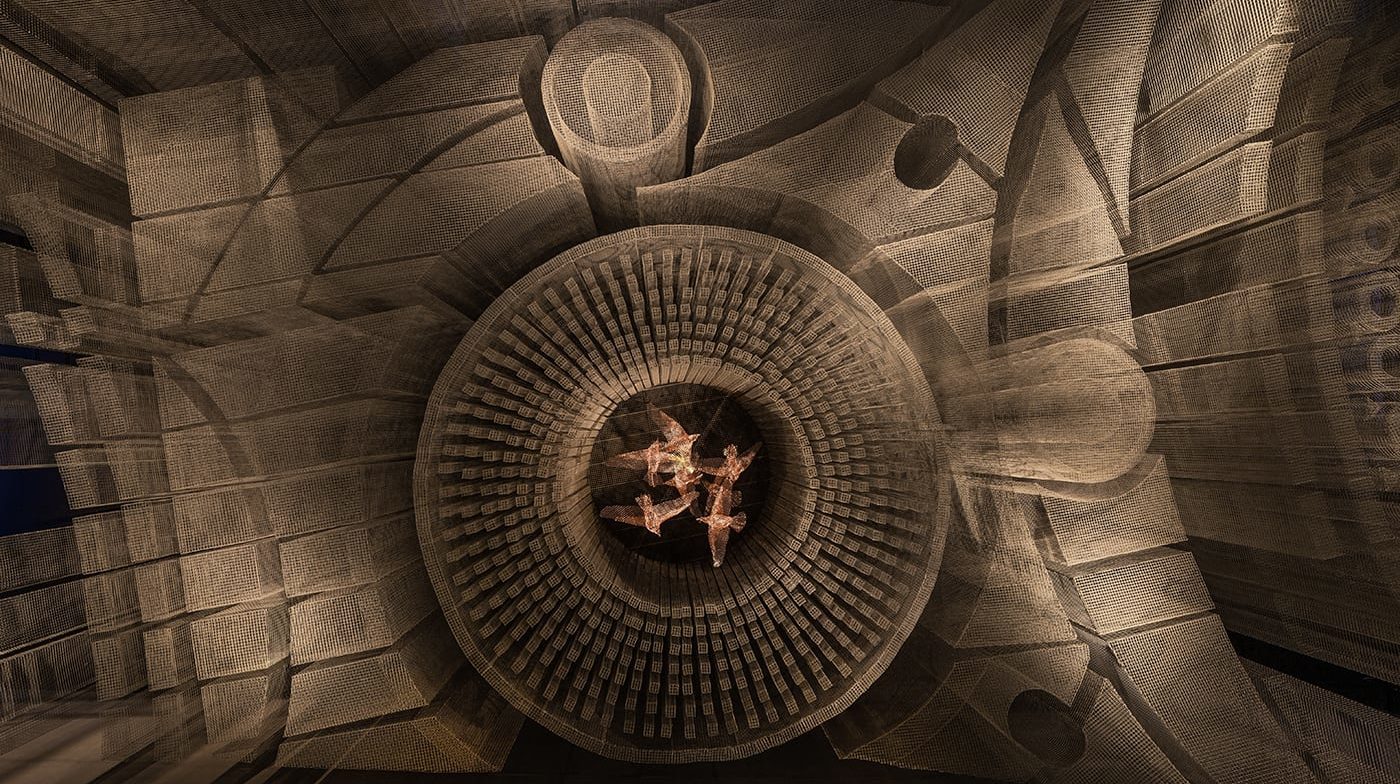Paris on my mind by Jennifer Gyr - Day 4
By Jennifer Gyr
I fell in love with Paris when as a teenager I was watching Audrey Hepburn swan through the ville lumière in the movie “Funny Face”. Over the years I have been so lucky to make many trips to this enchanted city with friends and family. My trip in late February was the first time I was in Paris by myself with my limited French vocabulary of “Bonjour”, “Merci” and “Au Revoir” (which even then I would speak in a whisper so that my Southern accent wouldn’t decimate the beauty of the language).
What a magical week it would be. As Audrey said so perfectly, “Paris is always a good idea”!
Today I am off to see another one of our partners, Declercq Passementiers. I am so looking forward to meeting Margot Declercq, who represents the 7th generation of this family and works closely with her father Jerome. The company has been designing and making trimmings and tassels in Paris since 1852. You must go onto their website to see their family tree: It is a testament to a long-standing tradition of passing on their passion, knowledge, artistry and technique through generations.
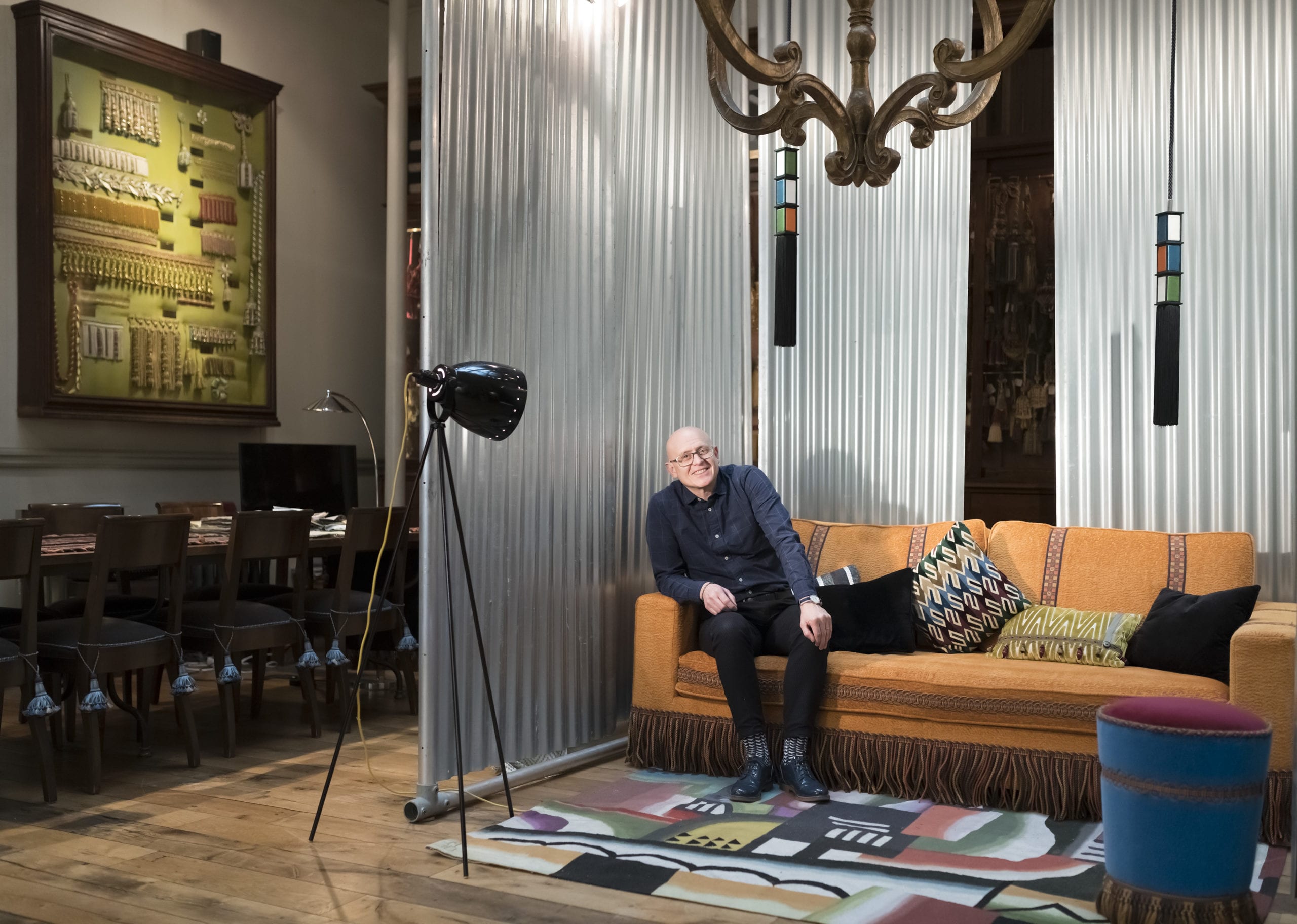
A trip through time and history with Declercq Passementiers
Margot, who is in her late 20s, shows me around her beautiful showroom that is filled floor to ceiling with so many exquisite trimmings and tassels. My eye immediately falls upon two large wooden looms that look like they belong in a museum. I ask about them and Margot jumps on one to show me how it works (the machines are from the late 1800s and are in amazing working condition). The first one requires her to lean forward in a harness, so that she is almost hanging above the threading apparatus. While pushing wooden pedals with her feet, she weaves five different shuttles back and forth between two ribbons to create an intricate pattern along the ribbon. While leaning forward in the harness, stepping down on the pedals to tighten the ribbons between each pass and counting the pattern steps in just a few minutes, she nimbly creates what looks like woven gold into the most beautifully intricate design. I am spell-bound by the process. This not only takes patience and hand-eye coordination, but the right know-how to not miss a beat and to visualize the pattern playing out, as there were neither pattern books nor notes in sight. We then turned to the second 19th century wooden machine. This one is even taller and almost reaches the ceiling. It is fully automated. When Margot turns it on, watching the mechanical gears and cranks moving, and hearing the clanking sound, makes me feel like we are in Thomas Edison’s lab and are turning on the machine that will light the first bulb. Once again, I am amazed to see how the rows of individual different colored threads are being woven into yet another intricate design and turning it into a trimming for a curtain or a piece of furniture
We start discussing how they have to prepare the material before they can even start weaving, from dying the materials to spooling the thread. They even have to hand twist some threads to create the decorative braid that will then be used in the weaving process. Some of the materials are placed on the mechanical looms to create the ribbons and braids, while others are hand-woven to create the complex velvet ribbons, braids and fringes. Margot then shows me a large tassel and I could see the various stages of craftsmanship where everything was done mostly by hand. You really start to think about how design objects are made and who makes them – the artisan at work, years of practice, precision, know-how, passion and dedication. She mentioned that a lot of their employees have worked there 20, 30 and even 40+ years. They create braids, fringes, tassels, rosettes and many other beautiful shapes. It is like making jewels out of thread.
“You really start to think about how design objects are made and who makes them – the artisan at work, years of practice, precision, know-how, passion and dedication“
Speaking of jewels, the next thing I will be seeing is one of the highlights of my trip to Paris. We proceed to a wall of tall wooden glass front cabinets and inside I see the most delicate and refined group of tassels and trimmings, and they belonged to… Marie Antoinette! I feel a sense of awe seeing the light pastel colors and delicate trimmings, which encapsulate her sense of style and personality. I could even imagine her wearing some of the rosettes and fringe pieces in her hair, around her neck or adorning her dresses besides her furniture and curtains and bed. There is even a bouquet of flowers made out of fringes and an extremely delicate looking woven basket with light pink flowers and greenery scattered all around. It looks like a lovely bird’s nest that fell on the forest ground and flowers started growing on it. Do we even think about such detail and artistry when we buy things in our times? Their imagination was so fertile. I then looked at the next cabinet and it felt like a trumpet started playing and everything got bigger and bolder and more masculine and imperial: I was now looking at tassels that were made for Napoleon personally. In 1972, Declercq acquired a very old trimmings company from the 18th century, which included the archives of Marie Antoinette, Napoleon and Louis XVI, as well as old pattern books, which they now have on their library shelves. Louis XVI’s and Napoleon’s were impressive to see, but Marie Antoinette’s really made a lasting impression on me. Margot pointed out a trim that belonged to her, and again it had the most delicate, small flowers, bows and greenery tumbling off of a pale, woven ribbon. She told me that recently a Japanese couple asked Declercq to recreate this trim, and they used it all over their bedroom as they wanted to feel like Marie Antoinette. We then passed by a mannequin that they had adorned with a makeshift dress made of tassels and trimmings and it got me thinking that this beautiful craft doesn’t have to be just for your home. Let your imagination carry you away.
As I was leaving and saying my goodbyes, a large piece of trim hanging near the door caught my eye. Purple is my favorite color, and I loved how regal it looked so I asked her about it. Margot gave me a big smile and said, “My father designed it and he named it after me”. The family legacy lives on.
A lovely stop at Buly 1803
I headed back to the 6th and 7th to visit two of my favorite stores that I always go to every time I am in Paris.
I walk across the Pont Neuf and enter another world at l’Officine Universelle Buly (also known as Buly 1803) on Rue Bonaparte in the 6th. This is one of the most unique beauty boutiques in Paris (and perhaps the world). Their products, packaging, store design, history and even the store clerks make this such a special experience. I open the large glass door and am immediately transported back in time to an 18th century apothecary and I feel like I have stepped into a Visconti meets Wes Anderson film. There is such attention to detail from the grand noble wooden cabinets filled with the most beautiful array of lotions and potions flanked by rich marble countertops where you can sample the products. I walk over the worn blue-green tiles with the Buly “coat of arms” and feel like I am walking in an old Italian palazzo. The company began over 200 years ago and had trend-setting formulations. Sadly, it had faded away but thankfully was revived a few years ago with new owners. The salesclerks all wear black skirts and tights and black sweaters over a stiff white shirt. A salesclerk graciously greets you upon your arrival and stays with you and gives you all of her attention during the sampling, selecting and buying. My lovely salesclerk had the perfect black bob and red lipstick. Tres chic. The soaps, lotions and perfumes have the most intoxicating, decadent and alluring scents. It was so hard to pick one so I settled on “Rose” and bought several as gifts.
Then the fun really begins as one becomes their own designer in picking out all the details. The clerk swiftly disappears to imprint the initials in gold or silver of each recipient of the soaps. I am then presented with a large album to select a vintage label to adorn the soap boxes that are then intricately wrapped in exquisite paper. The most beguiling prospect of the entire event is the final detail. An in-store calligrapher sits at a beautifully appointed desk with an inkwell and quill and in front of you delicately writes each name of the recipient of each gift. I even had to buy one for myself just to have this special and unique objets d’art. This is not a shop to come to in a hurry. Instead, you will revel in the act of slowing down and enjoying every moment there.
Inside Karl Lagerfeld’s Bookstore
My final stop of the day is what I consider my “candy store” as I can never leave with just one item. The celebrated fashion designer, Karl Lagerfeld, opened a bookstore, 7L Bookshop, in 1999 on Rue de Lille right across the street from my friends’ 1831 Art Gallery, in the heart of Carre Rive Gauche. As Karl once said, “I have a fatal attraction for books. A disease I don’t want to be cured of…I could not live without them”. I, too, suffer from this “disease”. The bookstore has a fascinating selection, ranging from photography, design, interior design and architecture to fashion, jewelry, textiles, gardens and cookbooks. They also have catalogs on international exhibitions (which can be hard to find) and several books written and edited by Karl himself. I feel like it is a “book museum” as I am always learning and being introduced to a broad range of topics. Karl was legendary in his book buying sprees.
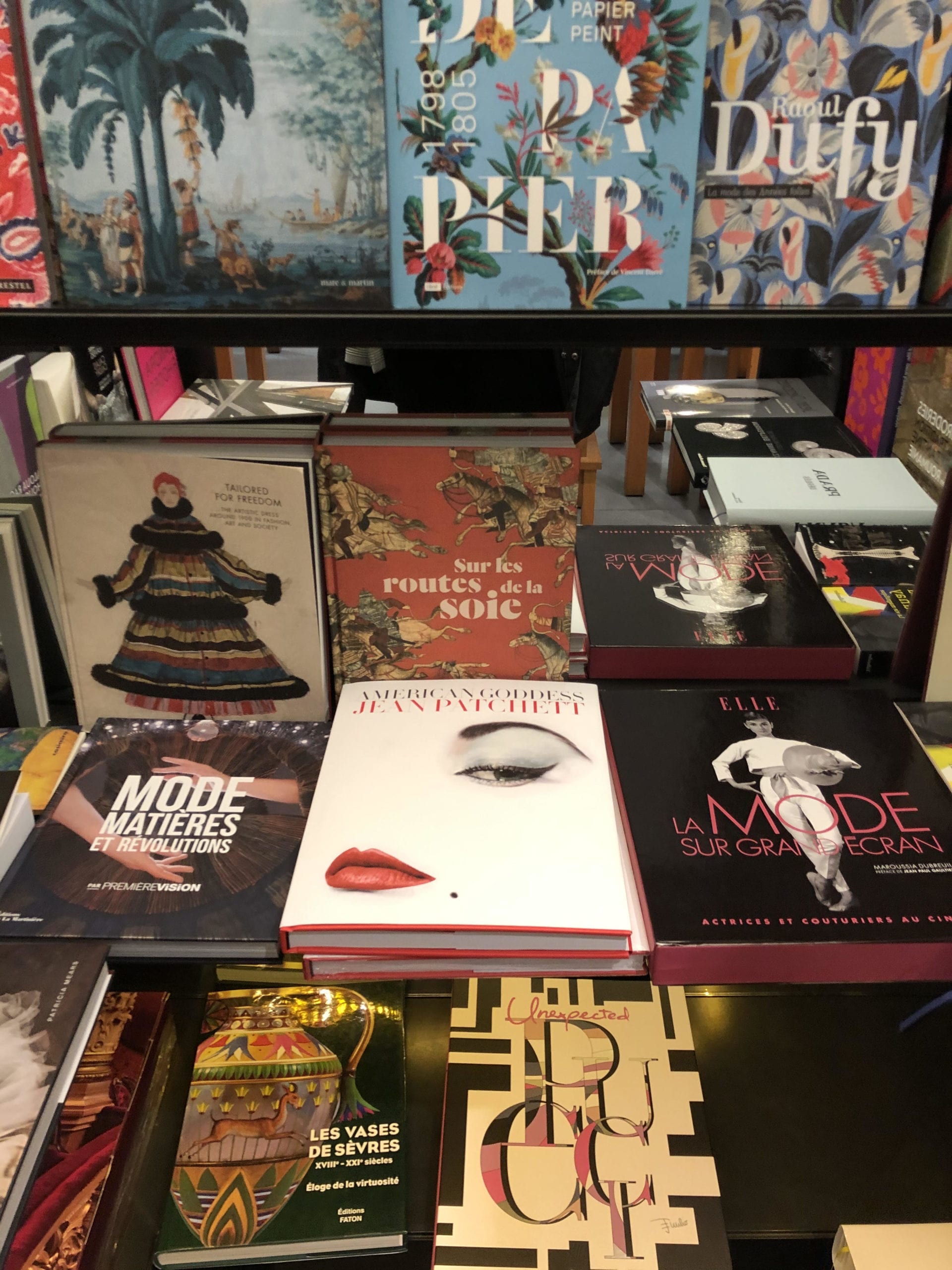
“I have a fatal attraction for books. A disease I don’t want to be cured of…I could not live without them” – Karl Lagerfeld
About 20 years ago, I was at Rizzoli’s bookstore at its old location on 57th Street in NYC. I was standing in the photography section on the skinny 2nd floor mezzanine when I saw a flurry of activity right next to me. There was Karl Lagerfeld taking book after book from the shelves and placing them in an ever-growing pile in the arms of his strong assistant. I was trying to emulate this master at his very own bookstore but had to limit myself to 5 books as there was only enough space in my suitcase.
Karl’s personal book collection numbered well over 300,000 volumes. And the majority of those books were in his private library behind the door in the back of this bookshop. Oh, how I would have loved to have gone through that door to see the double height studio packed floor to ceiling (and 2 floors) with books. He even built bookcases over every door to house more books. This is something I also did in my small Brooklyn apartment. You have to use space where you can find it. Legend has it that he stacked his books horizontally rather than vertically so that he didn’t have to tilt his head sideways to read the titles. He had a sofa that went on for practically the length of the room and an equally long coffee table to match filled with magazines from around the world. Come to think of it, I should have snuck into the library so that I could happily stay there during the quarantine. Don’t they say that “books feed the soul”? I would have been set. Sadly, Karl died a year ago and his estate is still being sorted out. Apparently, he was so keen of living in the moment that he made no plans for the future of his estate. I join the growing chorus of voices asking that this special place be turned into a research library so that this cornucopia of art and design tomes can be enjoyed by all.
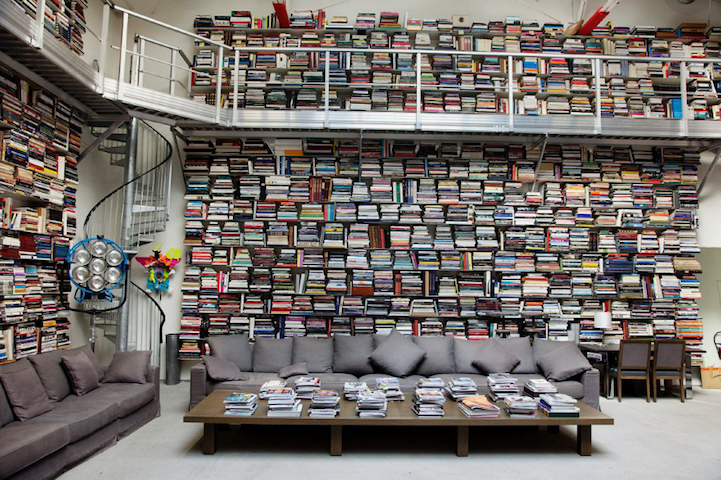
After once again closing down a store (this seems to be a recurring theme for me) I head back to my hotel to read a book before falling asleep and thinking, “When I die, I want to go to Karl Lagerfeld’s library”.
To be continued … à suivre….et à bientôt!
📸 by Jennifer Gyr
Featured image: Antonio Luce

Jennifer Gyr is a Creative Consultant at Par Excellence. After obtaining a degree in Art History and Photography, she was a Helena Rubenstein Intern at MoMA in NYC and she completed the “Works of Art” course at Sotheby’s in London. She then worked for several years at the photography gallery Hamiltons Gallery in London and at Hyperion Press and Keith de Lellis Gallery in NYC. She was a private photography dealer for many years and served as an archivist and curator of a private photography collection in NYC. She also archived the estate of the photographer Horst P. Horst. She has curated several exhibitions and consulted on numerous photo books and exhibitions including with The National Portrait Gallery in London. When not seeking her next travel inspiration she lives in Brooklyn with her Swiss husband.
Share
Paris on my mind by Jennifer Gyr - Day 3
By Jennifer Gyr
I fell in love with Paris when as a teenager I was watching Audrey Hepburn swan through the ville lumière in the movie “Funny Face”. Over the years I have been so lucky to make many trips to this enchanted city with friends and family. My trip in late February was the first time I was in Paris by myself with my limited French vocabulary of “Bonjour”, “Merci” and “Au Revoir” (which even then I would speak in a whisper so that my Southern accent wouldn’t decimate the beauty of the language).
What a magical week it would be. As Audrey said so perfectly, “Paris is always a good idea”!
I am staying on the Left Bank in the 7th arrondissement, one of my most favorite areas of Paris. I picked my hotel, Le Saint, as it is right on the edge of the Carre Rive Gauche which is only a few blocks wide and you can walk everywhere as it is so centrally located. Today I am meeting friends for a gallery tour of the area. I quickly have a coffee downstairs in the breakfast room of the hotel, and I look out the window as Parisians walk by starting their day. It seems like no one is ever late for an appointment here as the pace can be quick but is never hurried. In NYC, we always seem to be running down the sidewalks, always somewhere we need to be in a haste. It is one of those brisk February mornings, and I notice how everyone has their scarves tied in such different and elegant ways. From the young student walking to class to the businessman heading to a meeting, the scarves are wrapped around their necks like sculptures, giving them an effortless chic. Whenever I wear a scarf, it ends up looking like it blew through the wind and landed on me haphazardly.
My hotel is located on Rue du Pre aux Clercs, which translates to “The Meadow of the Clerics”. Apparently in Medieval times, this area was a large meadow and was the site of an old dueling ground. If these grounds could talk… On the way to meet my friends, I stop in a small shop around the corner. What I thought would be a small tabac (the French version of our own corner deli) is instead like going through Alice in Wonderland’s looking glass. One can buy shampoo there, but also wine, cheese, baguettes and the most decadent looking desserts. It gives a whole new meaning to “I am just popping to the corner shop for some milk” (with dessert on the side for good measure).
I then walk one block further and turn the corner onto Rue de Verneuil and see the most glorious shot of color on a dreamy Left Bank street: A “graffitied house” stops me dead in my tracks. As I walk closer to the front door, I see a sign by the bell saying “Gainsbourg”. This was Serge Gainsbourg’s house! The celebrated French singer and icon moved in here in 1969 with his beloved muse Jane Birkin (she would eventually move out later). He lived there until he died in the house in 1991. Its outer wall is an ever-evolving tribute in graffiti and art. His daughter, Charlotte Gainsbourg, has left everything intact inside, just as it was when her father died. Even the butts of his favorite Gitanes cigarettes are still in the ashtray by the piano where he composed many of his famous songs. Serge had all the walls and ceilings of the interior painted black to give him a calming and cocoon like feel. He lived all day with the lights on, so day to night was a blur. Although he was a celebrated musician, he aspired to be a painter. It is fitting that his home’s exterior is a painted homage to him, a living memorial.
I arrive at my friends’ gallery a few minutes late, breathless from my recent discovery. In Paris there is always a magical discovery to be made. My lovely friends Jean-Louis and Aude Herledan own the beautiful 1831 Art Gallery. Aude is a painter and sculptor and I was so pleased to finally see her work in person. After a delicious lunch at a local bistro (with wine of course), we bid adieu to Aude, and Jean-Louis and I set off on an afternoon tour of the neighborhood’s arts and antiques galleries. Jean-Louis is the President of Carre Rive Gauche, an organization representing over 100 arts and antiques galleries located in the heart of the 7th arrondissement. This arts district forms the perfect square as it is bordered by Quai Voltaire, Rue des Saints-Peres, Rue de l’Universite and Rue de Poitiers. It is next door to the Musee d’Orsay and right across the River Seine from The Louvre. As Thomas Jefferson so aptly stated: “A walk about Paris will provide lessons in history, beauty and in the point of life”. I had the perfect tour guide to see about 7,000 years of decorative arts within a few small blocks. I must mention that during the tour I was so caught up in meeting all of the dealers and hearing about their gallery and looking at top pieces that I didn’t take a single photo. I was definitely “living in the moment”. All of the photos here were taken later when the galleries were closed and I took photos of the storefronts.
“A walk about Paris will provide lessons in history, beauty and in the point of life” – Thomas Jefferson
In the course of about 4 hours, we visited around 20 galleries and I could have spent several days more immersing myself in all of them. I saw exceptional antique French clocks from the Louis XIV-Louis XVI periods at La Pendulerie, ceramics from the 17th and 18th centuries at JM Bealu & Fils, paintings by Madeline Grenier at Galerie Antoine Villeneuve, furniture and objets d’art from the 17th-19th centuries at Philippe Vichot, antiques and decorative arts from 1890-1970 at Galerie Lafon-Vosseler and marine and science objects, canes and curiosities at Galerie Delalande. At Gabrielle Laroche they show furniture and sculpture from the Middle Ages, Renaissance and the 17th century. I was so inspired to see up close a French Renaissance cabinet with perspective carving. It brought back my days of being an art history student and learning about perspective in art and to see a fine example from that time period was a revelation. After viewing the museum quality European paintings from the 16th-19th centuries at F. Baulme Fine Arts, Monsieur Baulme brought me downstairs to the basement of his gallery on the Quai Voltaire and showed me a secret door hidden behind a curtain. The door led to a passageway where in the old days one could bring their small boat from the Seine and dock inside the basement area. That was such a wonderful surprise! Next door to the gallery we passed Magasin Sennelier. It is a famous art supply store that opened in this spot in 1887. They sold art supplies to artists such as Cezanne, Degas, Gauguin, Pissarro, Soutine, Modigliani, Kandinsky, Bonnard, Picasso and Karl Lagerfeld among others. The colors they sold were once hand-milled behind the store in a workshop and they even invented several colors including Coral Pink, Cinnabar Green, Helios Red and Chinese Orange. David Hockney used the colors Helios Red and Chinese Orange in his “Grand Canyon” (1998). It is still a much beloved store today. As Jean-Louis and I made our way down the Quai Voltaire at the end of a very inspiring day, we reflected on how wonderful this area of Paris is with its rich artistic heritage. It has long been a haven for all types of artists to live and work such as Juliette Recamier, Charles Baudelaire, Amedeo Modigliani, Alexandre Dumas, Jean Auguste Ingres, Max Ernst, Oscar Wilde and Serge Gainsbourg. They all imbue the spirit of the neighborhood.
“I was so inspired to see up close a French Renaissance cabinet with perspective carving“
With Juliette Recamier in mind, I head off to meet my friend Maik at the nearby restaurant Le Recamier. The restaurant is tucked away on a pedestrian only side street in the heart of St Germain. Only once we settled into our seats and I looked at the menu did I realize why this place is such a beloved Parisian institution. The entire menu was full of souffles! Ok, there might have been a few salads and a meat dish but I quickly realized we could eat an entire souffle meal with both savory and sweet choices. For our main course, we shared a delectable lobster souffle and a mushroom souffle. Sharing is highly recommended as you must taste each flavor. The souffles were like airy clouds and both the lobster and mushroom felt light and creamy. For dessert I couldn’t wait to try the caramel salted butter souffle and then Maik’s choice arrived. A Grand Marnier souffle with an entire bottle of Grand Marnier placed on the table to be able to pour the liqueur over the souffle yourself with no limits (and the bottle was not taken away for some time). Needless to say, we lingered over these treats a long time. It was the perfect way to end this lovely day.
To be continued … à suivre….et à bientôt!
📸 by Jennifer Gyr

Jennifer Gyr is a Creative Consultant at Par Excellence. After obtaining a degree in Art History and Photography, she was a Helena Rubenstein Intern at MoMA in NYC and she completed the graduate “Works of Art” course at Sotheby’s in London. She then worked for several years at the photography gallery Hamiltons Gallery in London and at Hyperion Press and Keith de Lellis Gallery in NYC. She was a private photography dealer for many years and served as an archivist and curator of a private photography collection in NYC. She also archived the estate of the photographer Horst P. Horst. She has curated several exhibitions and consulted on numerous photo books and exhibitions including with The National Portrait Gallery in London. When not seeking her next travel inspiration she lives in Brooklyn with her Swiss husband.
Share
Hervé Obligi, stone sculptor and marquetry artist
Surrounded by amethyst, rock crystal, Tuscan paesine, jade, Armenian obsidian etc. Hervé Obligi exercises a rare profession where the mineral world serves as raw material. Signatures Singulières had the pleasure of meeting this artist of immense talent in his studio in Montreuil.
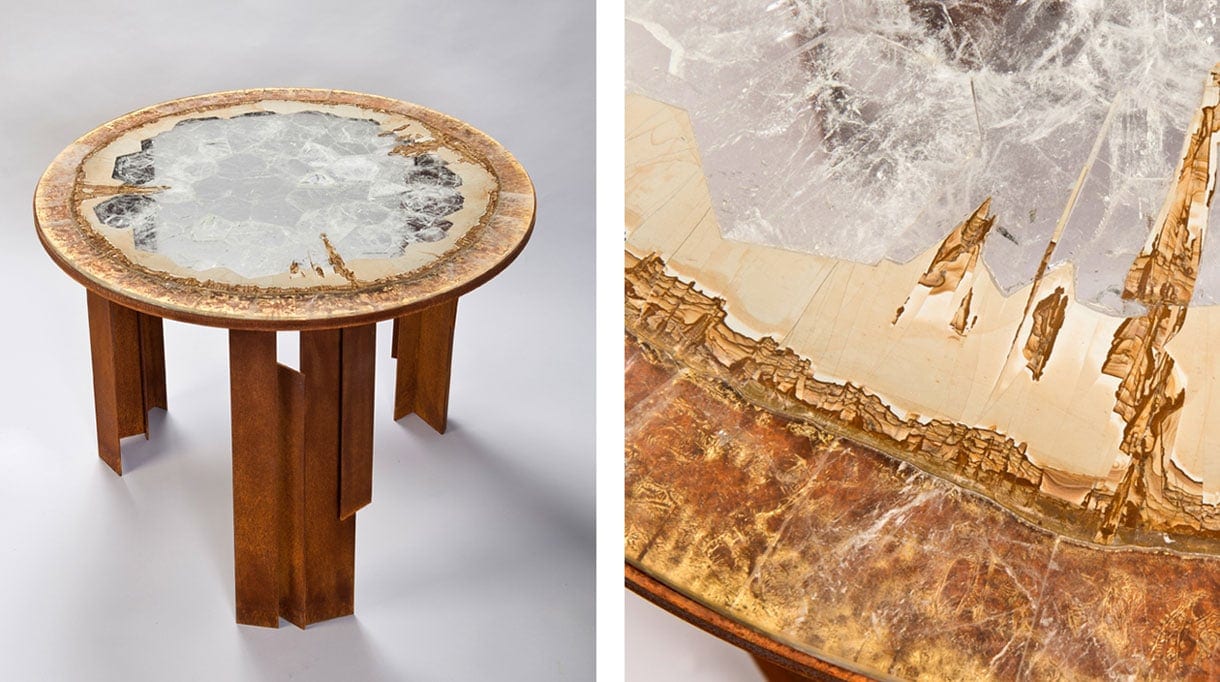
Art and technique
Both craftsman and artist, he works with stone in his workshop in Montreuil. Born in Champagne, this cabinetmaker by training began by working in marquetry and wood carving. But over time, he became a specialist in the cutting of hard stones. In addition, his talents in this area are numerous.
On the one hand, he restores 18th century objects for the Palace of Versailles and the Louvre. On the other, he responds to orders from the Orsay quay and French embassies (New York, Washington, Geneva ONU, London, Moscow, Beirut, etc.).
Most recently, he set about restoring the pavements of the Hotel de la Paiva in Paris. In addition, Hervé Obligi creates unique pieces like these hard stone decorative panels for the French Embassy in Gabon. He also works with big names in jewelry, clocks for Cartier and watches for Piaget.
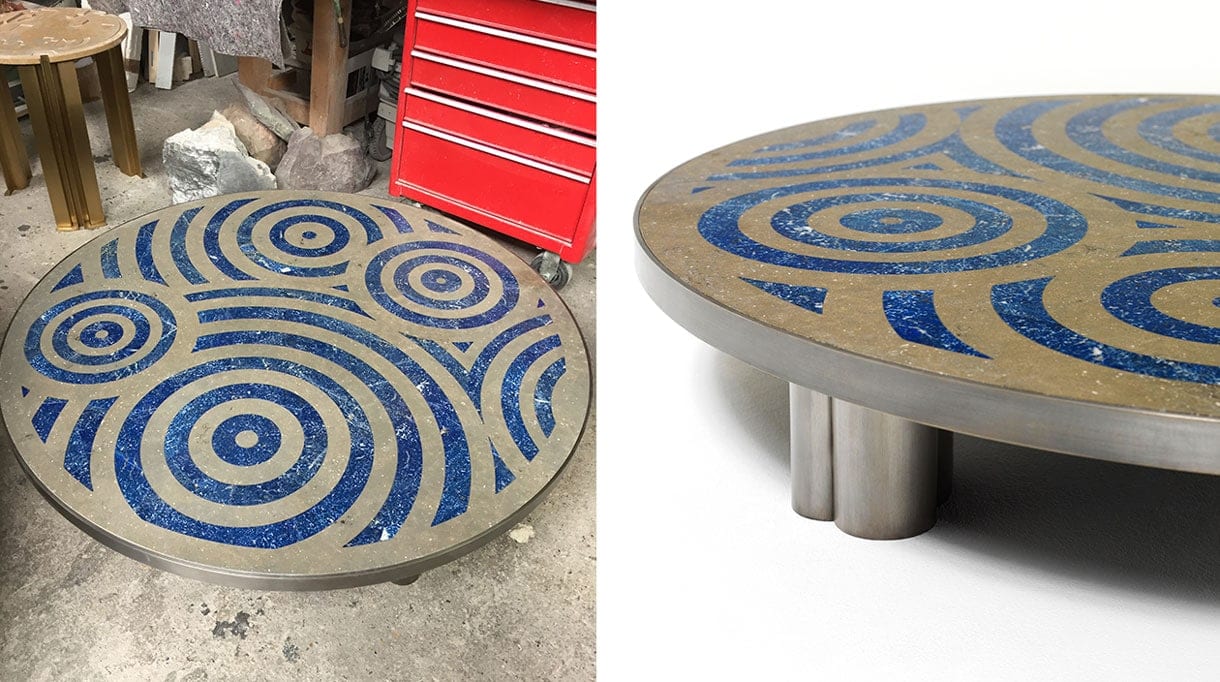
A vast creative universe
Among Hervé Obligi’s creations, there are precious watch faces but also extraordinary fountain pens designed as real sculptures. Or a table made of rock crystal, Tuscan paesine and gold or in Lapis Lazuli and marble stone from Buxy. In addition, many mysterious creations are added to the already long list of his achievements. Without forgetting his participation in a number of works with international decorators and antique dealers! Finally, he exhibits in many countries and since 2016 he has been represented in New York by the Maison Gérard gallery.
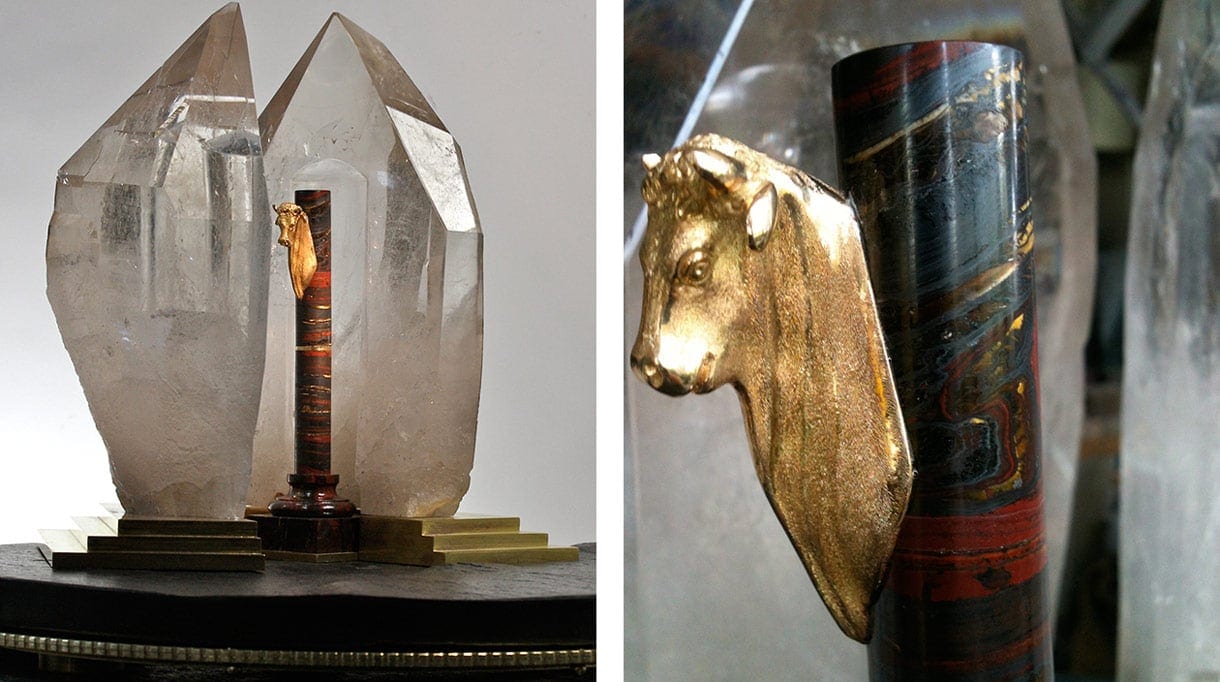
A unique and ancestral know-how
This art of engraving on hard, precious or fine stones with nuances and unique properties, is called glyptics. This includes the size, and the hollow sculpture (intaglio) or relief (cameo). Glyptic know-how is recognized in France by its inclusion in the inventory of intangible cultural heritage. For this reason, appointed Master of Art in 2015, title awarded for life, Hervé Obligi will notably have the mission of transmitting the excellence of his knowledge and skills to a student of his choice.
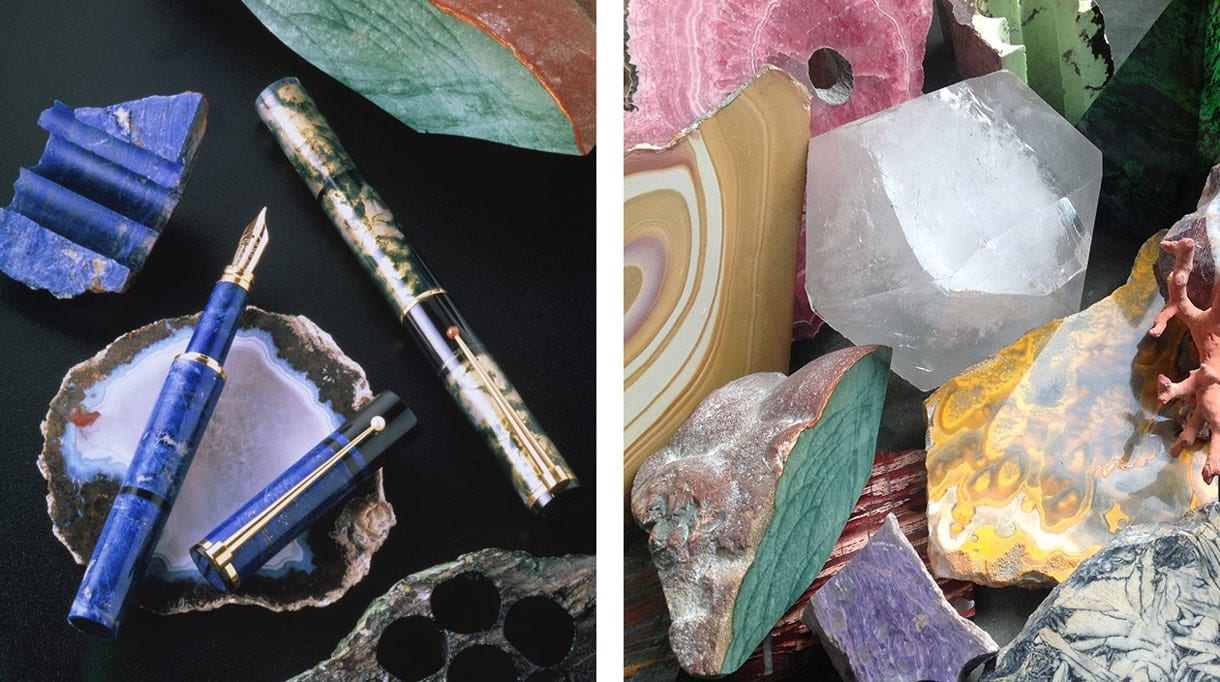
Share
"What Inspires Me" with Etienne Gounot
Etienne Gounot and Eric Jähnke, two former industrial engineers, created together the company Ozone in 2000. Their concept is based on close collaboration with architects and private individuals to find the perfect lighting. Ozone creates its own lights: chandeliers, ceiling lights, suspensions etc. And some of their products are signed by Michel Boyer, Jean-Michel Wilmotte, Joseph Dirand, Pierre Paulin, Régis Botta and more recently Glenn Sestig. Their products combine Parisian artisan tradition with the latest LED lighting technologies which makes them so unique.
A few years ago Ozone joined the Par Excellence collective in NYC. Thanks to this, we often have a glimpse at Etienne Gounot’s poetic universe. We decided to dive deeper to understand his inspirations and the way he perceives the world around him through a series of photos.
You seem to take a lot of pictures and videos that we can sometimes find on Ozone’s Instagram account. This help us to have a glimpse at your daily inspirations and obviously light, colors, shadow, highlights and reflections are in the spotlight.
Yes I enjoy taking pictures both professionally and in my daily life. Photography captures light. Light reveals space and forms. The link between photography, light and design is strong. However light is immaterial, it always ripes from the vision of the photographer. I felt in this endless pursuit of light. I also use pictures as memories of particular moments when I feel a special atmosphere, a deep connection with myself and the environment.
Social medias only fit to a certain category of pictures due to the small screen sizes and the very quick « consumption » by the spectator. The two have selected are more destined to large prints.
Could you describe 2 or 3 of your favorite pictures you have taken in your life?
I love Nature in black and white. I find green not renders so well on pictures. When transformed into grey, it evokes stone or metal. In this picture I love the misty atmosphere of Réunion Island and the mystic light pouring from above.
The second picture is shot during my favorite period of the year, my summer vacations in Greece. The sunsets are gorgeous there. Accidentally the camera did not focus, producing an attracting blur effect, like a dream of light.
Where does this desire to design and create comes from?
I think the majority of people have a desire to create, design and craft. In our world of increasing virtuality, technology and standardized consumption, we feel a growing separateness between us and the world, which sometimes arouses loneliness and despair. The connection to the materiality, the expression of ourself, the production of something real that we can see and touch fills this gap. Self-esteem and meaning of life are then restored.
But few decide and succeed to live on it. We decided with Eric to live on our creation when we started Ozone 20 years ago. From a handmade table lamp that gave me my first emotion, we have developed a complete design, collection and manufacturing project.
What is one of your favorite Ozone’s creation? Could you describe it with your own words and explain why you chose this one?
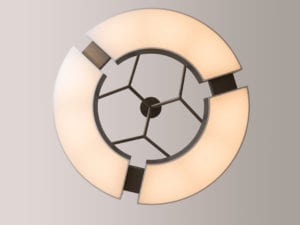 Classique V is one of my favorite creation. It is real creation à deux, reflecting both personalities of Eric and me. As a result, it blends in almost every interiors, from a classic heritage to a modernist or minimal apartment. The bold ring contrasts nicely with the organic hanging branches. The delicate paper shade matches well with the sharp polished metal. And the diffused warm light is divine.
Classique V is one of my favorite creation. It is real creation à deux, reflecting both personalities of Eric and me. As a result, it blends in almost every interiors, from a classic heritage to a modernist or minimal apartment. The bold ring contrasts nicely with the organic hanging branches. The delicate paper shade matches well with the sharp polished metal. And the diffused warm light is divine.
Tell us about a view that you can’t get enough of, that strikes you every time?
The perspectives I can catch at the Palais Royal in Paris are striking. It is almost abstract, focus points can hardly be seen. Light through the columns is always changing and plays with them in a spellbinding rhythm. I also feel a strong historical background there.
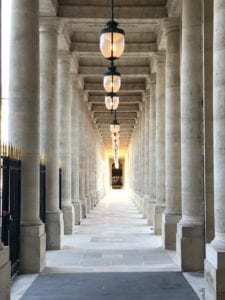
What is the project you are the proudest of and what would be your dream project?
Monsieur Bleu may be the project of which I am the proudest. It is the synthesis of our link to the past with Michel Boyer, to the present with Joseph Dirand, and to our philosophy of lighting a space: Ultra warm light diffused by large shades, producing sunset-like feeling. It is now an iconic place.
As for a dream, I look forward to collaborating in such project in NYC!
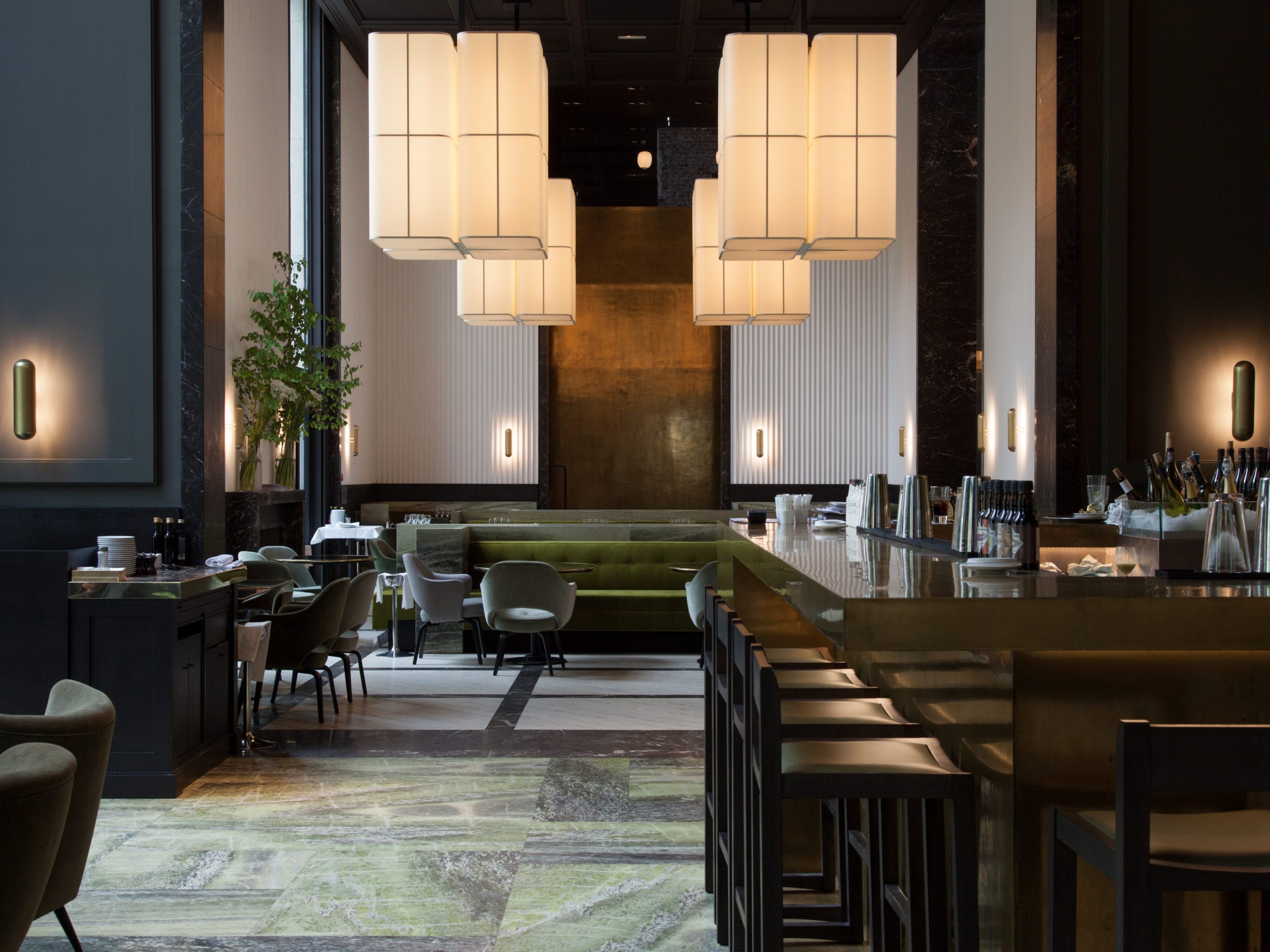
What is the artwork you own that you are most proud of?
I am not particularly proud of possessing some artworks. They just help me to live.
Can you disclose something about yourself that might surprise us?
I do not really like objects. My dream space is almost empty. Spirituality is for me above materialism. But I am not sure it surprises you.
Can you talk about your collaboration with Glenn Sestig and your recent work on the Tennessee collection?
At the first meeting with us, 10 years ago, Glenn immediately appreciated the geometric style and the high quality of our lights. Since then, he has collaborated with Ozone on several residential projects in Europe.
In 2019 the idea of developing a new collection for Ozone was born. It will be called Tennessee as a tribute to great outdoors, cult American music and Tennessee Williams. After Michel Boyer, Joseph Dirand, Régis Botta, Jean-Michel Wilmotte, Pierre Paulin, Eric and me, Glenn Sestig joined the Ozone designer team!
The new Tennessee collection gives shape to Glenn Sestig’s passion for light, rhythm and refined finishes. Combining force and sophistication, the lights are designed to fit seamlessly to his projects. The soft, round paper shade contrasts well with the rigorous construction of the fixture. It embeds a warm and efficient light studied by Ozone. Available in 8 models of wall lights and pendant lights, the collection is architectural and decorative at the same time. The arrangement of identical light modules brings rhythm and warmth to the space. The models are available in bronze and gunmetal finishes.
Glenn Sestig has built his collection on Ozone’s renowned expertise in fine lighting and careful manufacturing.
Dive into Etienne Gounot’s universe through Ozone’s instagram account
Discover Ozone’s products and projects here
Share
Paris on my mind by Jennifer Gyr - Day 2
By Jennifer Gyr
I fell in love with Paris when as a teenager I was watching Audrey Hepburn swan through the ville lumière in the movie “Funny Face”. Over the years I have been so lucky to make many trips to this enchanted city with friends and family. My trip in late February was the first time I was in Paris by myself with my limited French vocabulary of “Bonjour”, “Merci” and “Au Revoir” (which even then I would speak in a whisper so that my Southern accent wouldn’t decimate the beauty of the language).
What a magical week it would be. As Audrey said so perfectly, “Paris is always a good idea”!
Day 2
I traveled to Paris so that I could visit several of Par Excellence’s artisans at their workshops. Today, I was so excited to be heading out of town to see Ateliers Saint-Jacques and to meet up with Pierre-Yves Guenec. I have seen Pierre-Yves so many times in NYC and I was thrilled to finally visit him in his universe. Ateliers Saint-Jacques is located outside the village of Saint-Rémy-lès-Chevreuse which is about a 40-minute drive from the center of Paris and just past Versailles. Pierre-Yves instructed me that when I arrive to turn right through the row of trees past the château and to stop by the tower – I never get these kinds of directions in NYC. When the car turned towards the row of trees and I saw the beautiful château at the end of the drive, I had to pinch myself as I knew I was entering a magical place.

The 300 year-old château located on 160 acres – part of Ateliers Saint-Jacques
Ateliers Saint-Jacques began as a rural trade guild in 1950. It has four master workshops comprised of Metal (metalwork and wrought iron), Wood (joinery and cabinet making), Stone (stone cutting and marble work) and Bronze (art foundry and sculpture restoration). They have over 100 of the highest skilled craftsmen working there along with an outstanding and highly reputable apprenticeship program.
The Stone Workshop :
Our first stop was at the stone workshop where I was able to see blocks of stone being chiseled down to the most beautiful shapes. They were working on a project of a magnificent curving stone staircase for Dior’s store in Paris. To see the rough stone turn into the polished masterpiece makes one marvel at the incredible skill and the artistry of the craftsmen.
The Foundry:
We then headed into the Foundry where they cast bronze sculptures (and do restoration work too). They have made several bronze casts of Rodin’s “Gates of Hell” (“La Porte de l’Enfer”) and restored countless other masterpieces, including the Fontaine Bartholdi in Lyon. It was so interesting to see the several step process in bringing a sculpture to life.
This picture is taken during the building of the final mold, made of ceramic. We can see the black of the wax that will be heated to give place to the bronze and the different chimneys installed to pour the metal and let the gas to escape.
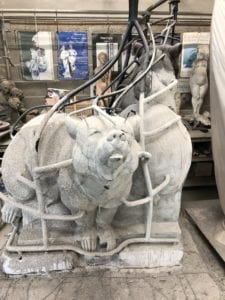
The Wood Workshop:
We then entered the Wood workshop, and I was taken aback by how they could “sculpt” wood into so many beautiful ways.
The Metal Workshop:
I was so impressed and in awe of all of the workshops – and then we walked into the Metal Workshop, and it was like the grand finale! I entered a side room and felt like I stepped into medieval times. Before me was the majestic forge. You could almost feel the heat coming from the embers, even though they were long cooled down.
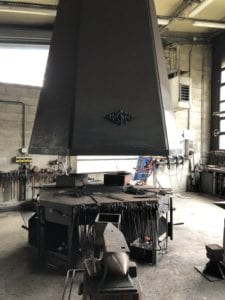
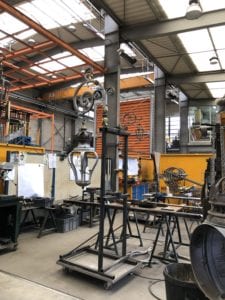
We also visited an area where they were restoring lanterns and decorative ironwork from a château. I loved seeing the drawings and photos lining the wall to aid in their research.
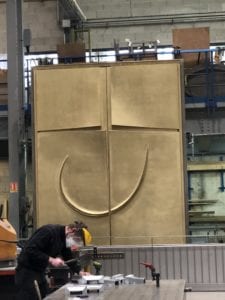
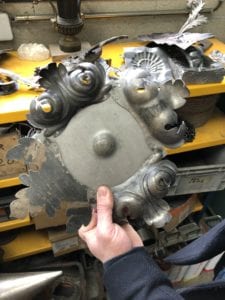
We then rounded the corner, and the largest bronze doors came into view. The craftsmen were hard at work getting it ready to be installed at the cathedral in Liège.
We then proceeded into a metalworking room where Pierre-Yves described how metal is shaped into decorative elements as seen in the four stages in the photo.
Pierre-Yves in the picture is holding the decorative wheel to illustrate the process.
Then I saw the “pièce de résistance”: Ateliers Saint-Jacques is restoring the railing of the balcony to the King’s bedchamber at Versailles, and here it was in front of me. Seeing the Sun King’s visage reminded me of the history that is steeped in these treasures. The photo shows Pierre-Yves pointing out what was original on the gate.
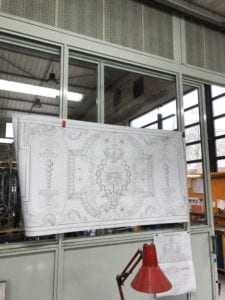
A drawing of the gate: “Those are made by one of our masters as a survey and is the beginning of the entire restoration process. They are originals, hand drawn and new” Pierre-Yves
Ateliers Saint-Jacques has done multiple projects at Versailles. Several years ago, they rebuilt the Royal Gate at Versailles which was destroyed during the French Revolution of 1789 (The photo used with the title of this story shows part of these gate).
After our four hour tour (which flew by!), we had a coffee in Pierre-Yves’s office. I was struck by this model of a fantastical stone staircase. It reminded me of the creativity, artistry and passion I saw in each workshop and with each artisan as they restore the past and bring the future of design into being.

When I returned to my hotel in Paris, I collapsed on the sofa in front of the fire in the living room, invigorated by all of the design and incredible craftsmanship I witnessed today. I picked up a book on the coffee table, “The New Paris”, and started diving into it and couldn’t wait for the next day to begin as I was going to visit more Par Excellence artisans and explore the galleries and shops in the 7th and 8th.
To be continued … à suivre….et à bientôt!

Jennifer Gyr is a Creative Consultant at Par Excellence. After obtaining a degree in Art History and Photography, she was a Helena Rubenstein Intern at MoMA in NYC and she completed the “Works of Art” course at Sotheby’s in London. She then worked for several years at the photography gallery Hamiltons Gallery in London and at Hyperion Press and Keith de Lellis Gallery in NYC. She was a private photography dealer for many years and served as an archivist and curator of a private photography collection in NYC. She also archived the estate of the photographer Horst P. Horst. She has curated several exhibitions and consulted on numerous photo books and exhibitions including with The National Portrait Gallery in London. When not seeking her next travel inspiration she lives in Brooklyn with her Swiss husband.
Share
Paris on my mind by Jennifer Gyr - Day 1
By Jennifer Gyr
I fell in love with Paris when as a teenager I was watching Audrey Hepburn swan through the ville lumière in the movie “Funny Face”. Over the years I have been so lucky to make many trips to this enchanted city with friends and family. My trip in late February was the first time I was in Paris by myself with my limited French vocabulary of “Bonjour”, “Merci” and “Au Revoir” (which even then I would speak in a whisper so that my Southern accent wouldn’t decimate the beauty of the language).
What a magical week it would be. As Audrey said so perfectly, “Paris is always a good idea”!
Day 1
After dropping off my bags at my hotel, I went straight to the Fondation Louis Vuitton in the Bois de Boulogne to see the exhibition, “Charlotte Perriand: Inventing a New World”. Charlotte Perriand (1903-1999) was one of the top French architects and designers of the 20th century and was a pioneer of modernity. The exhibition spanned seven decades of her packed career and practically filled every floor of the fondation. I was in for a treat. In her work she wanted to create functional living spaces in the belief that better design helps in creating a better society. She conceived rooms for the “art of living”.
From left to right
Picture 1: Charlotte Perriand’s iconic tubular chaise longue designed together with Le Corbusier (she was in her 20s at the time!)
Picture 2: A “side by side” chaise longue (one piece of furniture). This would be perfect for our post-pandemic world as you recline in opposite directions. Makes one think of how furniture will be reconfigured in our new way of living after the virus.
Picture 3: Beautiful installation with color and light. A wonderful example of how lighting is so important in design and can be realized in a creative way.
She renovated this apartment when she moved in and she took design cues from Charlotte and had the wooden kitchen table made at a lower height than normal so that the chairs could be used as dining chairs (while another one was used as a living room chair). She also incorporated leather pulls on her cabinets to mimic the leather on the chairs. I love how she blended ideas of mid-century furniture into her contemporary surroundings. A note for those trying to find space – her small freezer is located underneath the dining table inside the wall.
The design surprises kept coming. As a New Yorker always in need of space, I have constant dreams of “finding” an extra room in my apartment that I never knew existed. Well, Maïk found her “secret” room!! During her renovation, the workers were going to install a microwave into the kitchen wall. Maïk happened to be there when they cut the opening out and she put her hand (holding her iPhone) into the opening and took some photos and voilà! There was an amazing space behind the wall with original wooden beams. It turns out that this area was part of the ornamental sculptural elements on the outside of her apartment building. The beams were in good condition and she only had to put in new flooring and insulate and build new walls. Now she has a cozy 2nd bedroom.
They literally had to kick me out of the museum as they were closing. I then headed to meet a friend at her apartment in the 8th for a glass of champagne. Maïk Bouchayer is a real estate agent with a keen eye for design so I was so looking forward to seeing her apartment for the first time. As I entered her 7th floor apartment, I stopped dead in my tracks when I saw the light pouring into the windows, and just beyond was a spectacular view of the Eiffel Tower. My first thought was, “do you need a roommate?”. I then looked to my left and couldn’t believe my eyes. Right in front of me were four Charlotte Perriand chairs! The design gods were smiling. Maïk bought them years ago and they have moved with her to each apartment she has lived in.
To top off such an inspiring visit, we stepped out into her balcony for that glass of champagne and saw this magical panorama of Paris. A perfect way to end my first day.
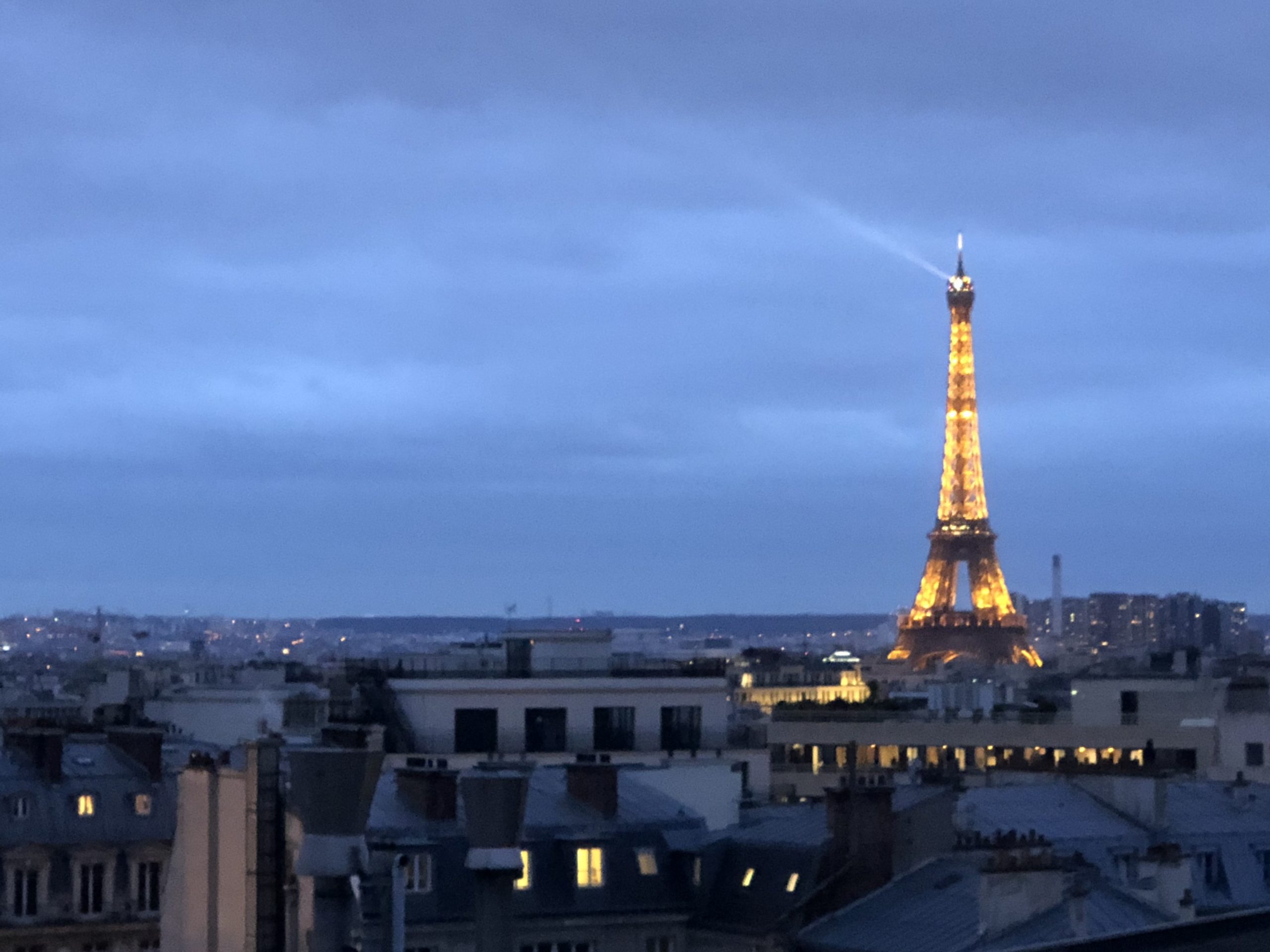
To be continued … à suivre….et à bientôt!

Jennifer Gyr is a Creative Consultant at Par Excellence. After obtaining a degree in Art History and Photography, she was a Helena Rubenstein Intern at MoMA in NYC and she completed the “Works of Art” course at Sotheby’s in London. She then worked for several years at the photography gallery Hamiltons Gallery in London and at Hyperion Press and Keith de Lellis Gallery in NYC. She was a private photography dealer for many years and served as an archivist and curator of a private photography collection in NYC. She also archived the estate of the photographer Horst P. Horst. She has curated several exhibitions and consulted on numerous photo books and exhibitions including with The National Portrait Gallery in London. When not seeking her next travel inspiration she lives in Brooklyn with her Swiss husband.
Share
SHOTnLUST: a digital Art library
Our mission at Par Excellence is to represent the finest French artisans and unveil their exceptionnal know-how. Craftsmanship is for sure closely tied to interior design and architecture, but there is also artistry in the carefully-crafted pieces that our partners make everyday.
Why ? Because they produce works that transcend functionality and that are appreciated for their beauty and emotional power as well.
Therefor, at Par Excellence, we are quite sensible to Art in general and if you’re too, you should deep dive into SHOTnLUST, a digital visual poetic library about Art with a capital A.
If you wanna know about Photography and its masters Peter Knapp, Nan Goldin, Larry Clarck, Diane Arbus, Helmut Newton among others…
If you’re deeply connected to Cinema and references as Ingmar Bergman, Jacques Demy, Elia Kazan, Dennis Hopper or Jim Jarmusch.
If you are obsessed with sculptures, artistic installations, performances, painting, graphic arts and want to know about Marina Abramović and Ulay, Mona Hatoum, Linder and Gordon Matta Clark.
If you feel the need to learn about Dance and Pina Bausch, Akram Khan or Rudolf Noureev.
Finally if Architecture is something that appeals to you, and you want to see how design, art and landscapes are all elements of this dynamic that architecture is, then SHOTnLUST is the place you should explore to rediscover Alvar Aalto, Oscar Niemeyer, Ricardo Boffil, Tadao Ando and Alvaro Siza Vieira.
Share
Sustainable Living & Organizational Design with Clara Sharma
Clara Sharma is a French interior designer and sustainability expert based in New York City. Specialized in sustainable living and organizational design, she has dedicated her career and personal life to Human Rights and the environment for the last couple of years. After turning for a more minimalistic and sustainable lifestyle, she now raises awareness around consumerism through her work as an interior designer and is a proud advocate of minimalism in every way.
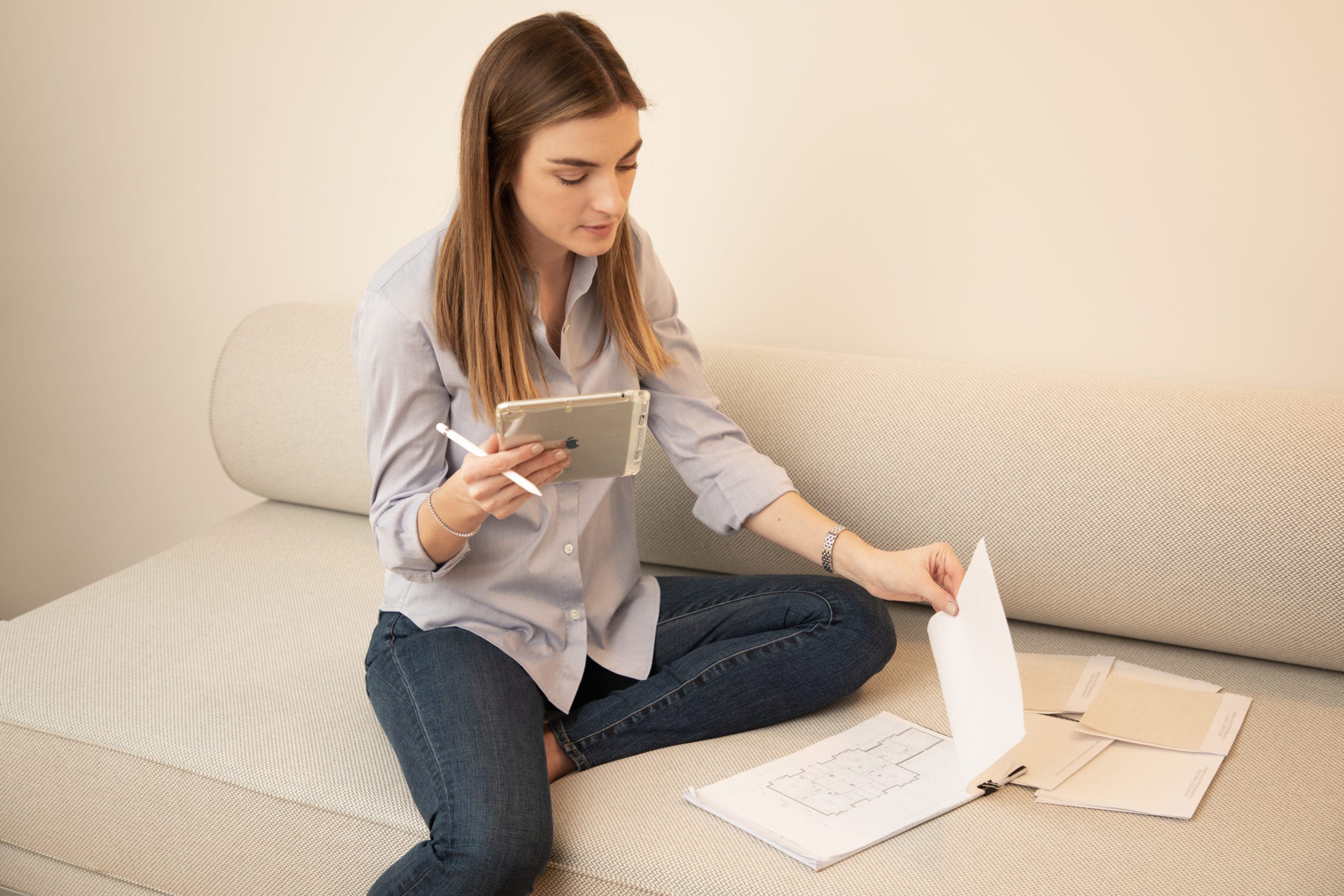
© Alice Prenat – Portrait Madame
Quite impressed by her path and her commitment, we had a chance to have a very interesting chat with Clara Sharma to understand more where it all comes from. Her background as a lawyer might explain her strong will to make things change for the best and to help people grow and expand in their life. Indeed, after studying International Law and Human Rights in France, she pursued her career in NYC and completed a Masters in Human Rights at Fordham University, School of Law, with a major in CSR. She focused her work in the fashion industry. Fond of fashion herself she quickly realized how devastating for the environment and Human Rights this industry is. This was the first trigger and from that she decided to change her habits and educate others through Iconable, her first company founded in 2017 and dedicated to sustainable fashion. The passion around this kind of topic kept growing and Clara realized that she could actually serve a greater purpose, and decided to expand her mission beyond fashion. Over-consumption in general and waste are a real problem and impact the majority of industries. She thus took a step back and reflected on how she could educate people on these issues and teach them means to have a positive impact on our planet and upgrade their life by buying less. Her innate talent for creating peaceful and elegant interior design combining unique fabrics and timeless creations led her to transform one of her friend’s interior keeping in mind her motto “Living better with less”. That was the start of Clara Sharma’s interior design studio that she founded in 2019.
“When you simplify your life, you elevate it.”
For Clara Sharma it is all a matter of 3 main steps towards a clean and sustainable space: de-cluttering, organization and minimalism. People are very receptive, her agenda for the next couple of months is full with interior projects and she is regularly invited to speak at conferences and to offer insights at a growing base of consumers willing to make a change. She is indeed dedicated to the educational aspect of her job; “Consumers are the key to change, they have the power to determine the future of sustainable development”. Although she acknowledges how difficult it can be sometimes for consumers to distinguish between green washing, hidden scandals and true sustainable initiatives, she advises them to adopt a minimalistic lifestyle and reduce their consumption as a solution. The key is to focus on the quality of the purchases by buying lasting second-hand pieces, timeless creations, artisans’products etc., and get rid of the unnecessary amount of goods you own to simplify your space. “ Everything in its place and a place for everything”. Once this message is understood by her clients, Clara Sharma fades in the background and let her customers grow and develop with this new mindset. She insists they often become the best advocates of this cause and always pass on the message around them.
“Consumers are the key to change, they have the power to determine the future of sustainable development”
Driven by minimalist interiors and clear spaces Clara draws inspirations from French designers such as Pierre Paulin or Joseph Dirand. Her curious spirit absorbs countless of color palettes, textures and shapes that she encounters through her travels.
Share
Architecture, Interior Design & Sustainability
The definition of Architecture is the Art of designing and constructing buildings and the one of interior design is the art or process of designing the interior decoration of a room or building. Both modify their environment by transforming or creating space. They aim to improve the quality of life of people in their environment.
Considering their definition, it would be logic that interior design and architecture take into account their environment and include sustainability in their core. And it’s more and more the case!
But first let’s be precise that this article doesn’t aim at telling design professionals to move to sustainable projects only but is more some food for thought, some examples of sustainable architectures or interiors, some principles of sustainability.
Sustainability can be achieved through different ways starting by selecting eco-friendly products or materials. Green architecture is a way to reach sustainability.
For example using trees as a design element is something more and more common as they provide shade, boost air quality, and reduce air-conditioning
Let’s take a closer look to the Oasia Hotel Downtown in Singapour.
The external facade is covered by natural vine. Its four sky terraces comprise 1,793 large planter boxes, and four large structural cores that allow for good cross ventilation reducing the overall energy cost. The hotel, which was designed by the firm WOHA, hosts 33 species of plants!
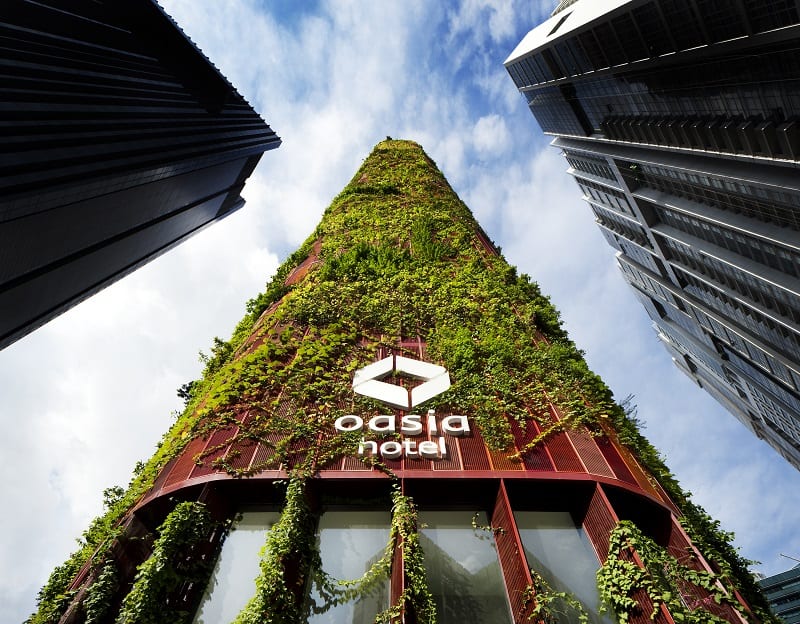
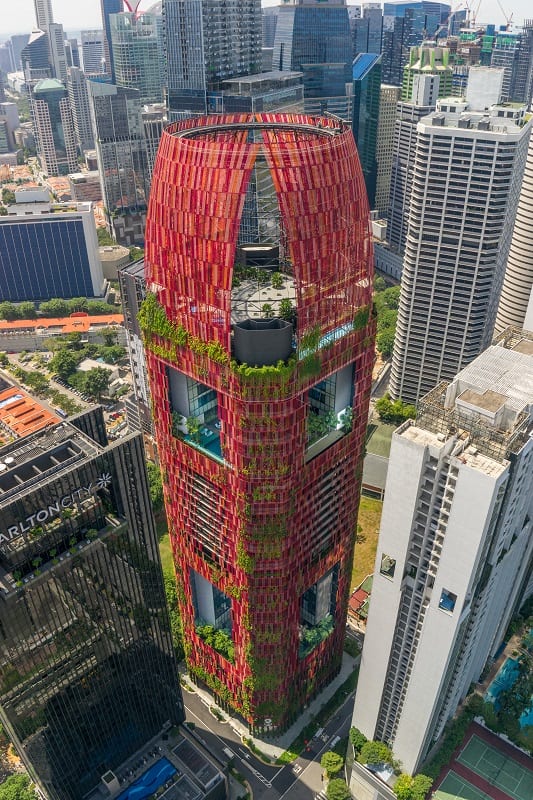
Another example of green building is the Crystal built by Siemens in London which uses natural light as electricity is mainly powered by photovoltaic solar panels. Moreover the Crystal is illuminated by an integration of LED which is switched on and off depending on the amount of daylight.
Finally, the building’s roof acts as a collector of rainwater which can be converted as drinking water.
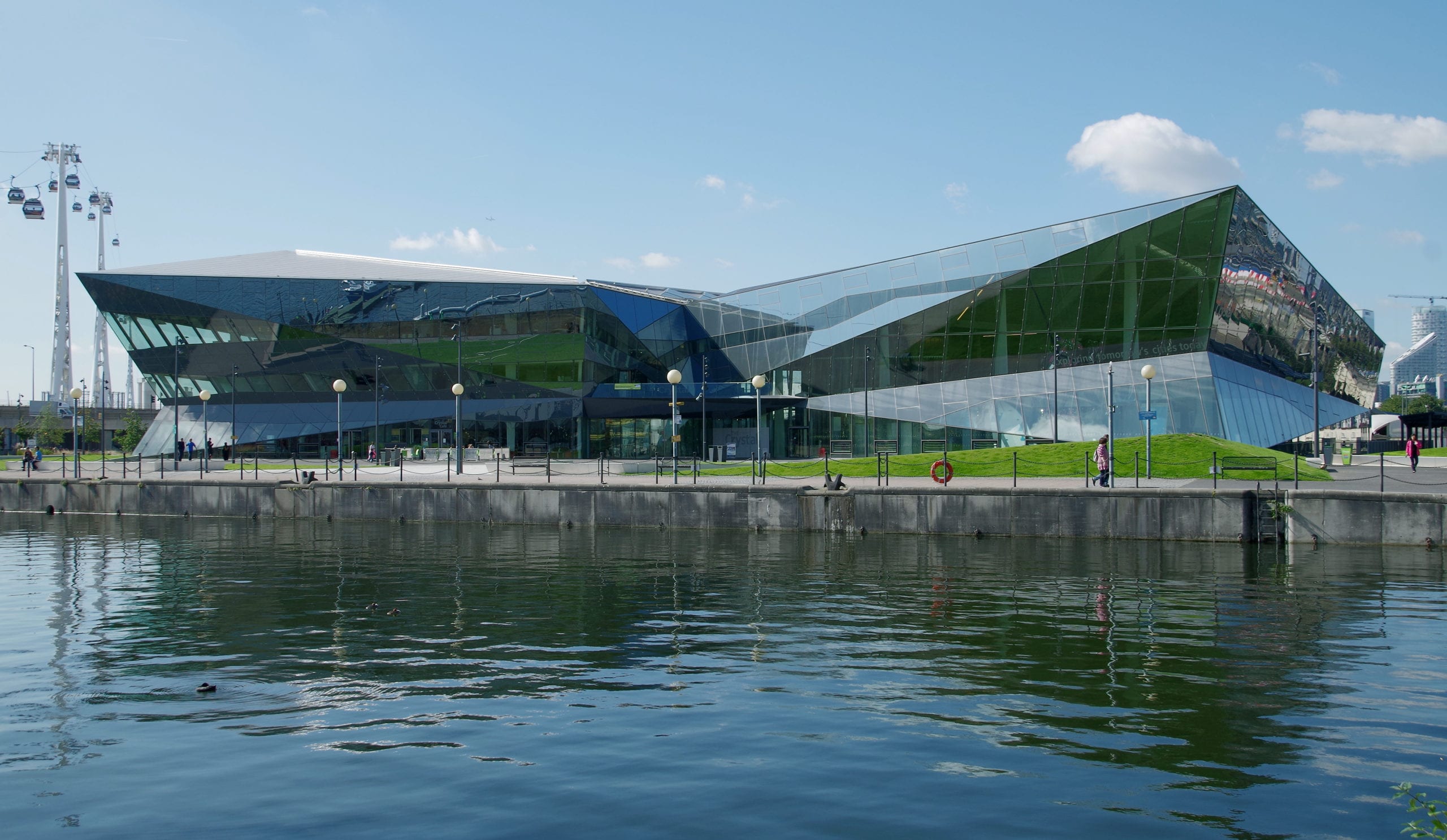
This goal of green architecture has also been materialized over the past few years by the creation of the LEED certification, a rating system that builders, developers, and architects can adhere to. This certification takes into account location and transportation, water inefficiency, energy performance, the materials and resources etc.
Another recognized standard is the Passive House. Originated in Germany in the mid 1990s, Passivhaus, Passive House buildings generally cut energy consumption by 60-70 percent while LEED certified buildings typically use 25-30 percent less energy. Rather than rely on solar panels or wind turbines, Passive House is a building standard focused on the development of properties that use less energy from the start. Passive House is also more accessible as less costly.
Another example of green design which can be seen a bit more “extreme” is the work of Earthship Biotecture which is specialized in self-sustaining homes. Founded by Michael Reynolds, the origin of the project lies in the “thumb house”, a desert dwelling built out of 70,000 discarded beer and soda.
To date, Earthship Biotecture has created around 1,000 energy-efficient houses in more than 40 countries around the globe, ranging from luxury rentals to disaster shelters. Each building generates its own electricity, processes its own sewage, collects rainwater, and maintains temperature without any additional fuel.
His most recent and impressive work is the Villa Bonuco. After a terrible Hurricane in Puerto Rico in 2018, the firm and more than 200 locals gathered approximately $80,000 worth of raw materials and a whole lot of tires into what consist of five Earthship structures centered around a garden.
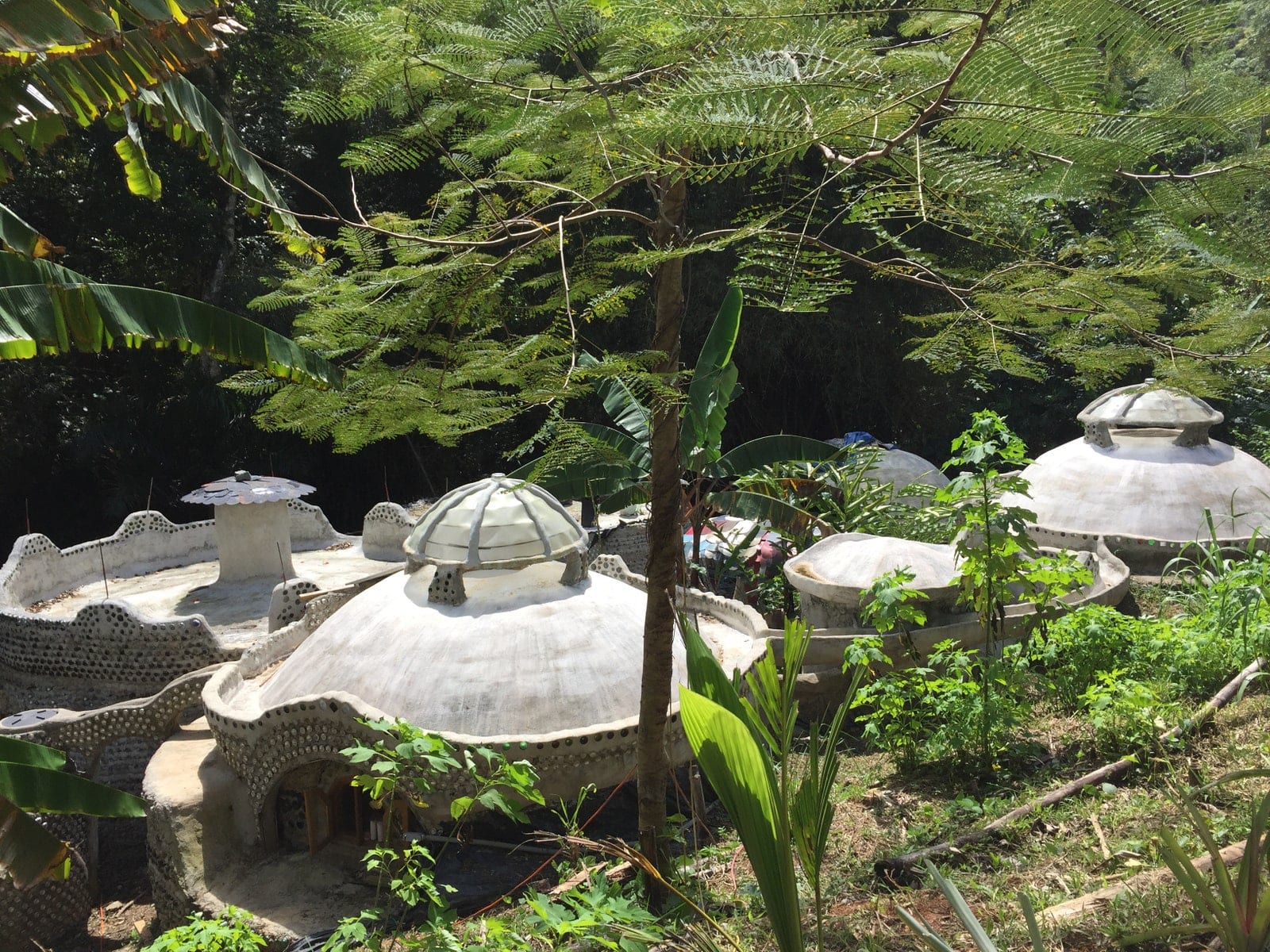
But sustainability is not only about ecology it’s also about social and economic practices.
In this era of mass production & consumption leading to a quantity of waste, people are more and more valuing what they have. This lead us to interior design and craftsmanship.
Unique products or products made in a limited quantity, handmade and with a story that is something that participates to achieving sustainability.
Obviously hand-crafted products are more expensive than mass-produced uniformed ones but despite economic challenges, consumers are more and more willing to pay a premium for creatively crafted products.
Therefore, homes can be responsibly furnished and decorated with carefully-crafted pieces. Why ? because it lasts longer, because their creation imply fewer waste materials as more has been put into the design and creation thinking.
Share
When Art meets Architecture meets History: a Fillmore Structure
When Art meets Architecture meets History.
Let’s take a look at a 6-meter deep stunning sculpture installed in Moxy East Village Hotel. The hotel, which was designed by Rockwell group, celebrates the East Village district, a lively and rebellious center of the American counter-culture at the time. The hotel has been built and decorated as a reference to NYC’s past, present, and future and draws its inspiration from the city’s rock’n’roll culture.
In the quite dramatic and dark designed Cathédrale restaurant, the Rockwell group collaborated with Italian artist Edoardo Tresoldi to create a floating metal sculpture suspended from the ceiling of the room. Made from metallic mesh, the Fillmore was named this way to pay tribute to the Fillmore East, a famous concert hall on the Lower East Side which had hosted groups and musicians among which Jimi Hendrix, The Doors, Miles Davis, Janis Joplin or Neil Young.
Edoardo Tresoldi, included by Forbes among the 30 most influential European artists under 30, is known for his volumetric wire-mesh sculptures that often look like holograms of classical architectures past, such as the Etherea cathedrals at the 2018 Coachella Festival, Archetipo in Abu Dhabi, or the Basilica di Siponto in Foggia, Italy.
All pictures © Roberto Conte

